Portugal - 2016
In July - August - September 2016 we spent 11 days in Portugal on our 49-day Melbourne - Dubai - Paris -
World War 1 Western Front Battlefields - Portugal - England - Wales - Scotland - Dubai - Melbourne trip.
After 11 days in France we flew from Orly airport in Paris to Lisbon in Portugal, a 2¼ hour flight.
Lisbon
Wide, wide busses at Lisbon airport.
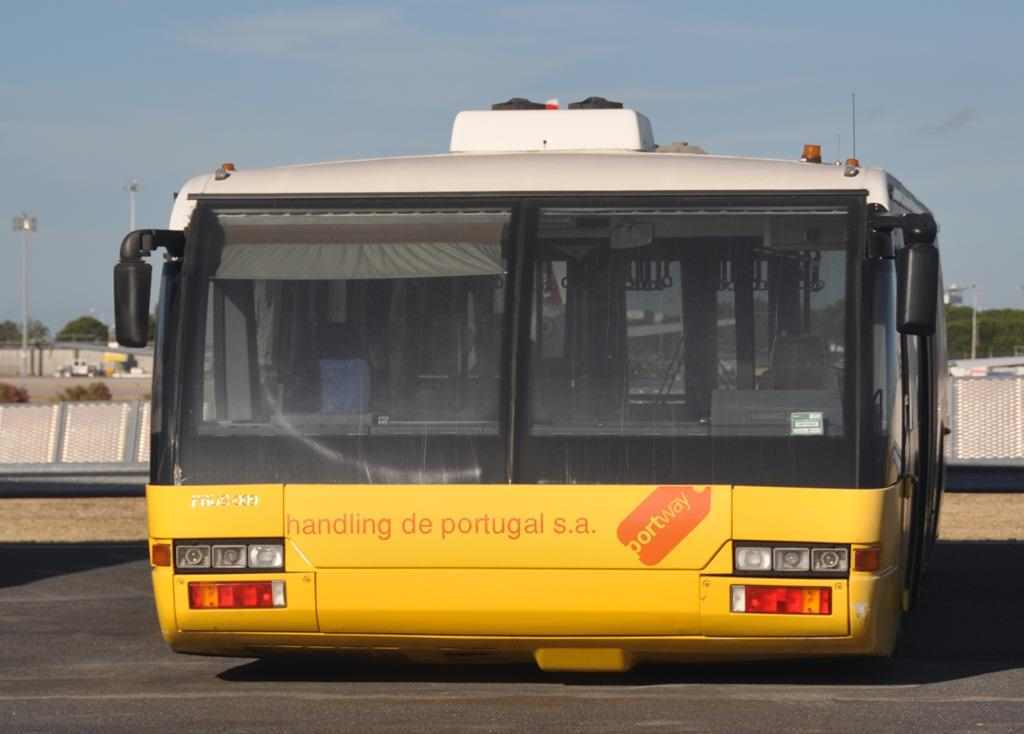
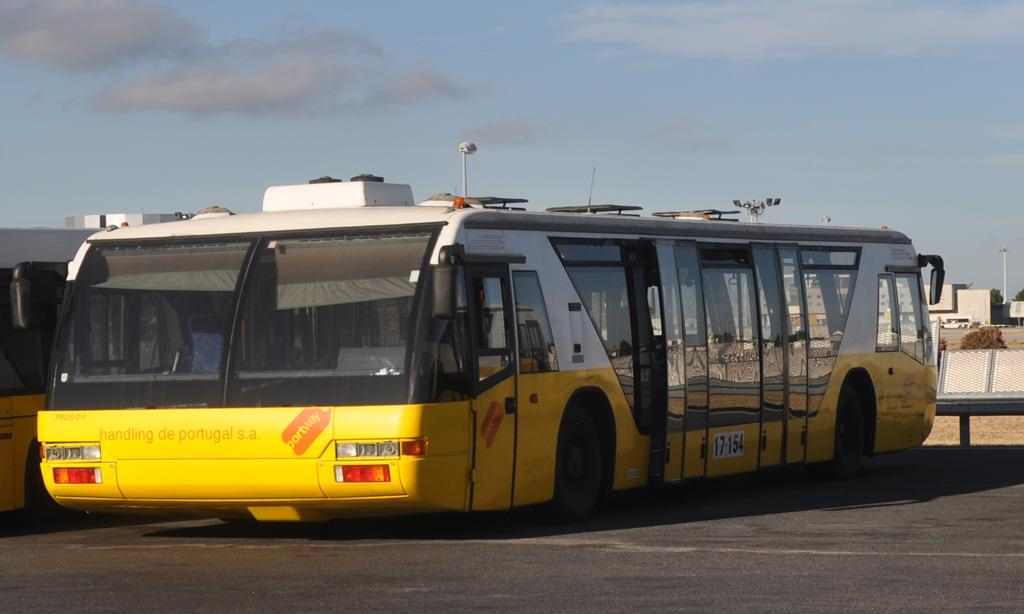
Belém Tower
Belém Tower, is a fortified tower located in the Lisbon suburb of Santa Maria de Belém.
It is a UNESCO World Heritage Site because of the significant role it played in the Portuguese maritime discoveries of the era of the Age of Discoveries. The tower was commissioned by King John II to be part of a defence system at the mouth of the Tagus river and a ceremonial gateway to Lisbon.
The tower was built in the early 16th century and is a prominent example of the Portuguese Manueline style.
The structure was built from lioz limestone and is composed of a bastion and a 30metre,four-storey tower.
The name comes from the name Bethlehem.
It has housed canons, prisoners and ryalty over the centuries.
Its ornamental façade is striking.
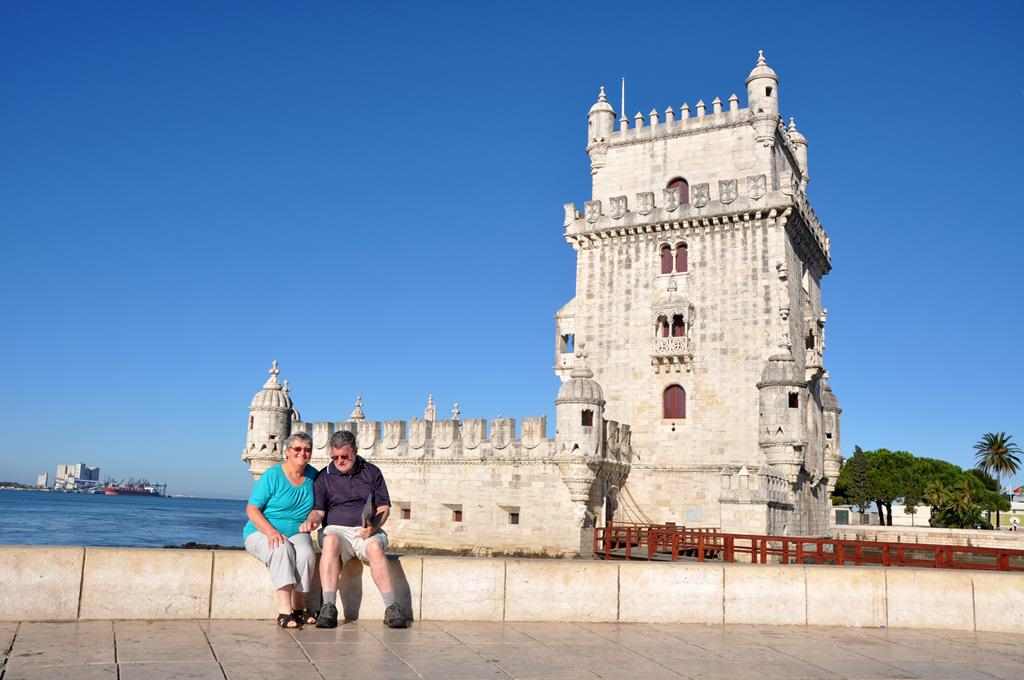
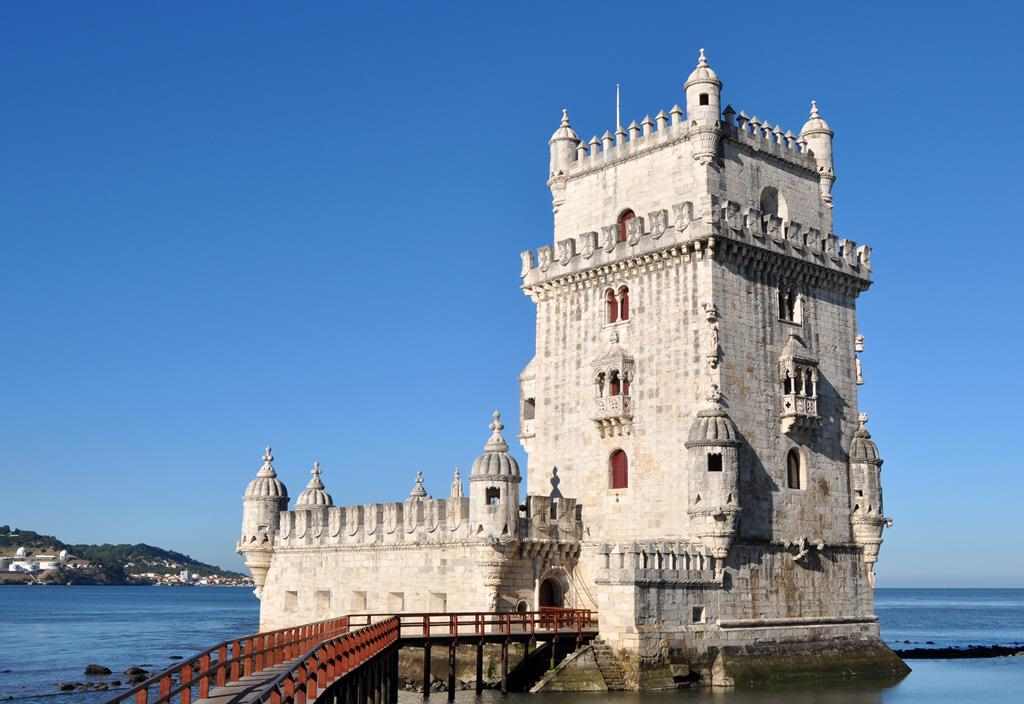
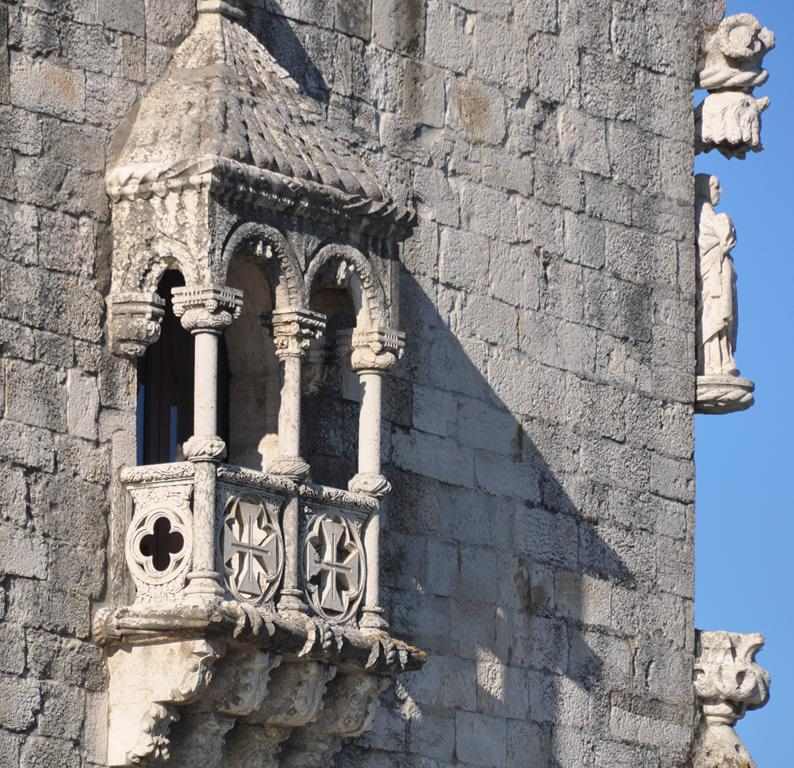
The 25 de Abril Bridge (Ponte 25 de Abril, 25th of April Bridge) connects the city of Lisbon
to the municipality of Almada on the left (south) bank of the Tejo River.
It was inaugurated on August 6, 1966, (its 50 year anniversary was being celebrated while we were in Lisbon) and a train deck was added in 1999.
Because it is a suspension bridge and has similar colouring, it is often compared to the Golden Gate Bridge in San Francisco, US.
It was built by the American Bridge Company which constructed the San Francisco–Oakland Bay Bridge, but not the Golden Gate Bridge.
With a total length of 2,277 m, it is the 27th largest suspension bridge in the world. The upper deck carries six car lanes, while the lower deck carries two train tracks.
Until 1974, the bridge was named Salazar Bridge. The name "25 de Abril" commemorates the Carnation Revolution.
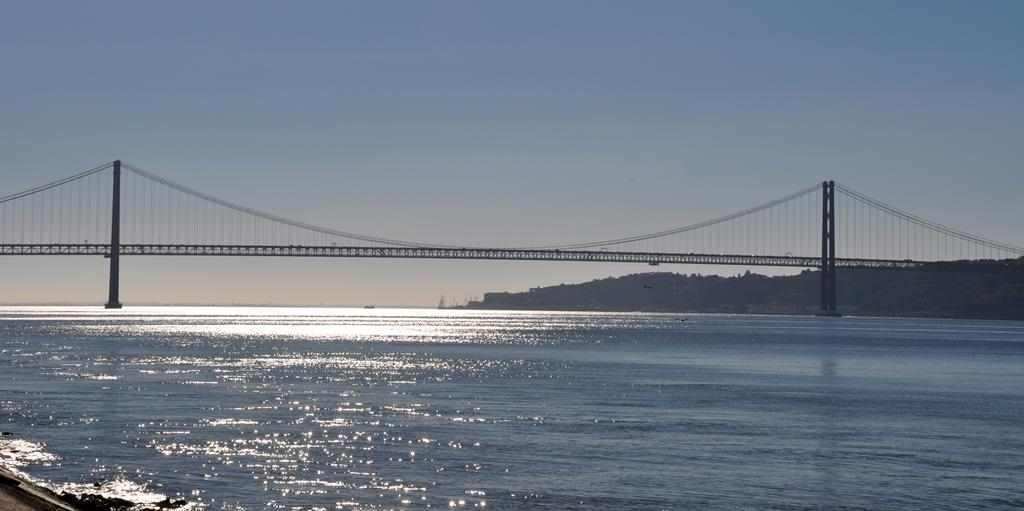
The first aerial crossing of the South Atlantic was made by the Portuguese naval aviators Gago Coutinho and Sacadura Cabral in 1922,
to mark the centennial of Brazil's independence.
Coutinho and Cabral flew in stages from Lisbon, Portugal, to Rio de Janeiro, Brazil, using three different Fairey III biplanes,
and covered a distance of 8,383 km between March 30 and June 17.
The journey started at the Bom Sucesso Naval Air Station in the Tagus, near the Belém Tower in Lisbon, at 16:30 on March 30, 1922
the Portuguese Naval Aviation aircraft Lusitânia. A Fairey III-D MkII seaplane was specifically outfitted for the journey.
In their 1st aircraft they flew from Belém to Las Palmas de Gran Canaria in the Canary Islands, to São Vicente Island, Cape Verde, to Praia on Santiago Island,
and then to the Saint Peter and Saint Paul Archipelago, already in Brazilian waters.
However, when ditching on the rough seas near the archipelago, the Lusitânia lost one of its floats and sank.
The aviators were then carried to the Brazilian Fernando de Noronha islands.
Enthusiastic Portuguese and Brazilian public opinion about the flight led the Portuguese government to send a 2nd aircraft,
another Fairey III seaplane to complete the journey.
The new plane, baptized Pátria, was sent to Fernando Noronha. Coutinho and Cabral flew to the Saint Peter and Saint Paul Archipelago to resume the journey
at the point where had been interrupted.
However, an engine problem forced them to once again make an emergency ditching in the middle of the ocean, where they drifted for nine hours
until being saved by the nearby British cargo ship Paris City, which carried them back to Fernando Noronha.
A 3rd aircraft, another Fairey III – baptized Santa Cruz by the wife of Epitácio Pessoa, the President of Brazil – was sent out to Fernando Noronha
and Coutinho and Cabral resumed their journey, flying to Recife, then to Salvador da Bahia, then to Vitória and from there to Rio de Janeiro,
where they arrived on June 17, 1922, ditching in the Guanabara Bay.
The two men were received as heroes by huge crowds.
Their journey had lasted 79 days; the actual flight time was just 62 hours and 26 minutes
Although the North Atlantic had already been traversed in a non-stop flight by John Alcock and Arthur Brown in 1919,
Coutinho and Cabral's flight remains notable as a milestone in transatlantic aviation, and for its use of new technologies such as the artificial horizon.
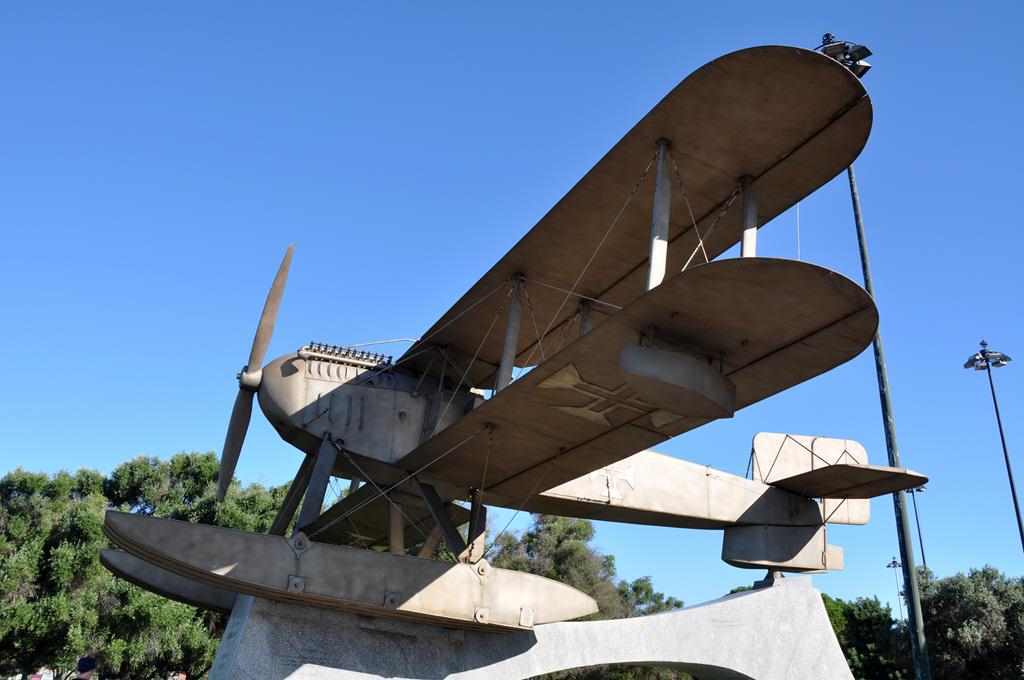
Hieronymites Monastery
King Manuel I built it in 1502 on the site of a hermitage founded by Prince Henry the Navigator,
where Vasco da Gama and his crew spent their last night in Portugal in prayer before leaving for India.
It was built to commemorate Vasco Da Gama's voyage.
Vasco da Gama's tomb was placed inside by the entrance, as was the tomb of poet Luis de Camões,
author of the epic The Lusiads in which he glorifies the triumphs of Da Gama and his compatriots.
Other great figures in Portuguese history are also entombed here,
like King Manuel and King Sebastião, and poets Fernando Pessoa and Alexandre Herculano.
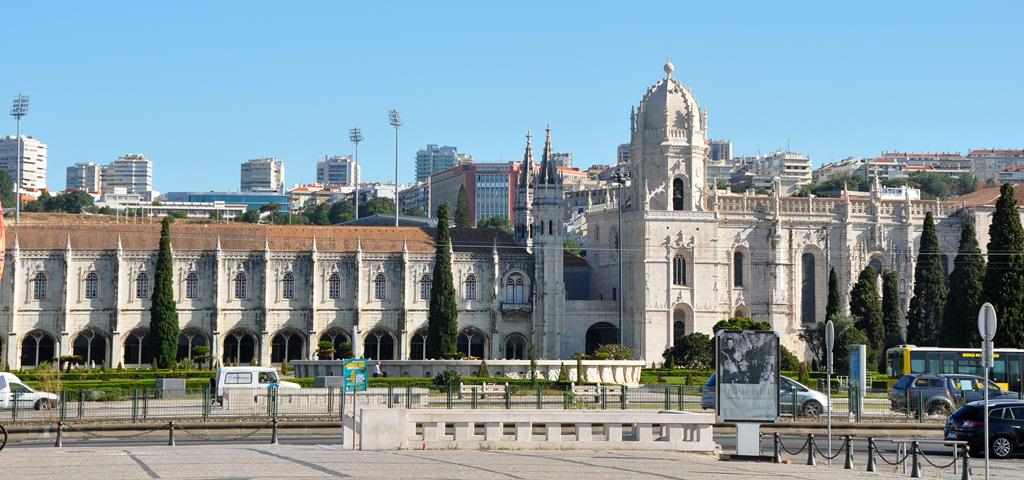
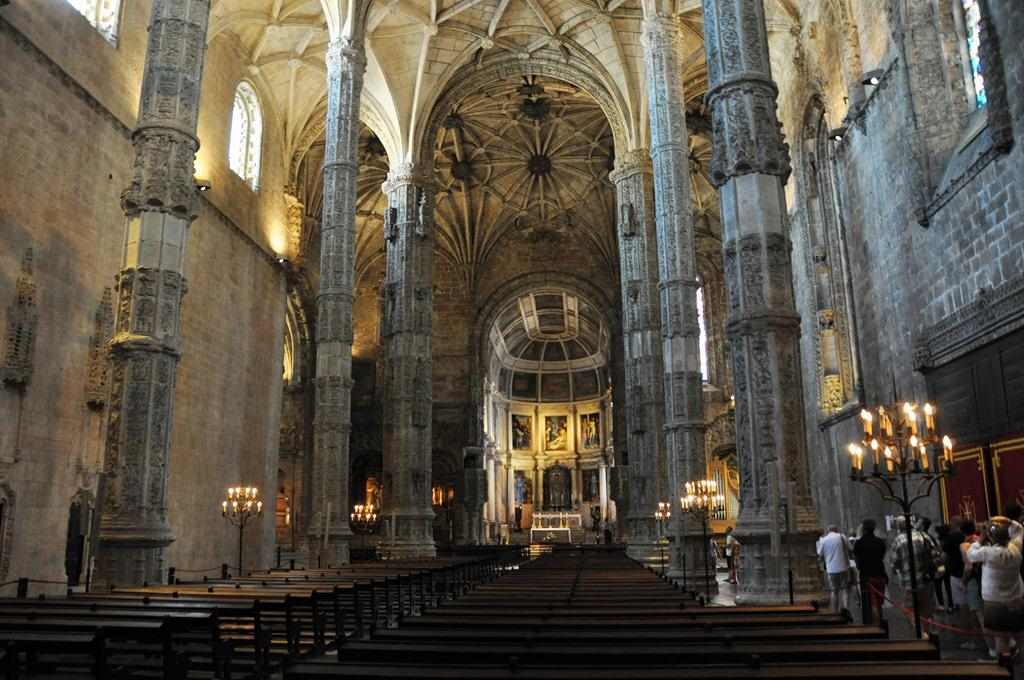
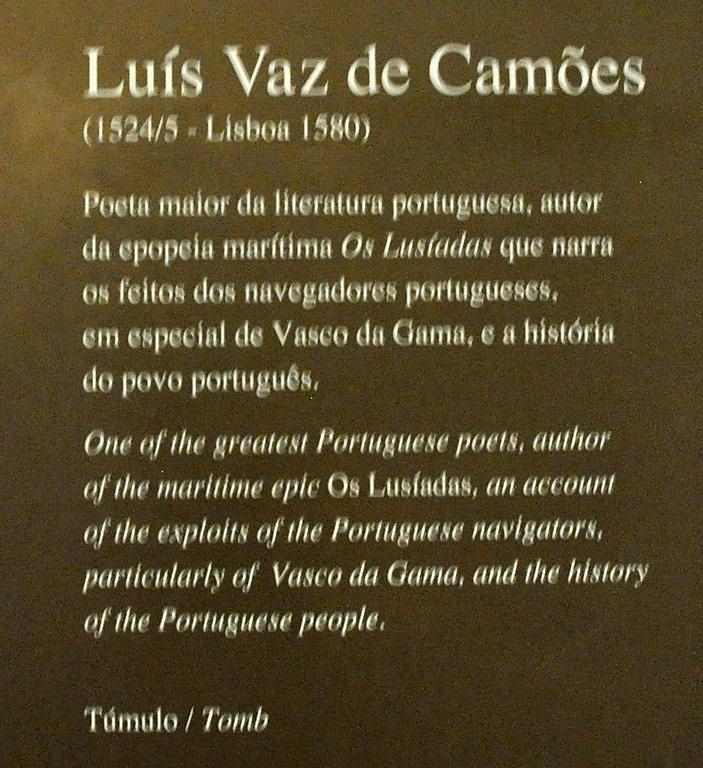
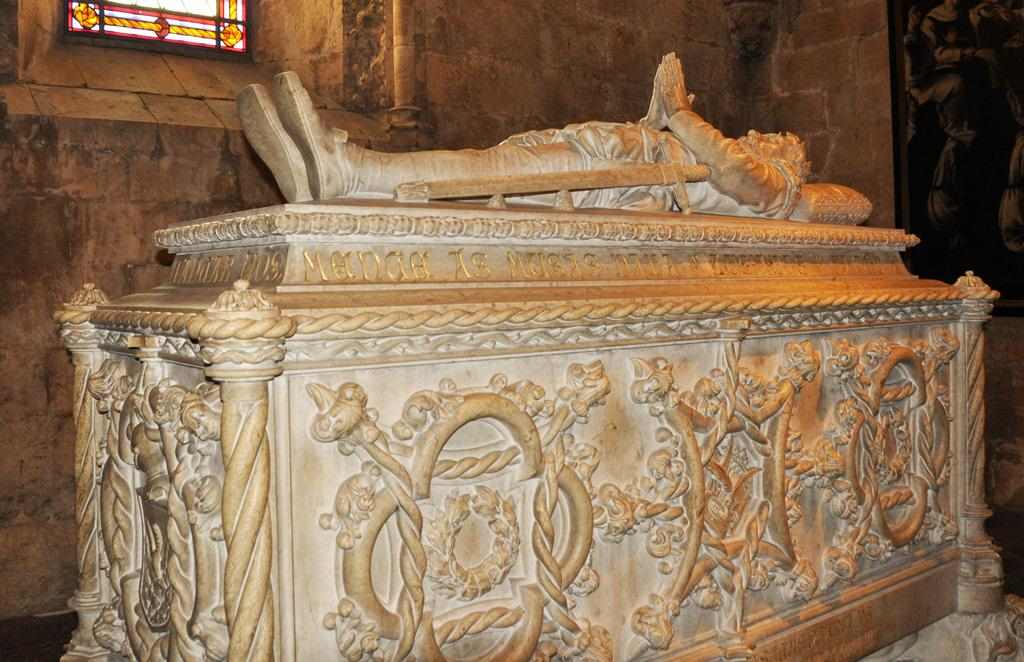
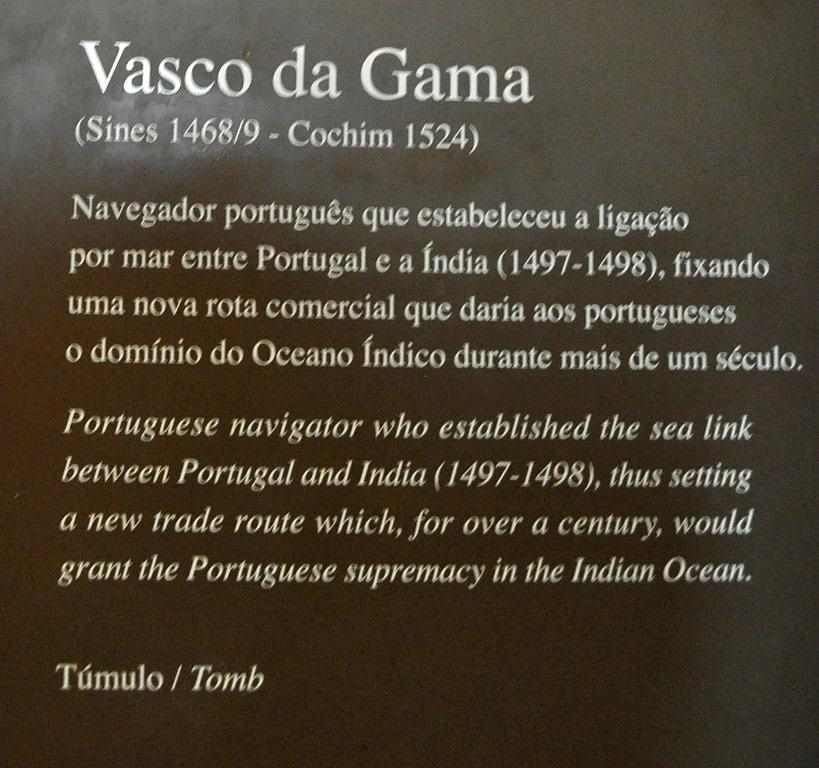
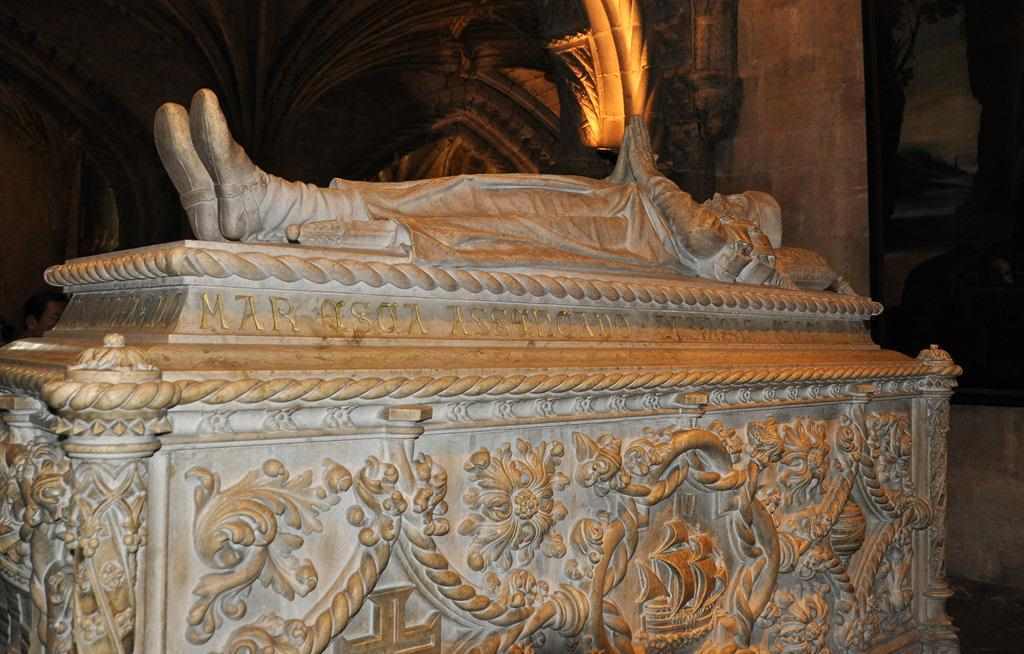
Pasteris de Nata
Pastel de nata is a Portuguese egg tart pastry, common in Portugal, Brazil, Angola, Mozambique, Cape Verde,
São Tomé and Príncipe, Guinea-Bissau, Timor-Leste, Goa, Malacca and Macau.
They were introduced later in mainland China, and countries with significant Portuguese immigrant populations,
such as Canada, Australia, Luxembourg, the United States, and France, among others.
We ate some at a pleasant outdoor cafe near the Hieronymites Monastery.
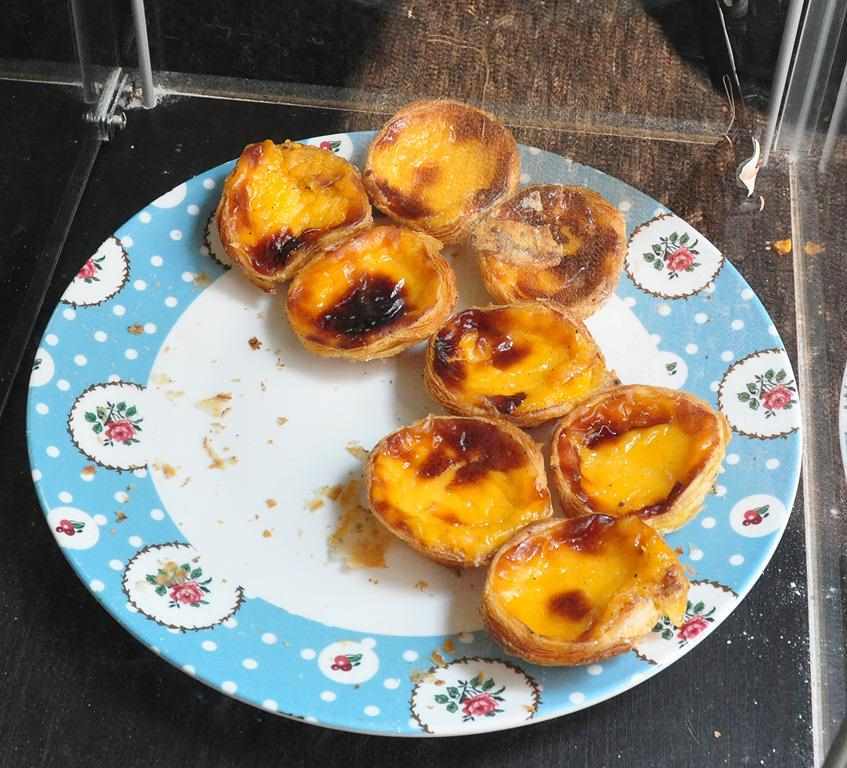
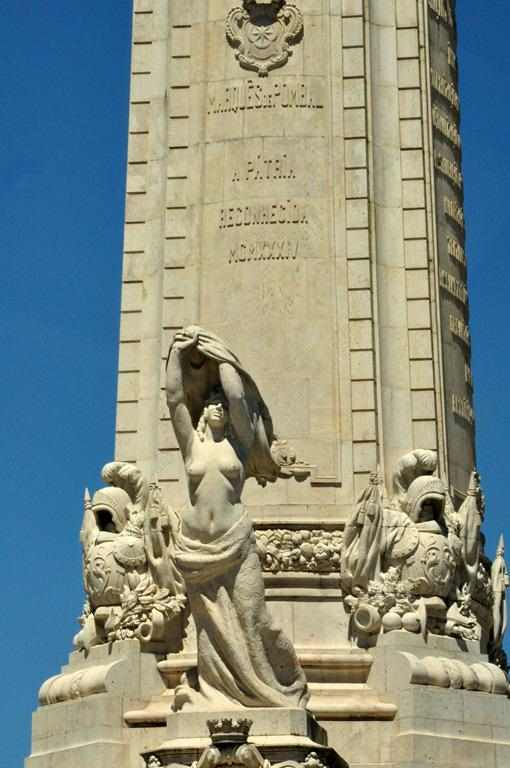
We went on an optional tuk-tuk tour of Lisbon.
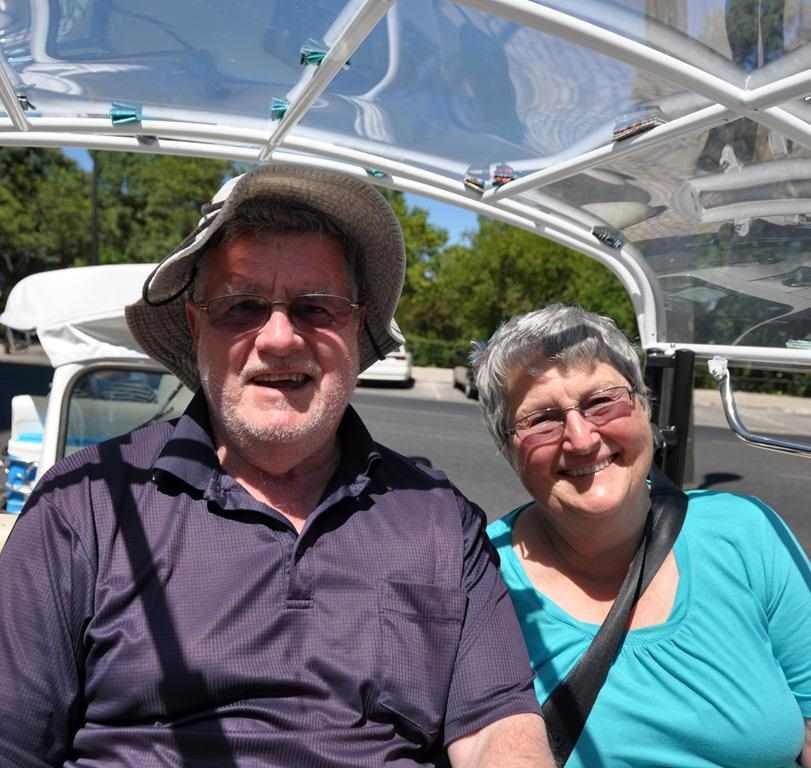
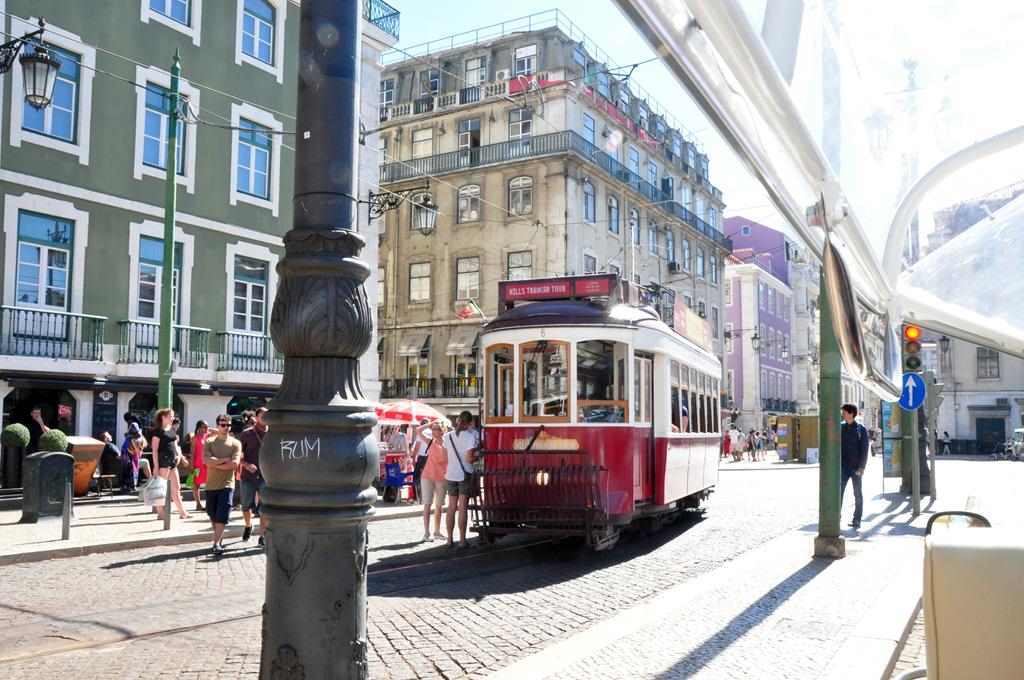
Águas Livres Aqueduct
The Águas Livres Aqueduct ("Aqueduct of the Free Waters") is a historic aqueduct in the city of Lisbon.
The main course of the aqueduct covers 18 km, but the whole network of canals extends through nearly 58 km.
The city of Lisbon has always suffered from the lack of drinking water, and King John V decided to build an aqueduct to bring water from distant sources.
Construction started in 1731 under the direction of an Italian architect Antonio Canevari, replaced in 1732 by a group of Portuguese architects and engineers.
Portuuese architect, Custódio Vieira, conceived the centerpiece of the aqueduct, the arches over the Alcantara valley, completed in 1744.
A total of 35 arches cross the valley, covering 941 m. The tallest arches reach a height of 65 m, and many are pointed, reminiscent of arches in Gothic style.
It is considered a masterpiece of engineering in the Baroque period.
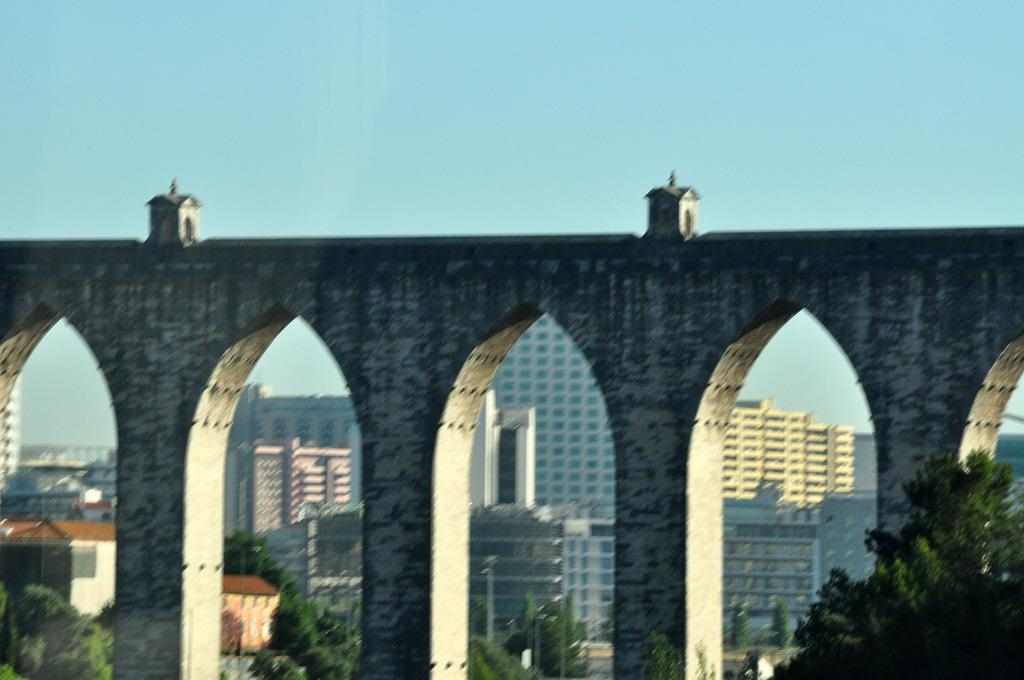
National Palace of Queluz
This 18th-century palace, located at Queluz, about 20km from Lisbon, is one of the last great Rococo buildings to be designed in Europe.
The palace was conceived as a summer retreat for Dom Pedro of Braganza,
later to become husband and then king consort to his own niece, Queen Maria I.
It served as a discreet place of incarceration for Queen Maria as her descent into madness continued in the years following Dom Pedro's death in 1786.
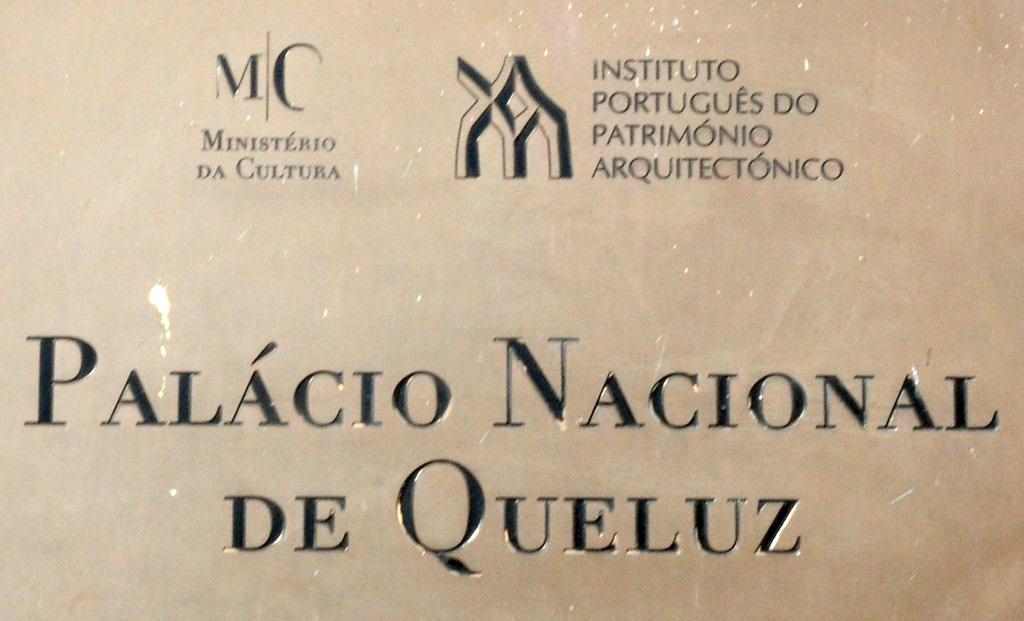
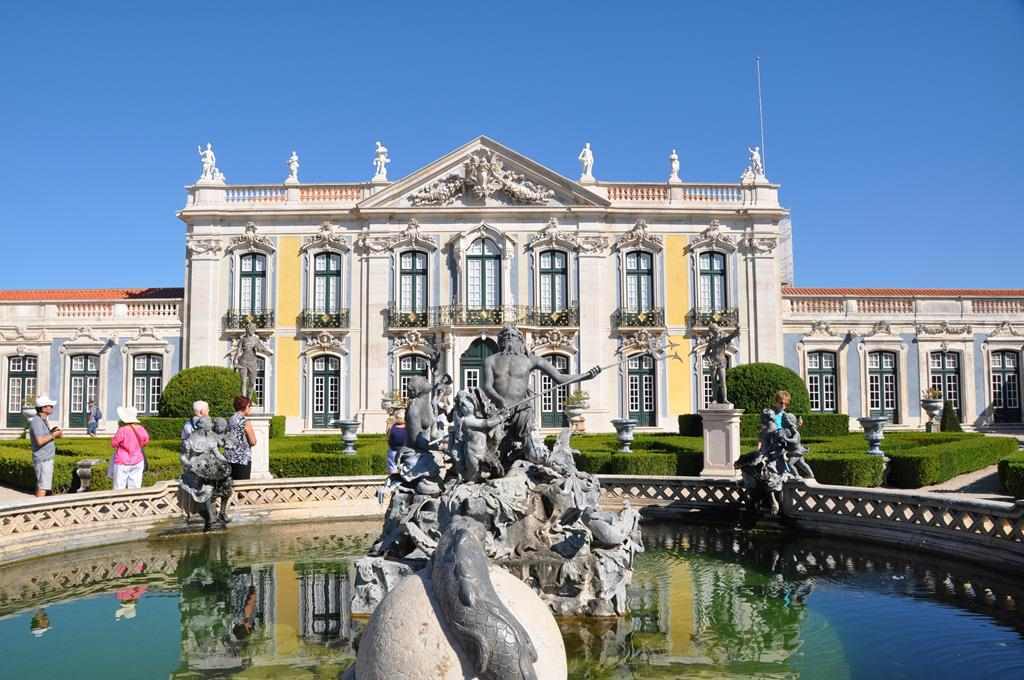
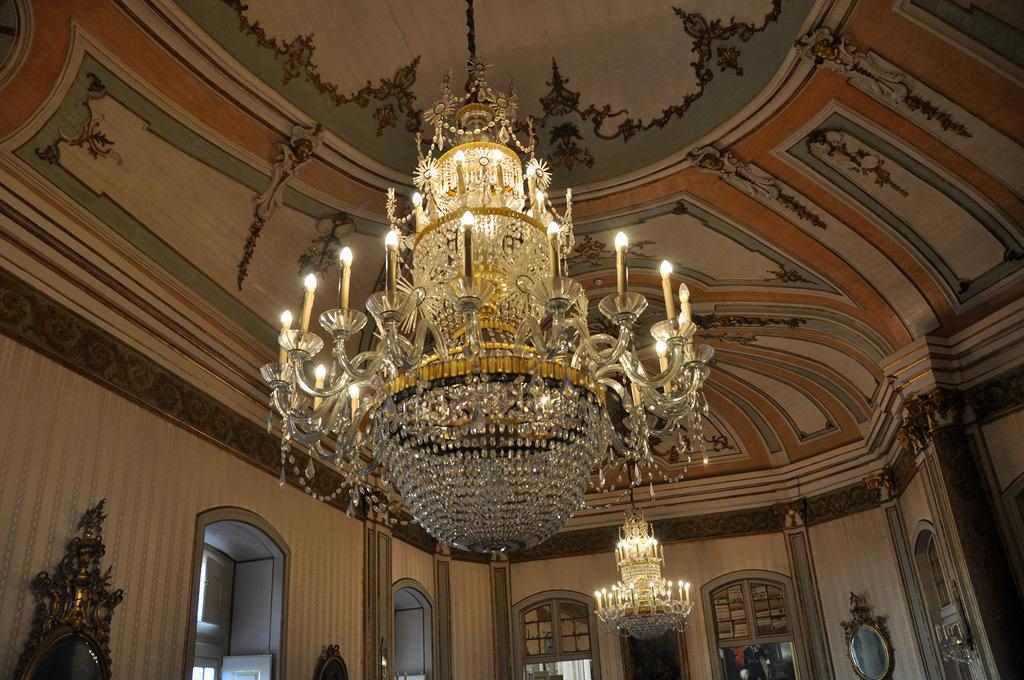
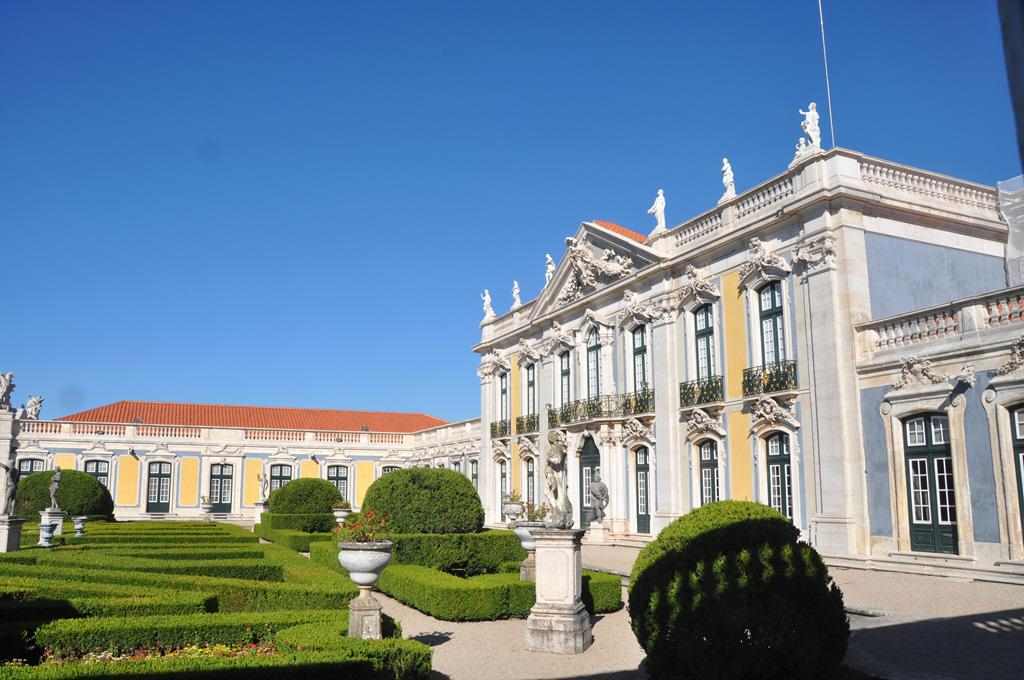
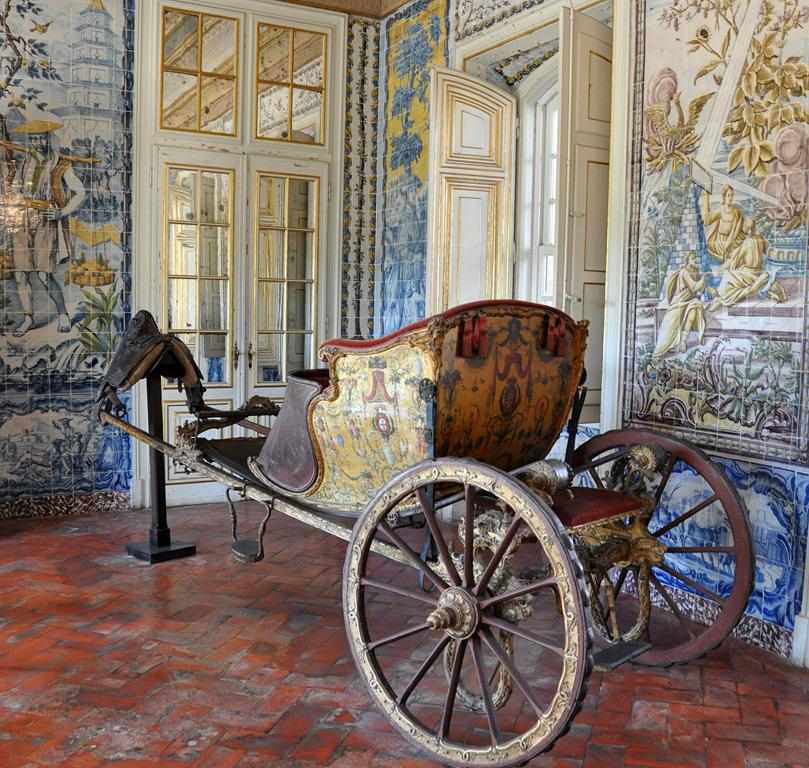
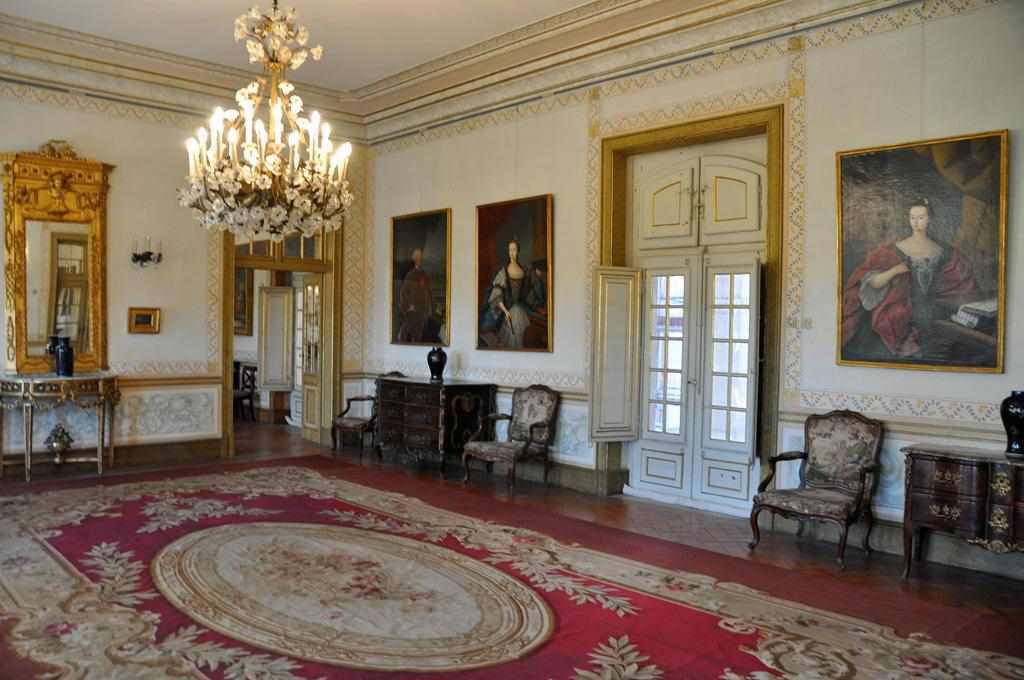
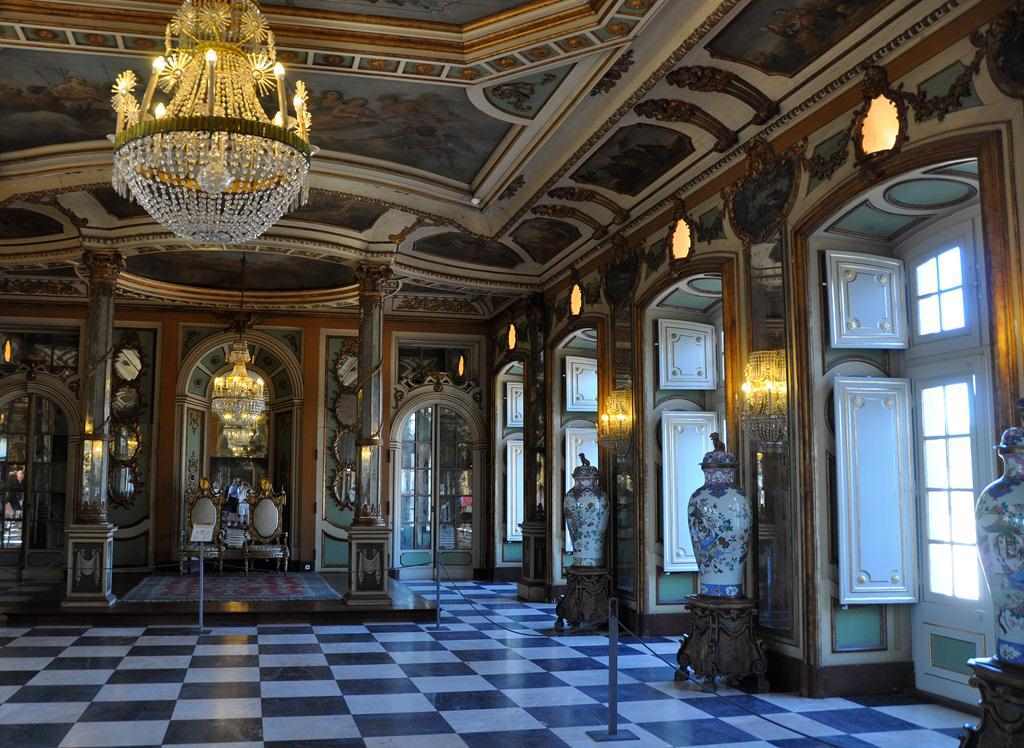
The king's bedroom
Pedro IV (Peter IV) of Portugal, was born in this room in 1798 and he died here in 1834.
He had 36 known children and was the first emperor Brazil (Pedro I) after its independence in 1822.
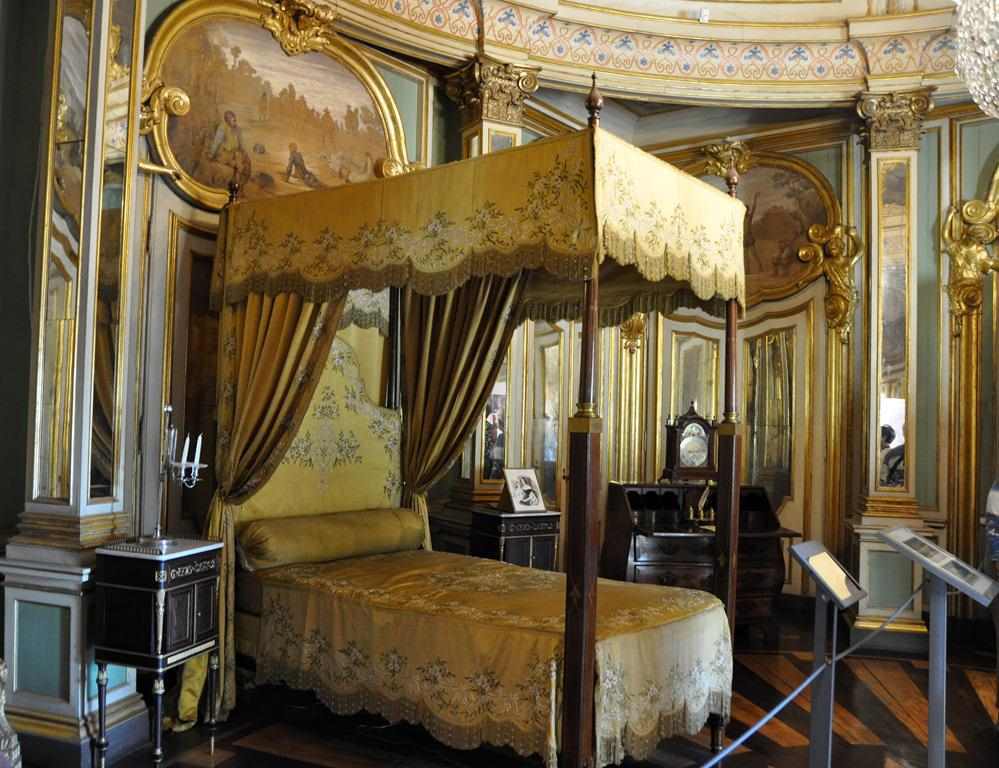

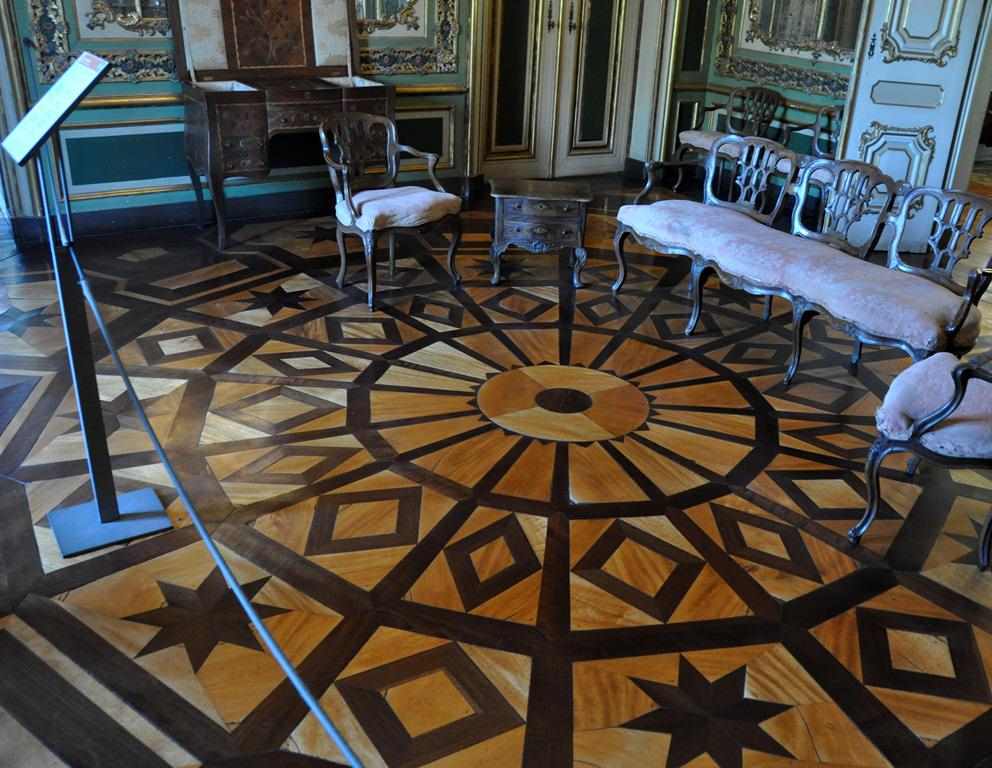
Sintra
Sintra is a tourist town in the foothills of Portugal's Sintra Mountains, about 30km from Lisbon.
Sintra is known for its many 19th-century Romantic architectural buildings, which has resulted in its classification as a UNESCO World Heritage Site.
Sintra is dotted with royal retreats, estates, castles and other buildings, including the Sintra National Palace.
Sintra Palace
Sintra Palace is the best-preserved medieval royal residence in Portugal,
being inhabited more or less continuously from at least the early 15th century to the late 19th century.
It was once a Moorish (Islamic) palace and most of the buildings date from 1415.
There are lots of tiled rooms with a large Islamic influence (no animals).

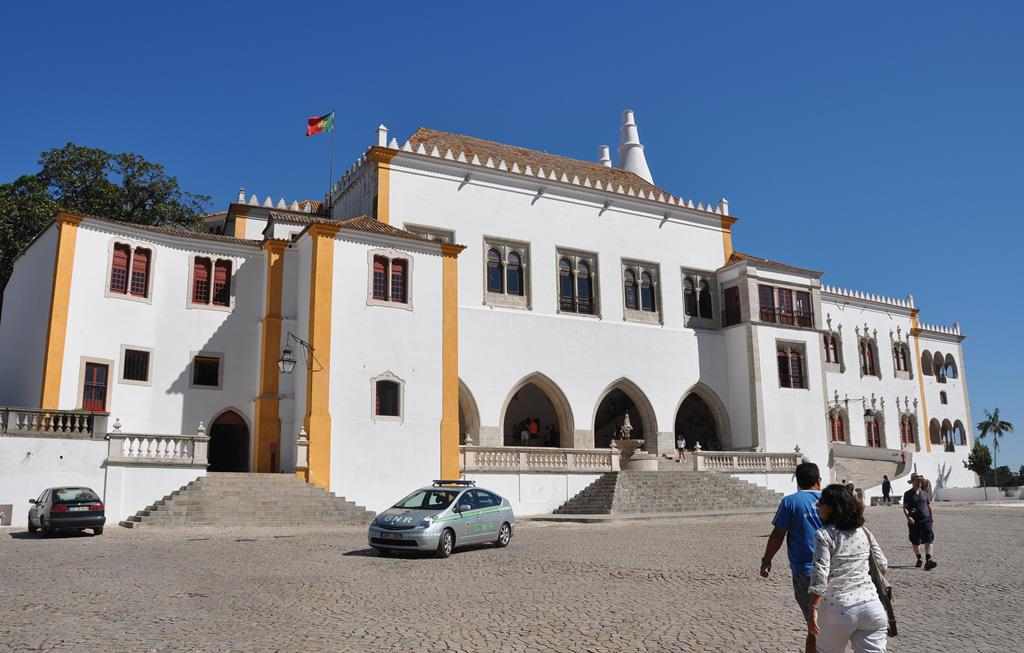
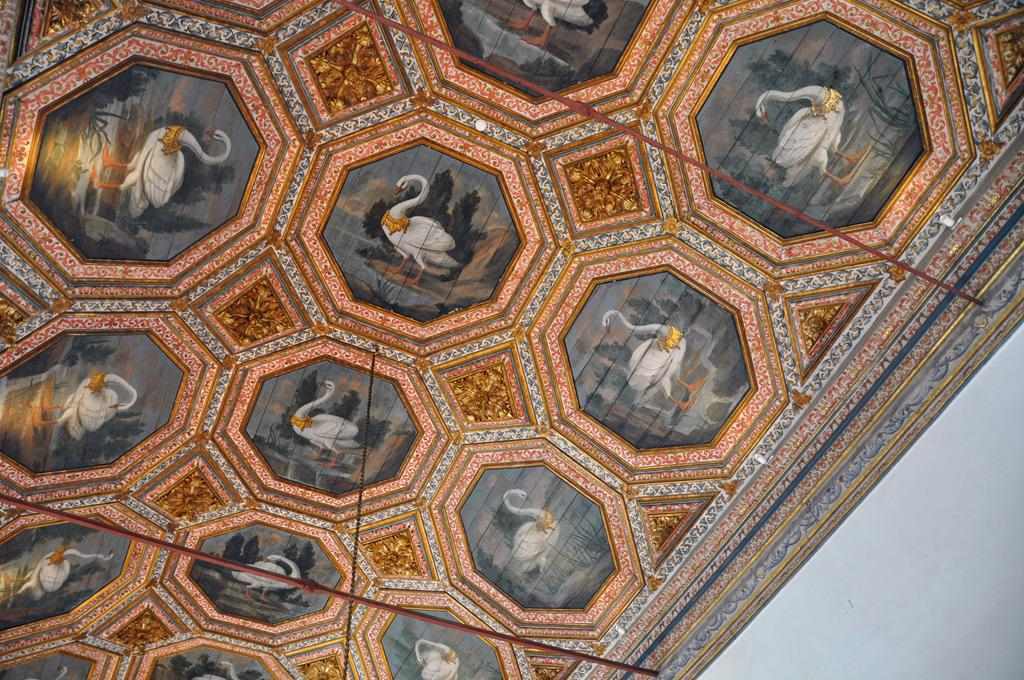
Swan Hall
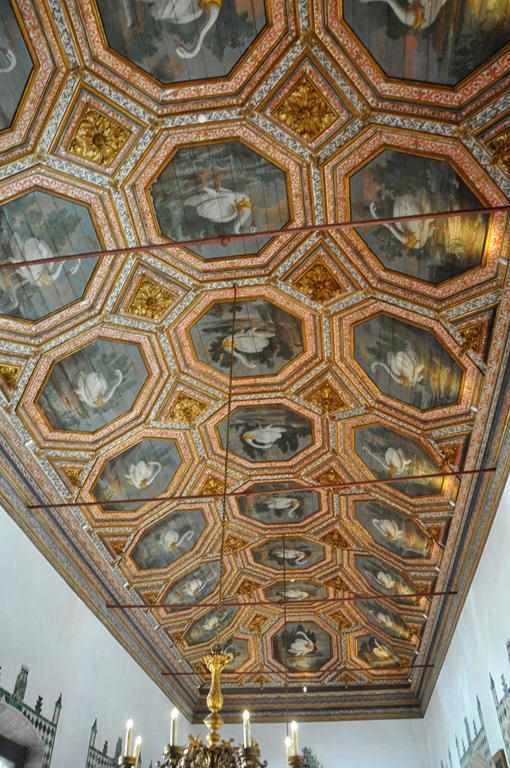
The kitchen chimneys
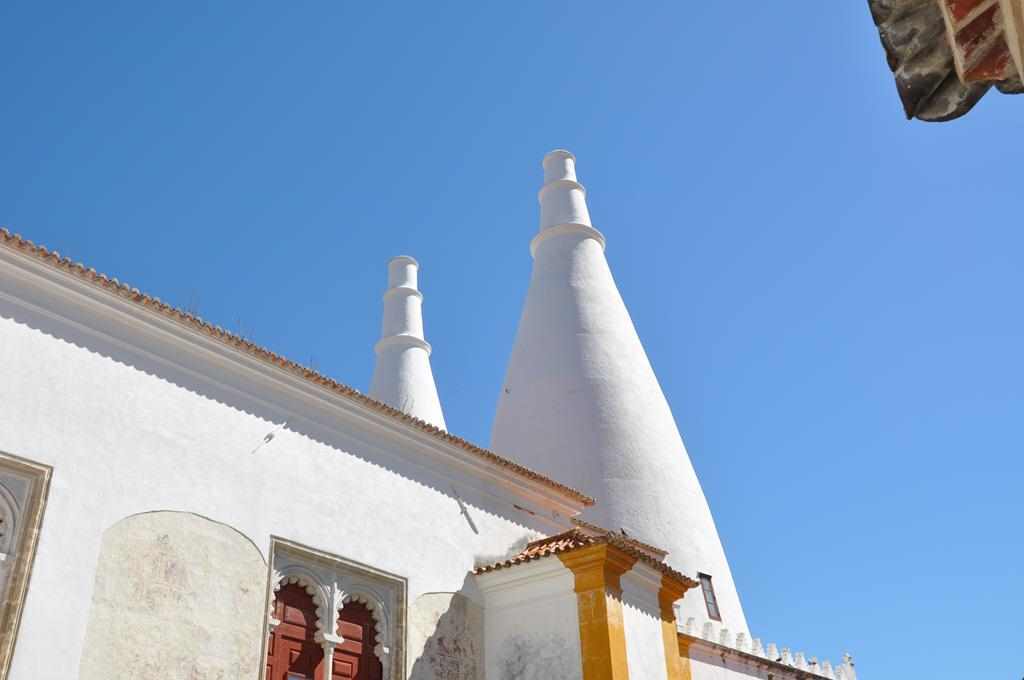
The Kitchen
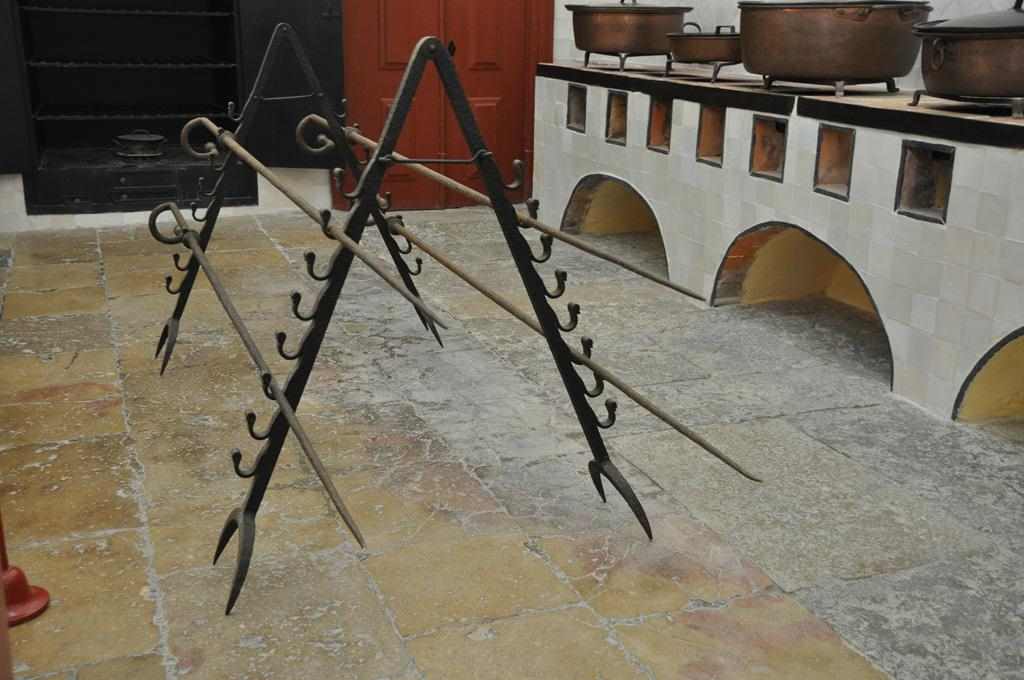
The Magpie Room
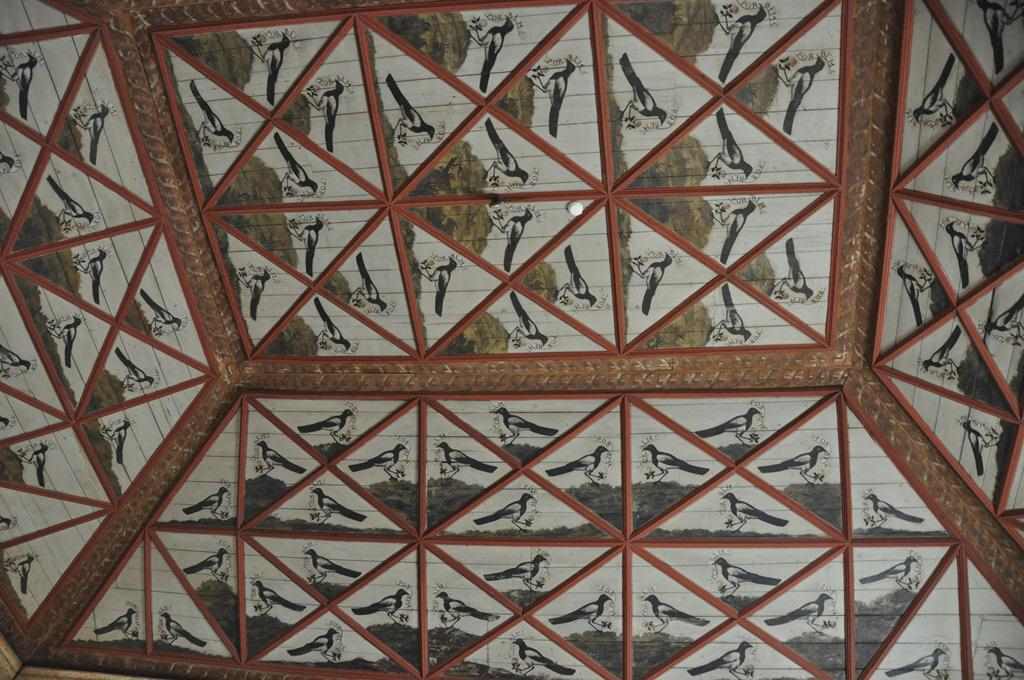
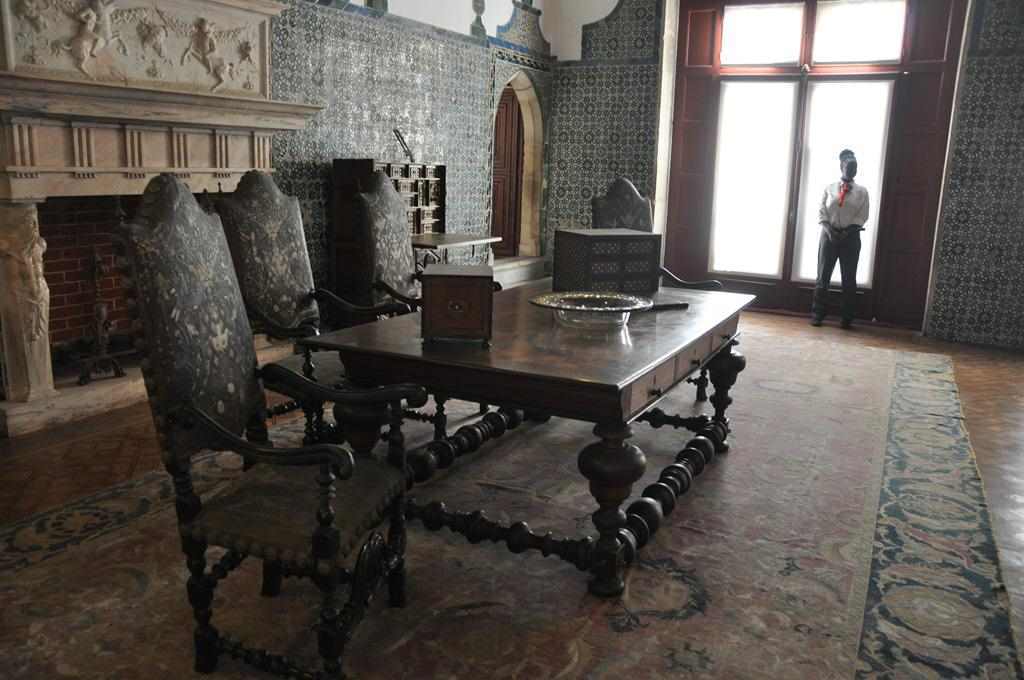
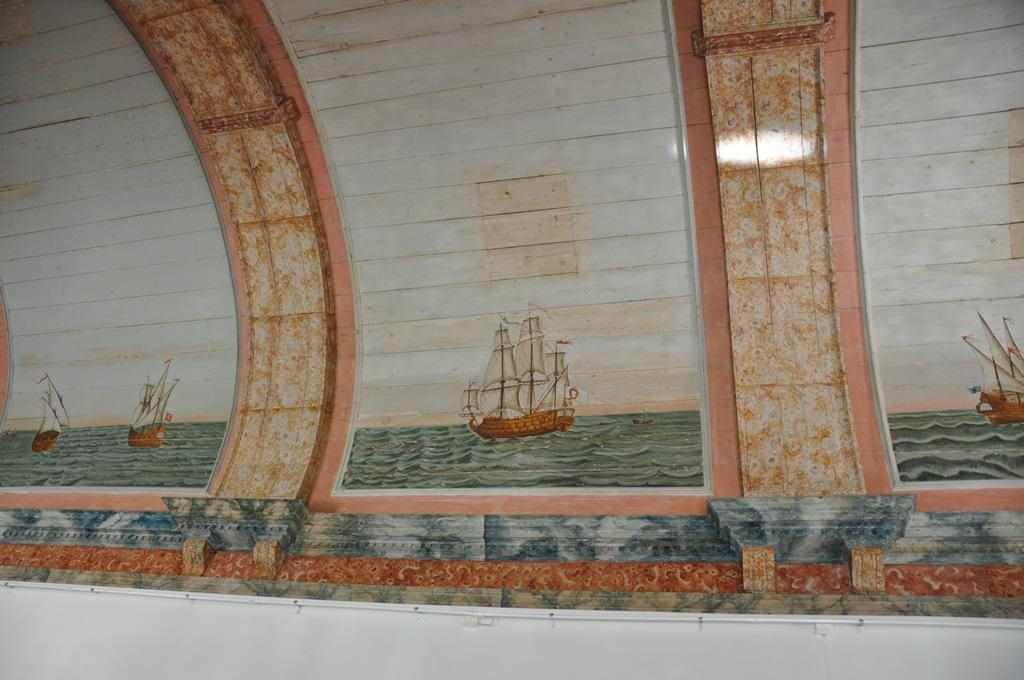
Beautifully tiled walls in this large room.
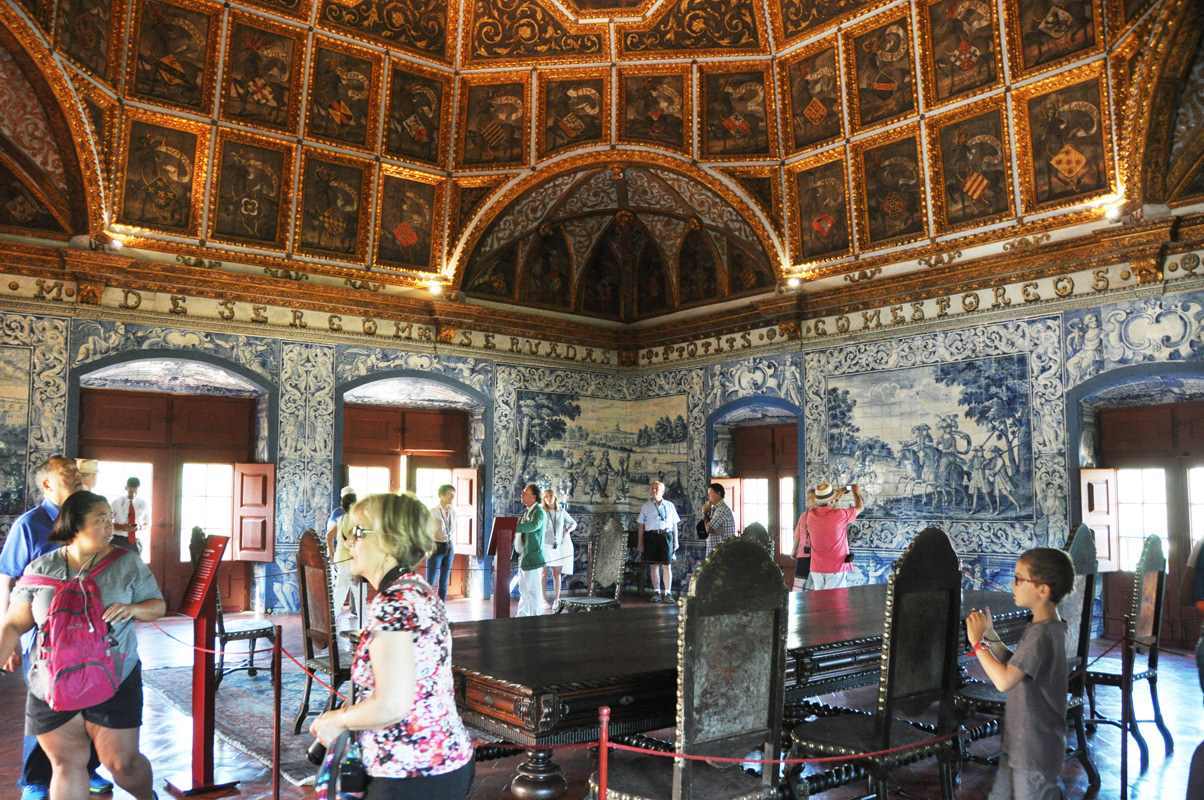
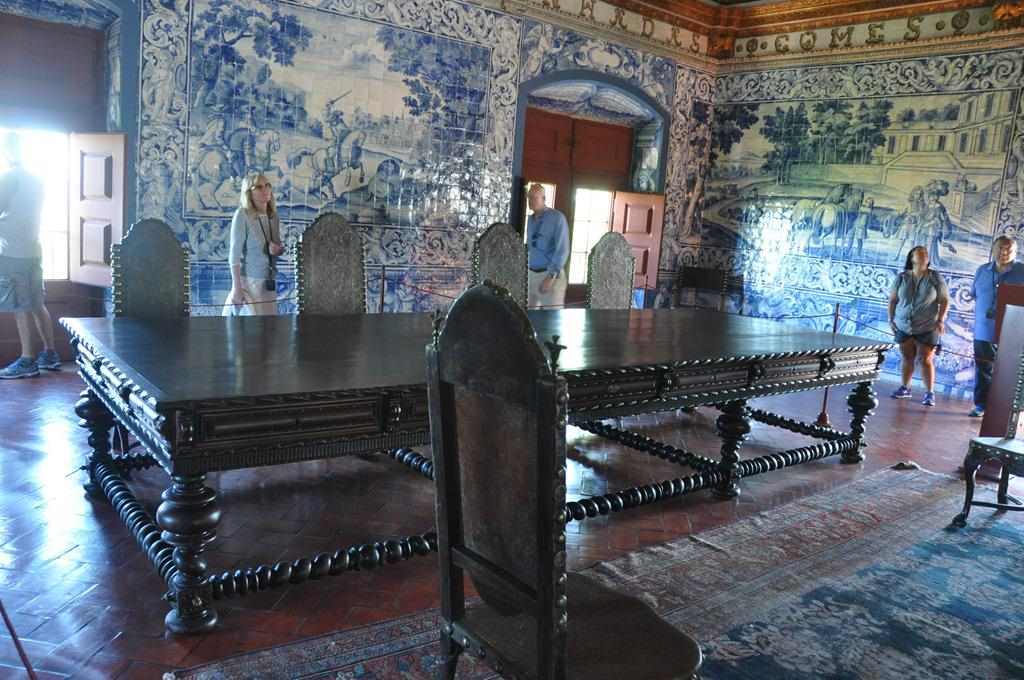
Cascais
Situated on the Atlantic Ocean, about 30km from Lisbon, Cascais is a popular vacation spot for both Portuguese and foreign tourists
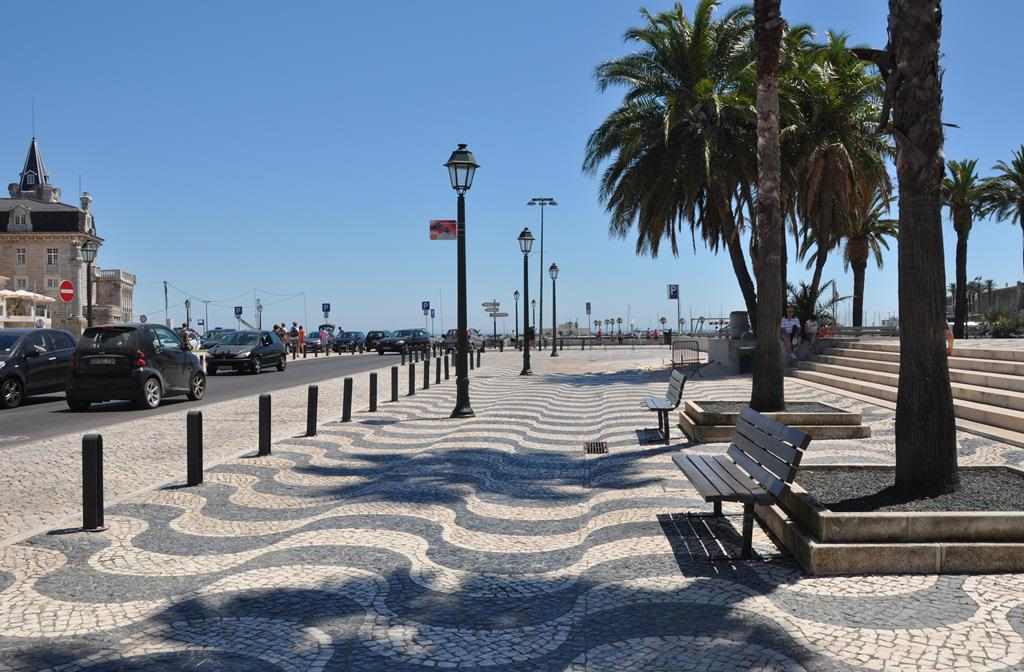
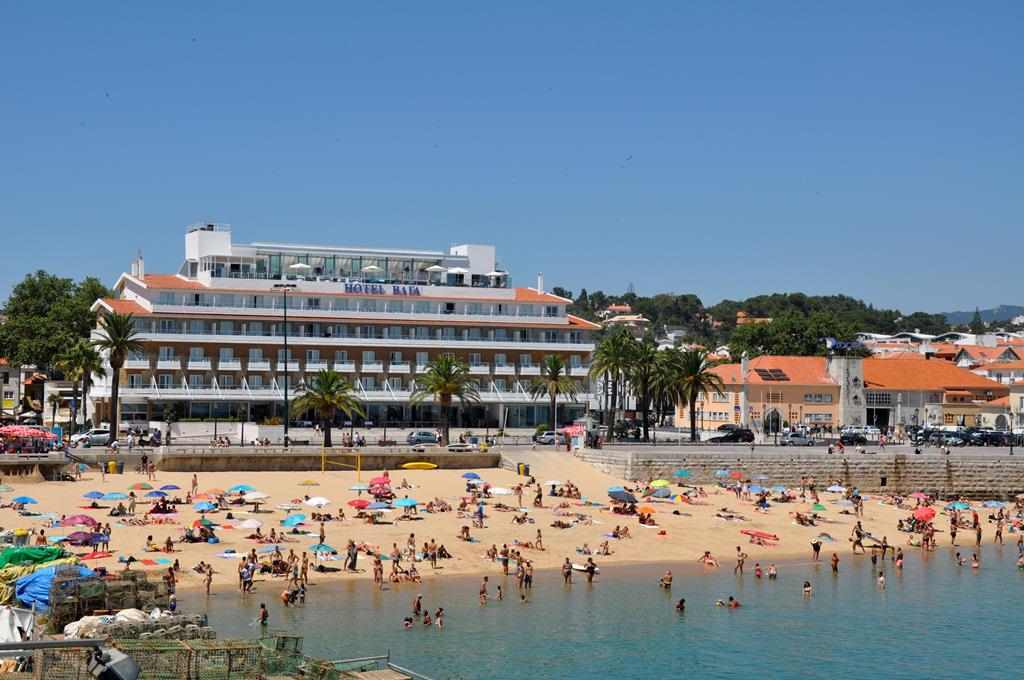
After 3 nights in Lisbon we travelled by bus to Porto where we statrted our week-long Douro River cruise.
On the way we visited Coimba.
Coimbra
About 210km north of Lisbon, Coimbra is the fourth-largest city in Portugal (after Lisbon, Porto and Braga).
An important city in Roman times, Coimbra was also the capital of Portugal from 1131 to 1255.
During the Late Middle Ages, with its decline as the political centre of the Kingdom of Portugal, Coimbra began to evolve into a major cultural centre.
This was in large part helped by the establishment the University of Coimbra in 1290, the oldest academic institution in the Portuguese-speaking world.
Apart from attracting many European and international students, the university is visited by many tourists for its monuments and history.
Coimbra's historical buildings were classified as a World Heritage site by UNESCO in 2013: "Coimbra offers an outstanding example of an
integrated university city with a specific urban typology as well as its own ceremonial and cultural traditions that have been kept alive through the ages."
Coimbra University
Established in 1290 in Lisbon, it went through a number of relocations until it was moved permanently Coimbra in 1537, being one of the oldest universities
in continuous operation in the world, the oldest university of Portugal, and one of its largest higher education and research institutions.
The University of Coimbra has over 20,000 students, and hosts one of the largest communities of international students in Portugal,
being the most cosmopolitan Portuguese university.
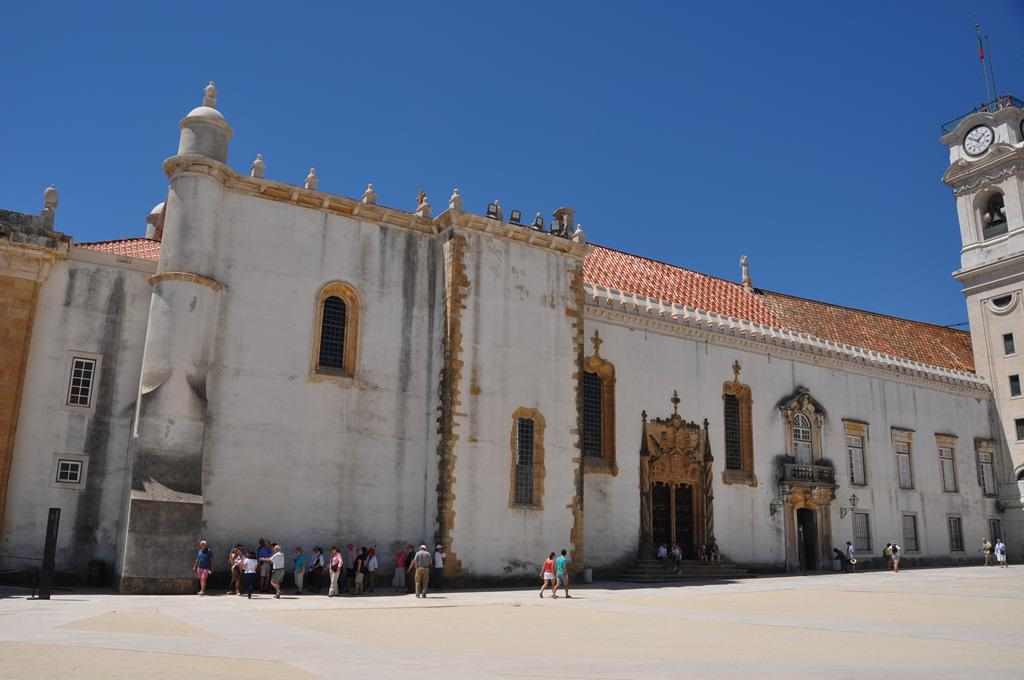
The University's São Miguel Chapel.
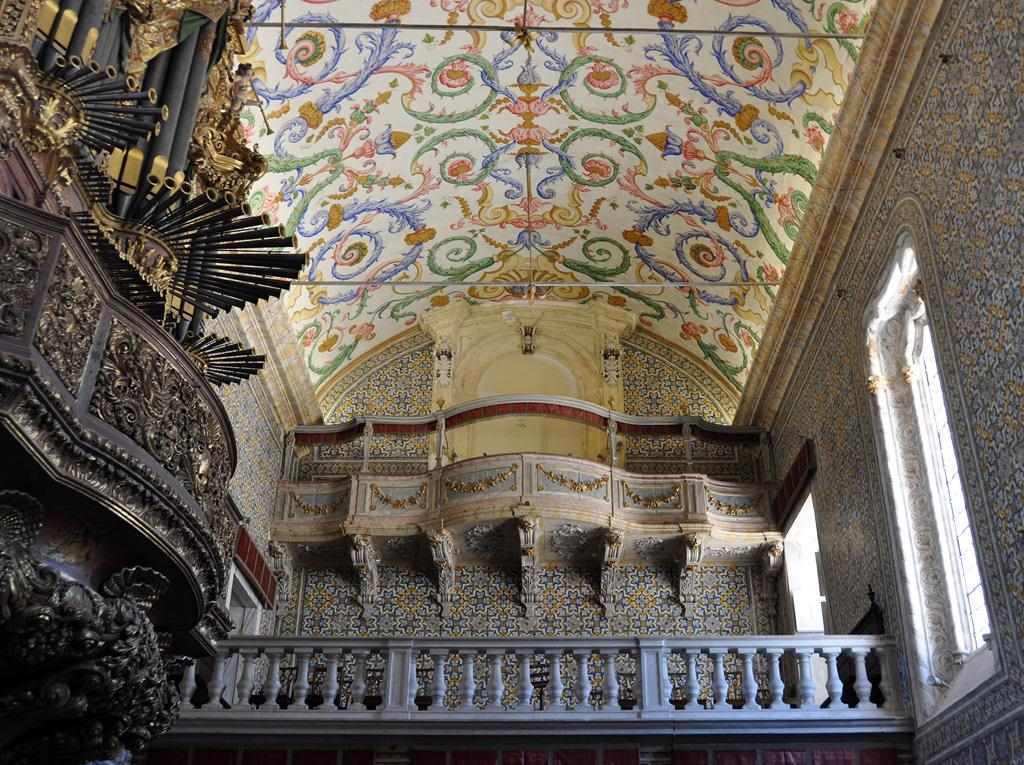
The university had a beautiful old library. We visited it but were not allowed to take photos inside.
Here is a photo from the Internet ....
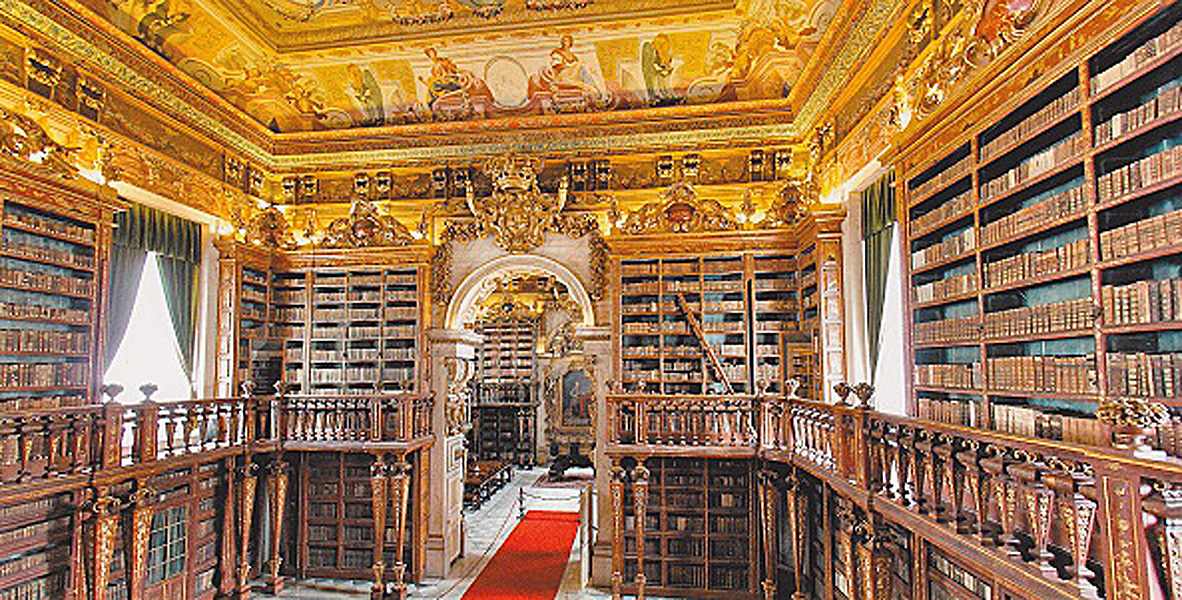
Porto
Porto is 120km north of Coimbra and 330km north of Lisbon.
Porto, also known as Oporto, is the second largest city in Portugal after Lisbon and has a population of 1.9 million.
Located along the Douro river estuary in Northern Portugal, Porto is one of the oldest European centres,
and its historical core was proclaimed a World Heritage Site by UNESCO in 1996.
The western part of its urban area extends to the coastline of the Atlantic Ocean.
Settlement dates back many centuries, when it was an outpost of the Roman Empire.
Its combined Celtic-Latin name, Portus Cale has been referred to as the origin of the name "Portugal",
based on transliteration and oral evolution from Latin.
The bridge in the foreground is the Maria Pia bridge (Ponte Maria Pia), commonly known as Ponte Dona Maria,
a railway bridge built in 1877 by Gustave Eiffel (of Eiffel Tower fame).
Built of wrought iron, its two-hinged crescent arch used to carry the railway to Lisbon for 353 metres across the River Douro at a height of 60 mabove the river.
When constructed it was the longest single-arch span in the world.
It is no longer in use as a rail bridge, a modern replacement having been constructed in 1991.

The Dom Luís I (or Luiz I) Bridge ( Ponte Luís I or Luiz I), a double-decked metal arch bridge spans the Douro River
between the cities of Porto and Vila Nova de Gaia..
At the time of construction its span of 172 m was the longest of its type in the world.
The bridge often is confused with the nearby Maria Pia Bridge, a railway bridge designed by Gustave Eiffel, built nine years earlier and located a kilometre to the east.
However, although they bear a strong resemblance to one another, the earlier bridge has only one deck.
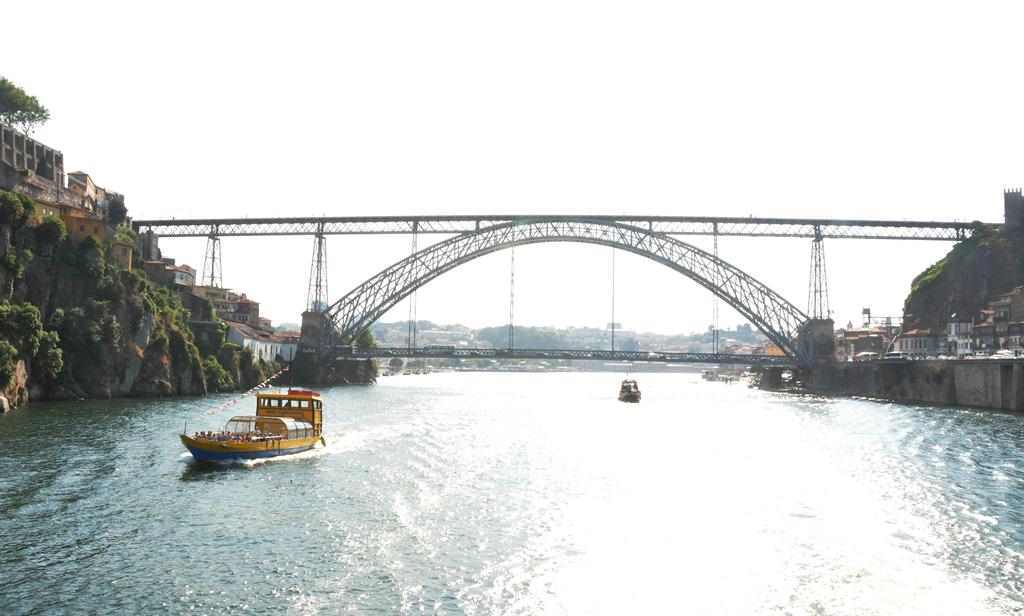
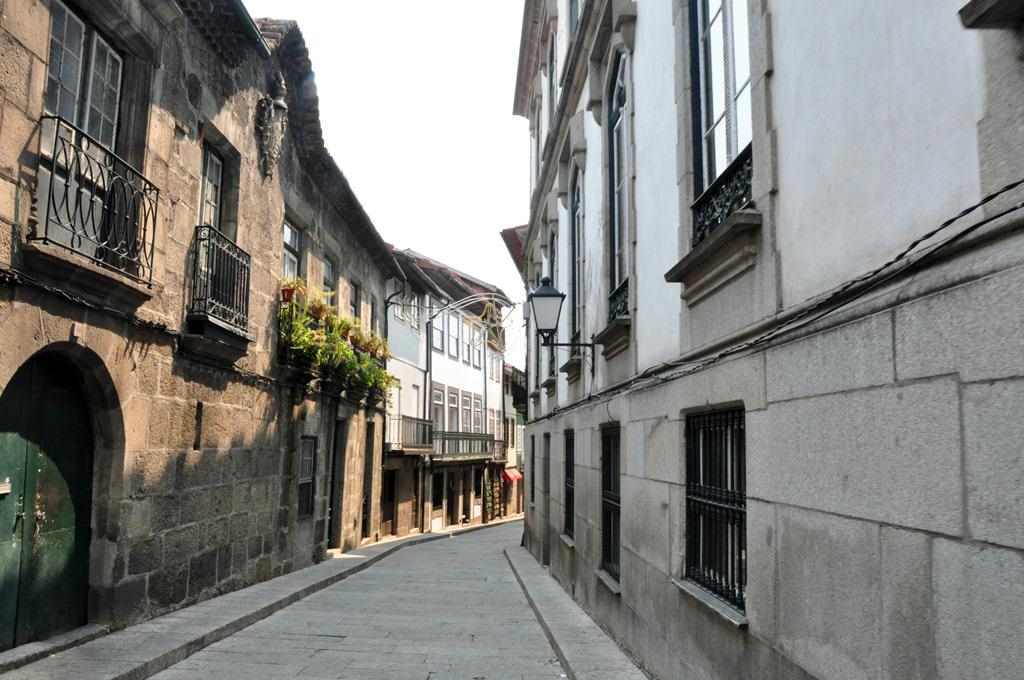

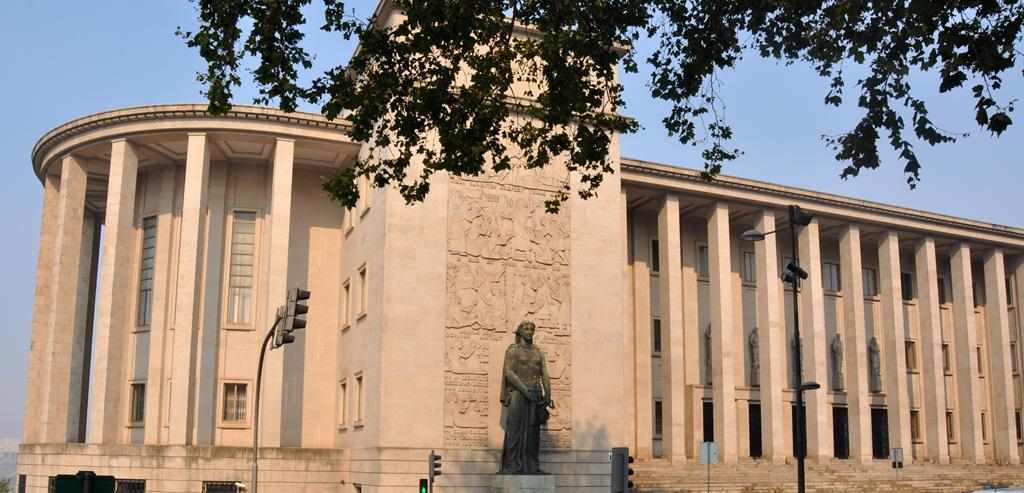
An avenue of strange-shaped sycamore trees
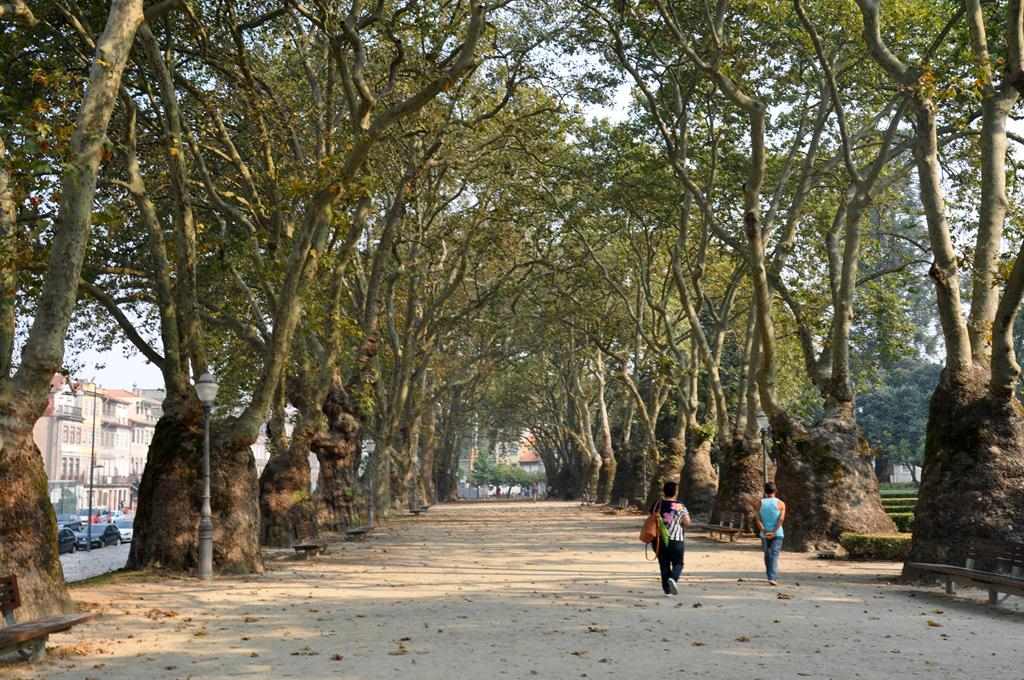
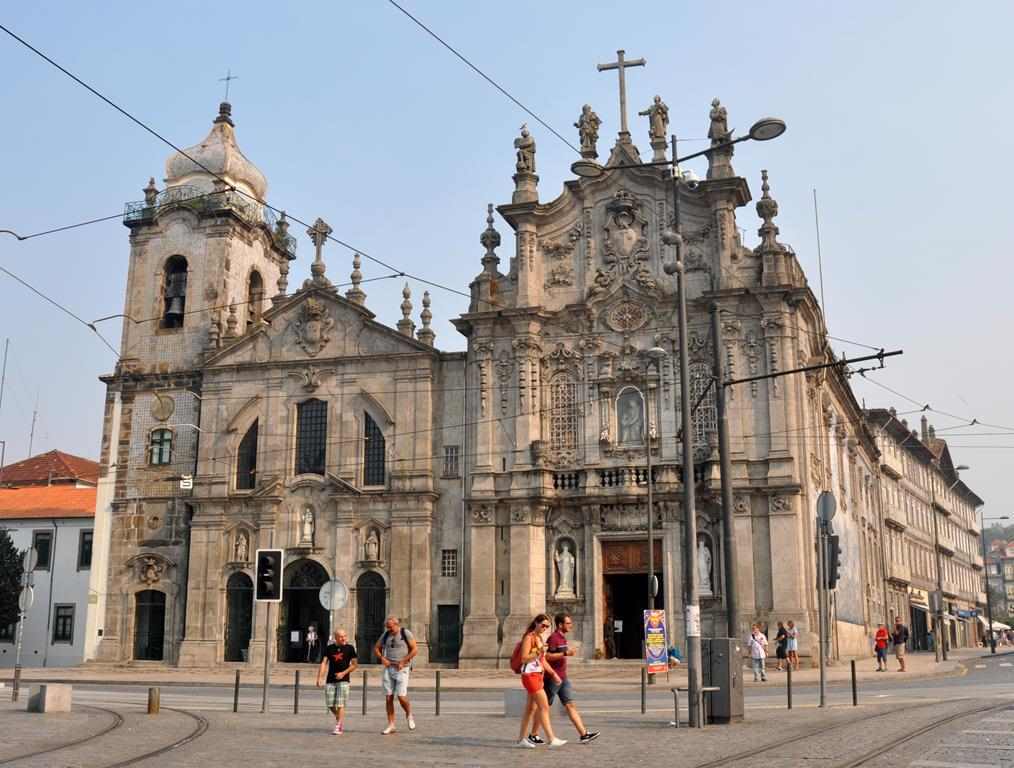
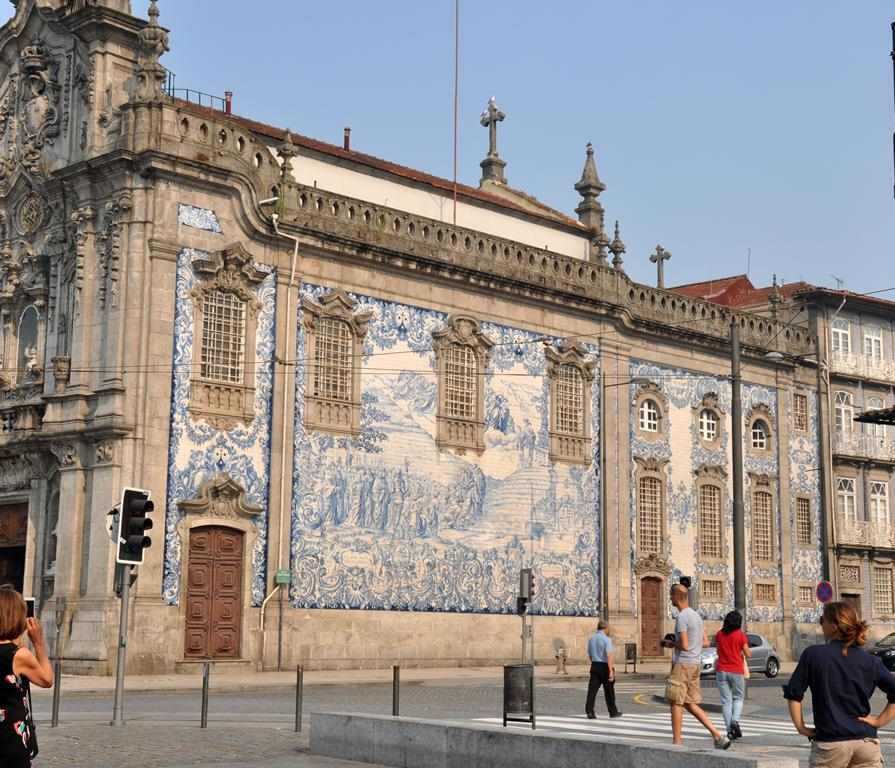
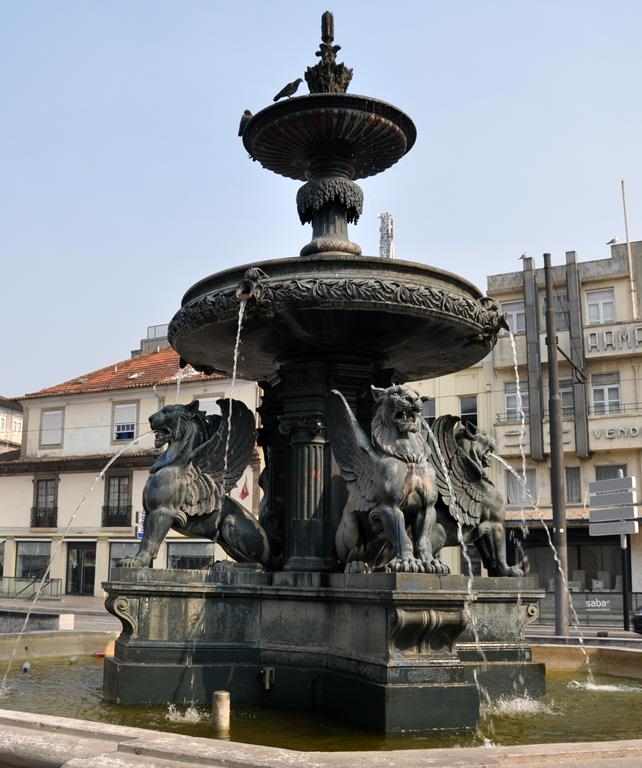
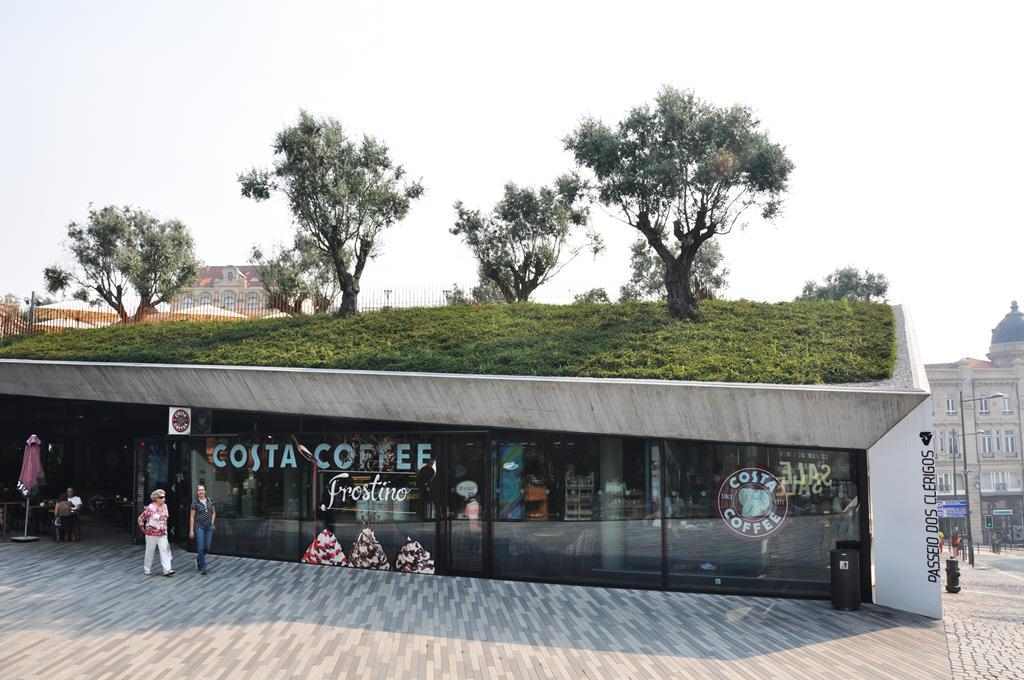
Livraria Lello is frequently rated among the top bookstores in the world.
It is claimed to be the most beautiful bookstore in the world.
Elements of the facade and much of the interior are decorated in Art Nouveau, with some features of the Gothic Revival.
The bookstore was frequented by JK Rowling, author of the Harry Potter series, when she taught English in Porto and is reported to be an inspiration for her writing.
The queue to enter was too long.
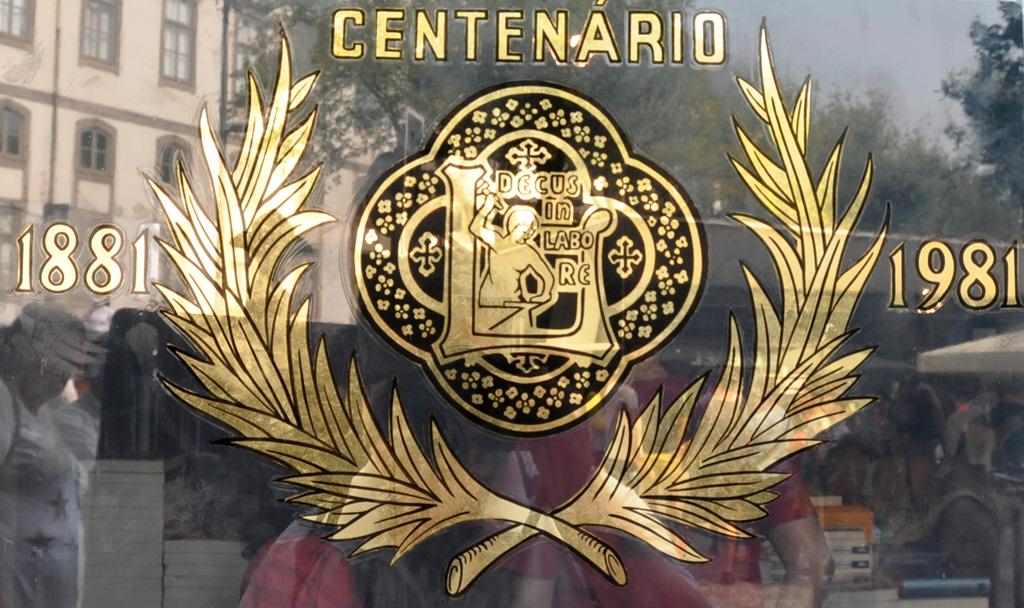
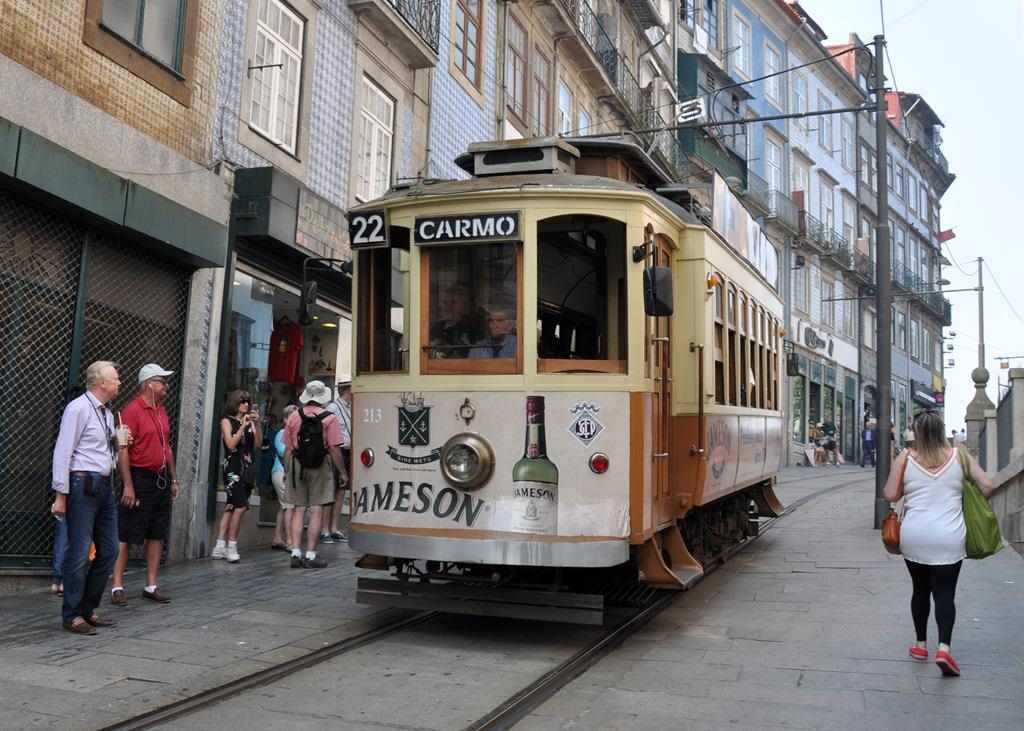
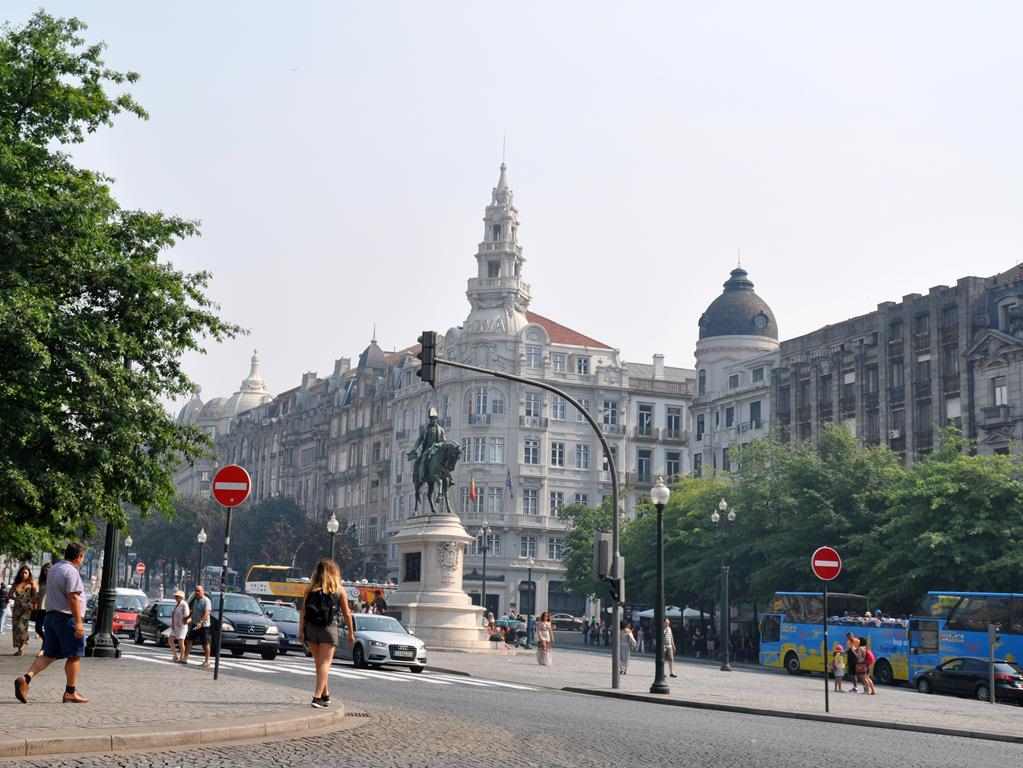
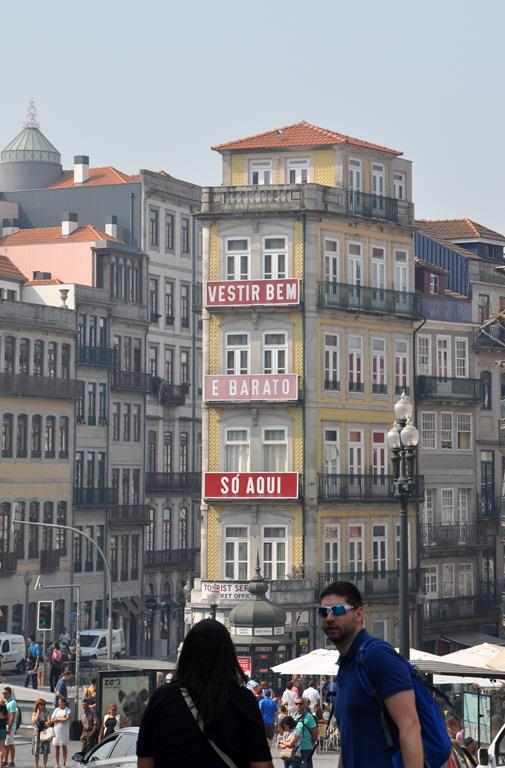
São Bento railway station
Inaugurated in 1916, the historical station is known for its tile (azulejo) panels that depict scenes of the History of Portugal.
It is located in the Almeida Garret Square, in the centre of the city.
There are over 20,000 tiles.
They are the work of Jorge Colaço, the most important azulejo painter of the time.
The panels depict landscapes, ethnographic scenes as well as historical events like the Battle of Valdevez (1140),
the meeting of the knight Egas Moniz and Alfonso VII of León (12th century),
the arrival of King John I and Philippa of Lancaster in Porto (1387) and the Conquest of Ceuta (1415).
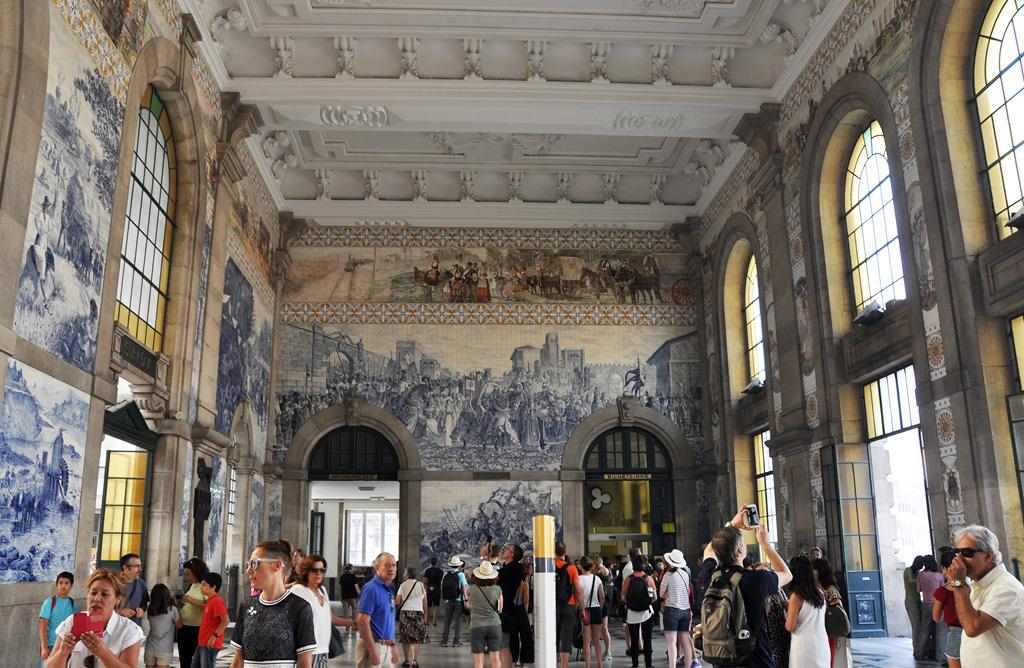
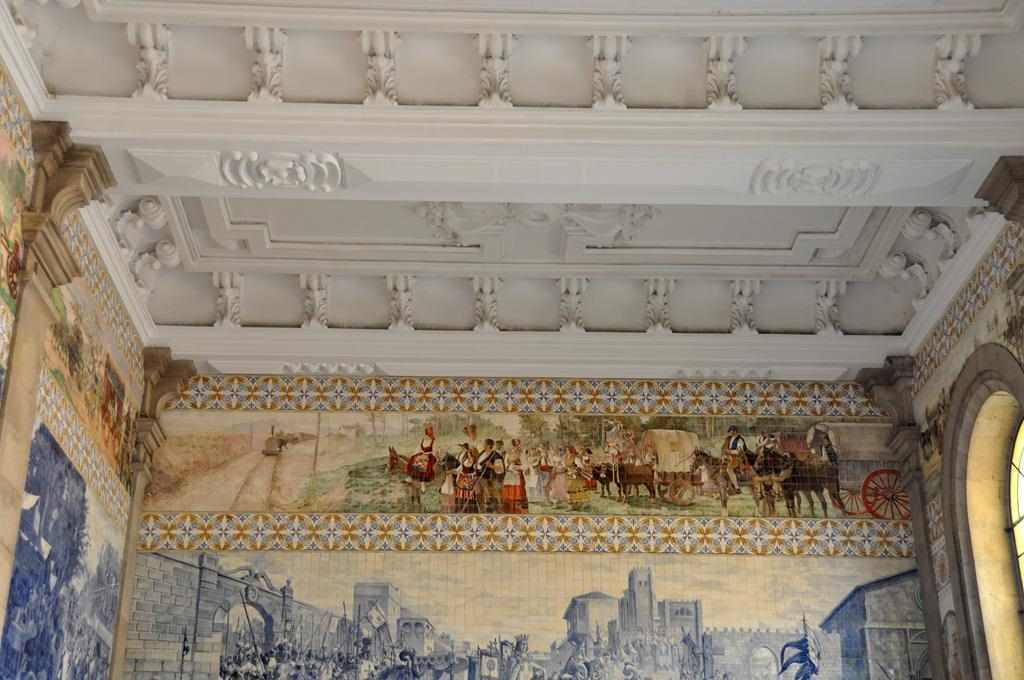
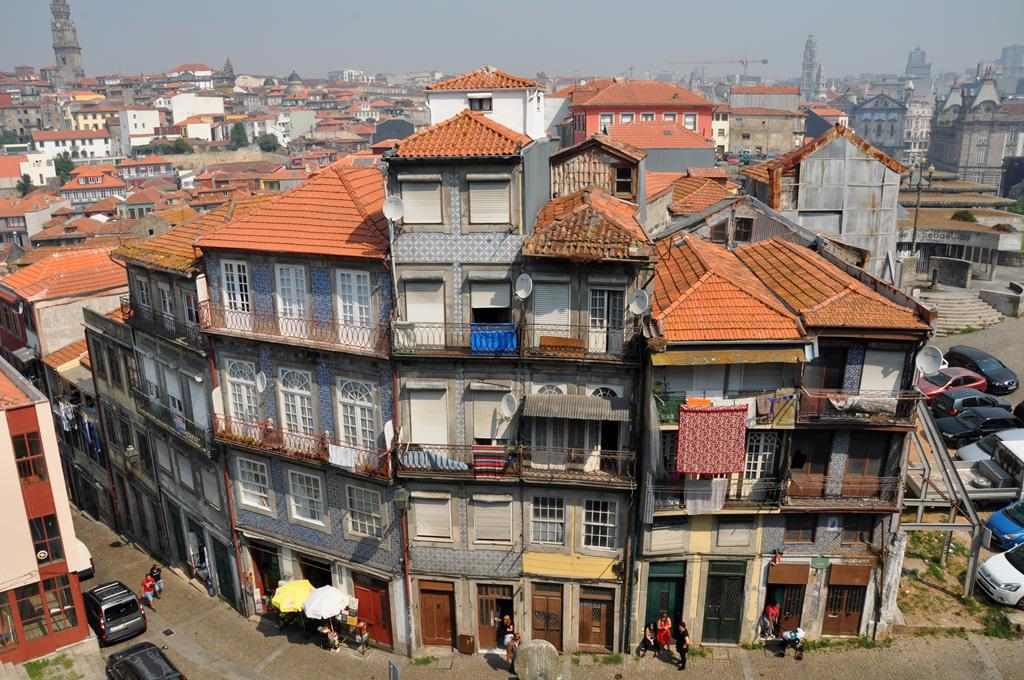
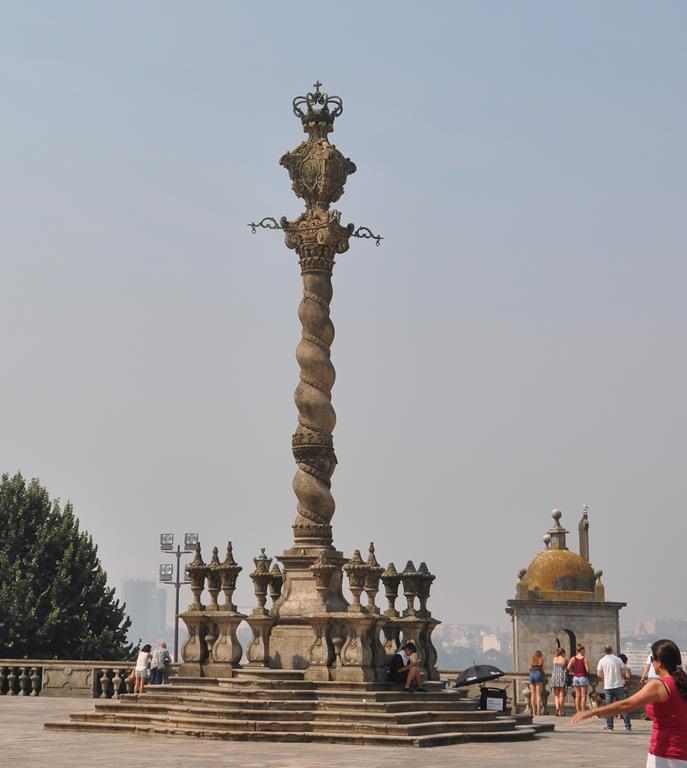
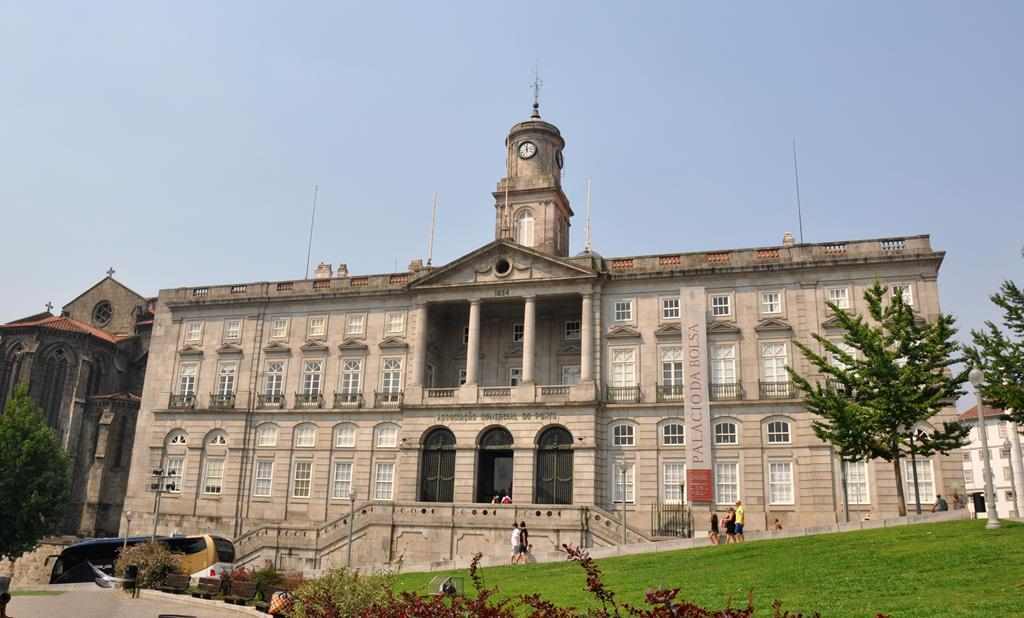
Taylors and Crofts Cellars
Established over three centuries ago in 1692, Taylor’s is one of the oldest of the founding Port houses.
It is dedicated entirely to the production of Port wine.
Port from the upper areas of the Douro Valley is transported here to be aged in vats before bottling.
The slightly milder and humid climate helps the aging.
After a tour we tasted a light port and a ruby port.
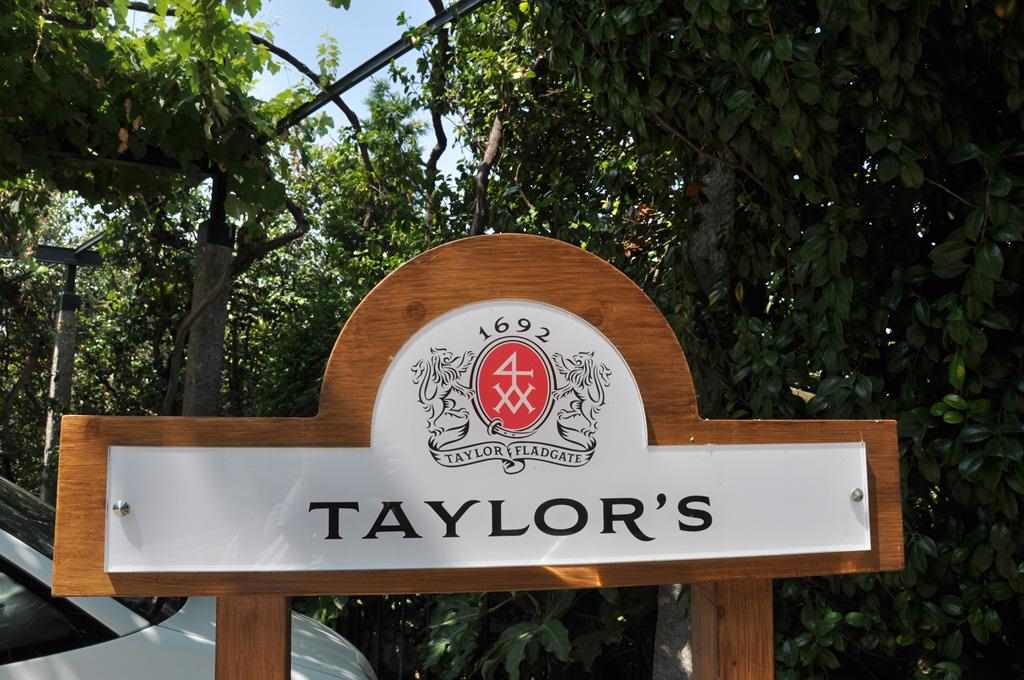
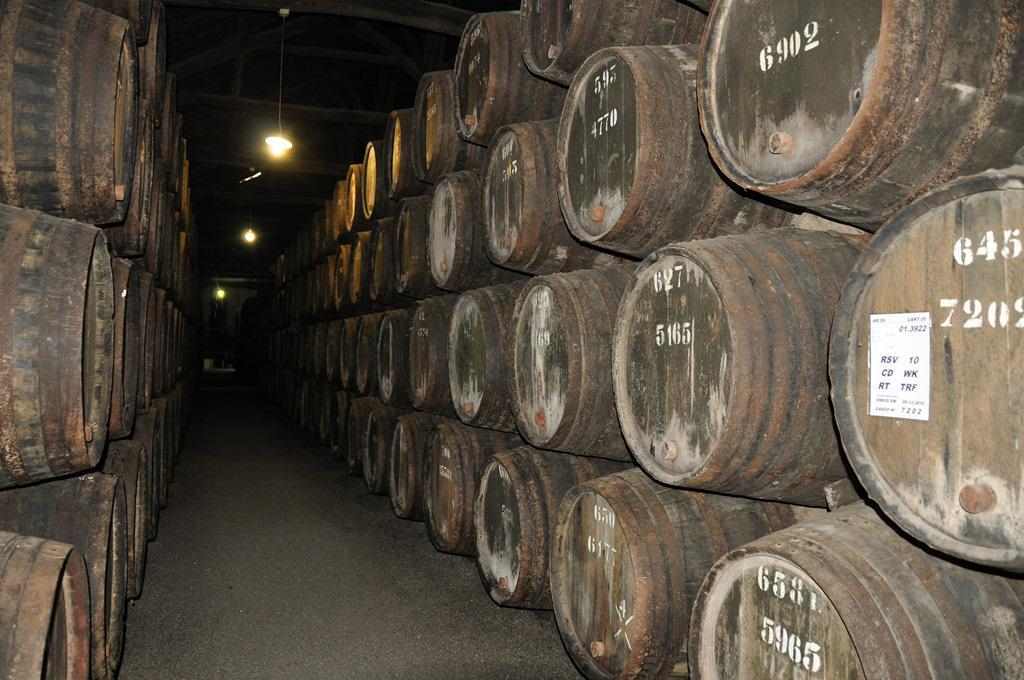
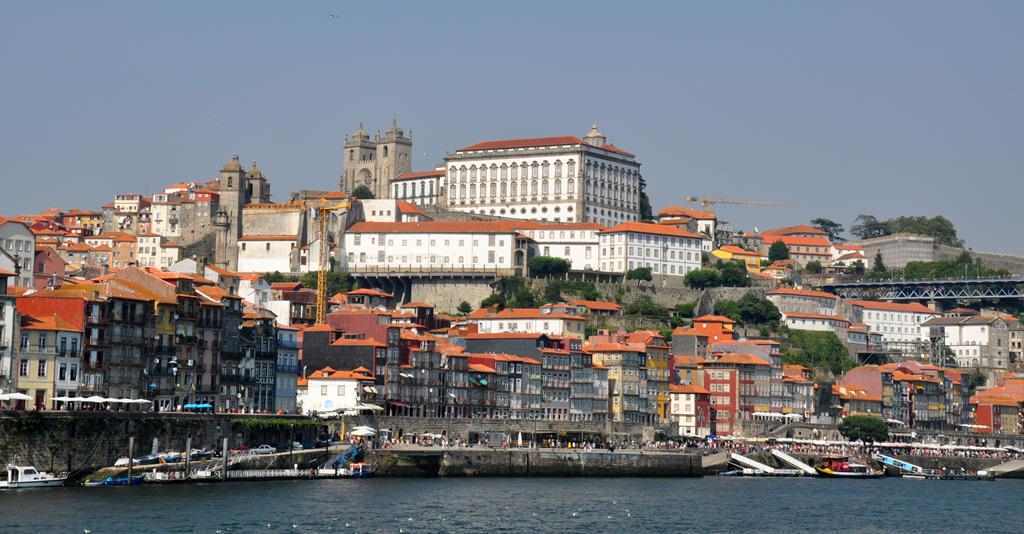
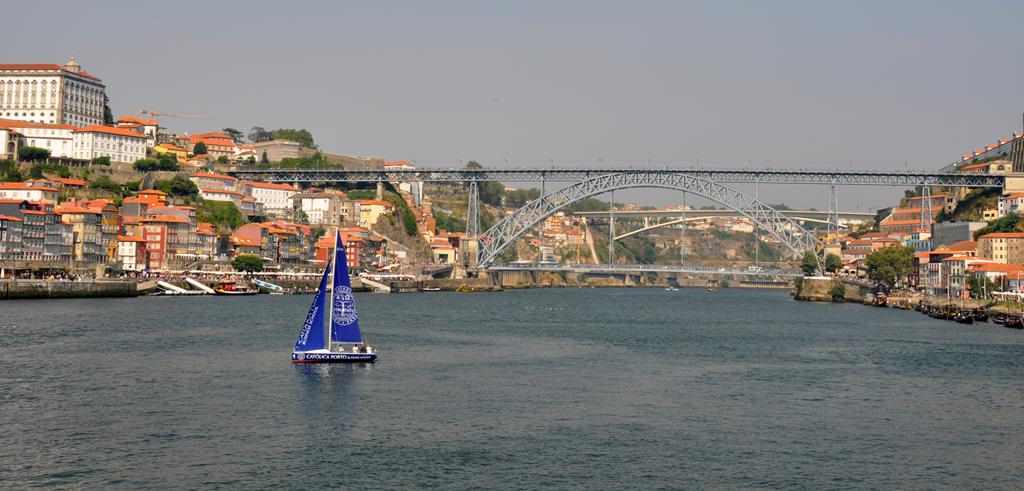
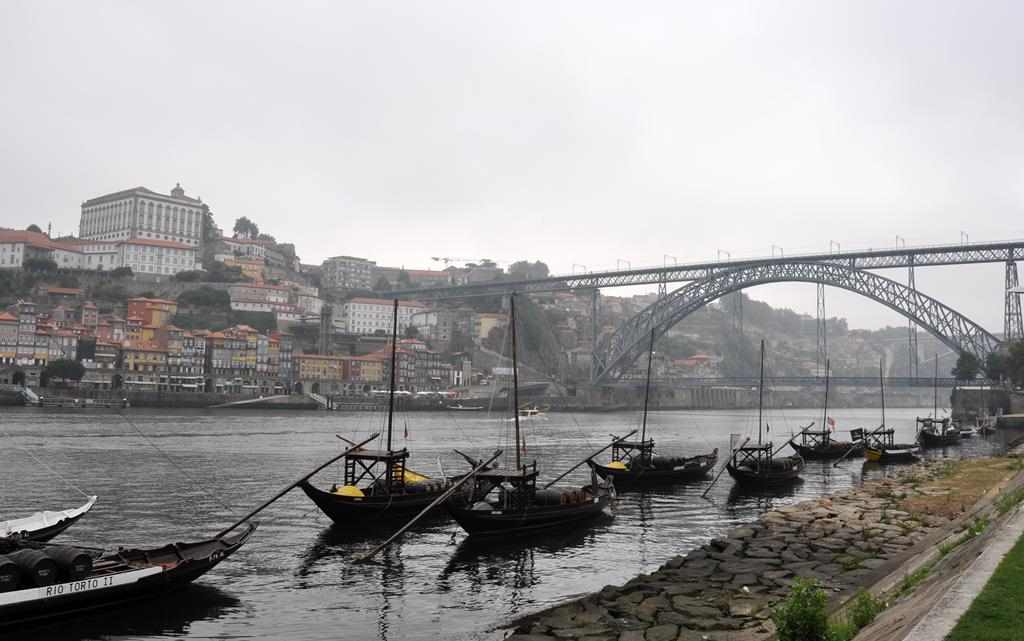
We boarded the Queen Isabel for our 7-day Douro River cruise in Porto.
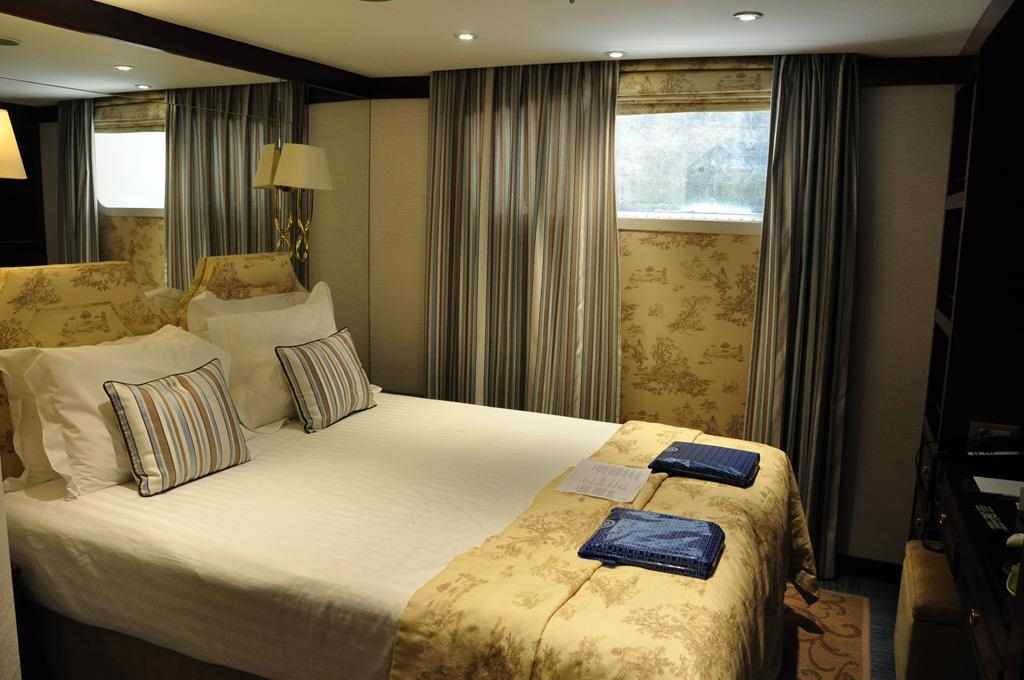
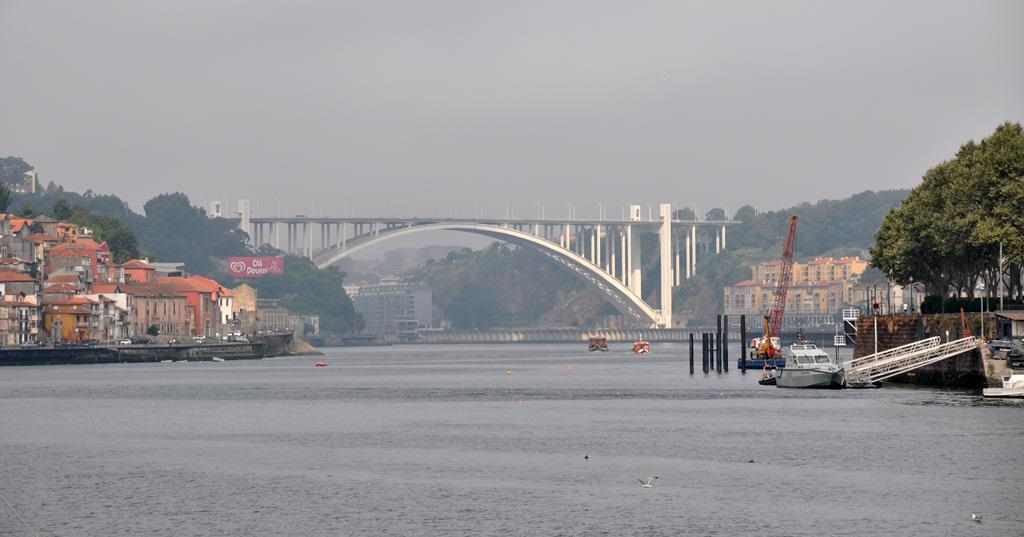
There are a large number os eucalyptus plantations in this area and a number of paper mills.
We were there in the middle of summer and just like Australia they have bushfires.
Because of detours around the fires it took us an extra 2 hours of travel in the bus on the trip from Lisbon to Porto.
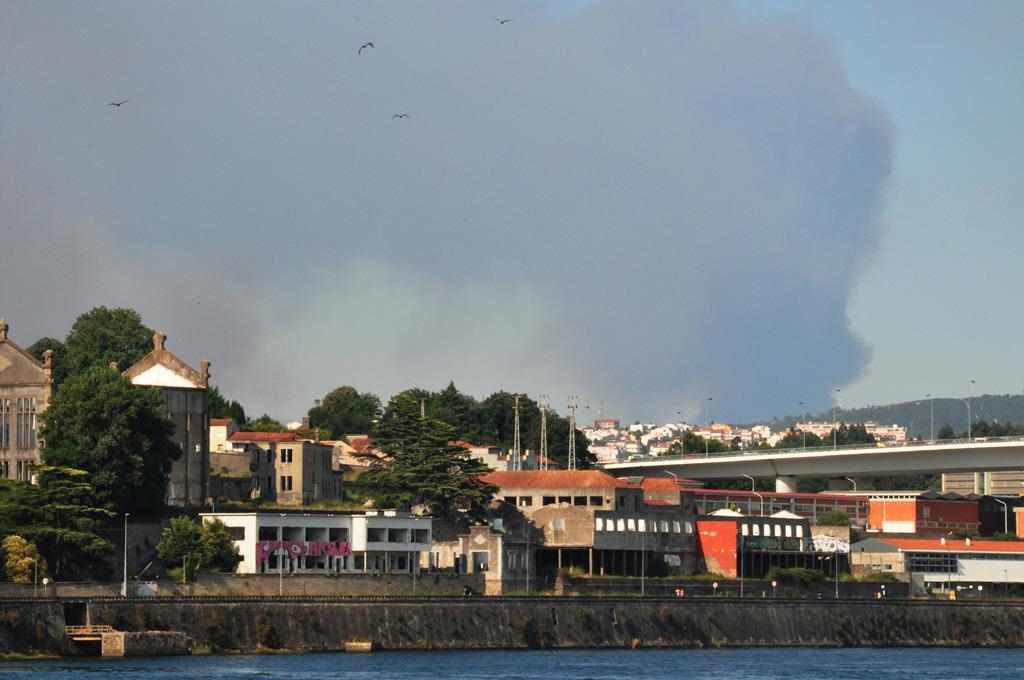
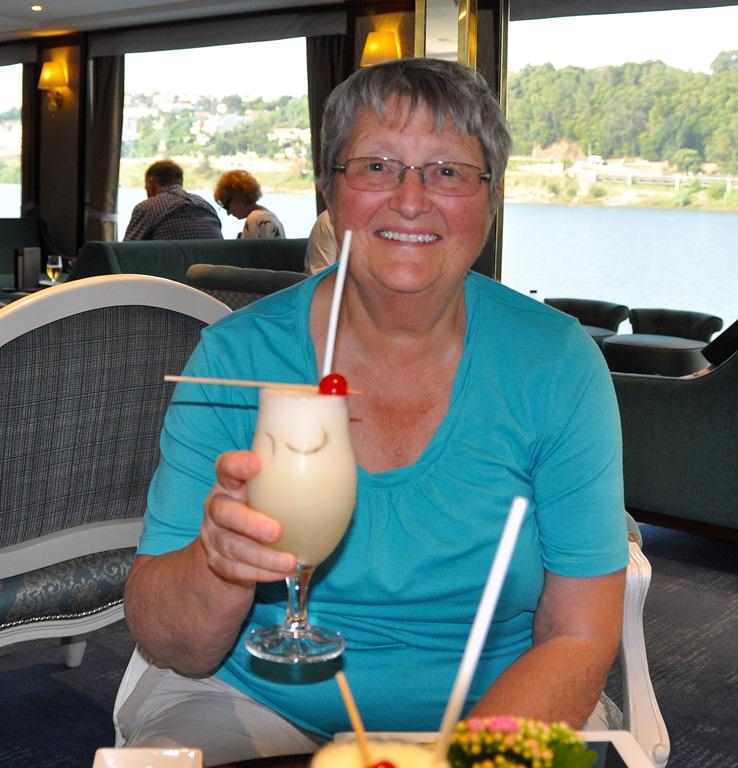
Cruising the Douro River through locks near Peso da Régua to Pinhão

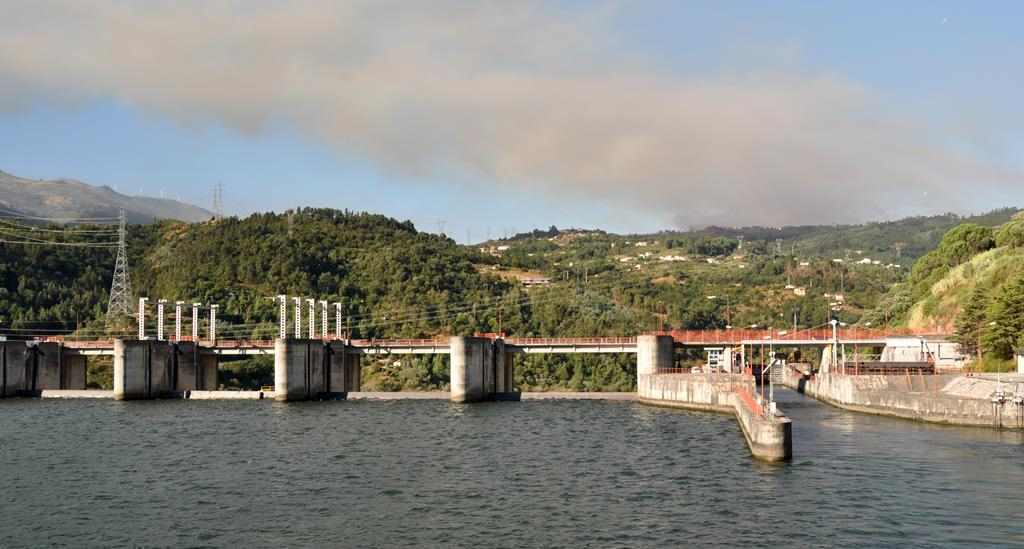
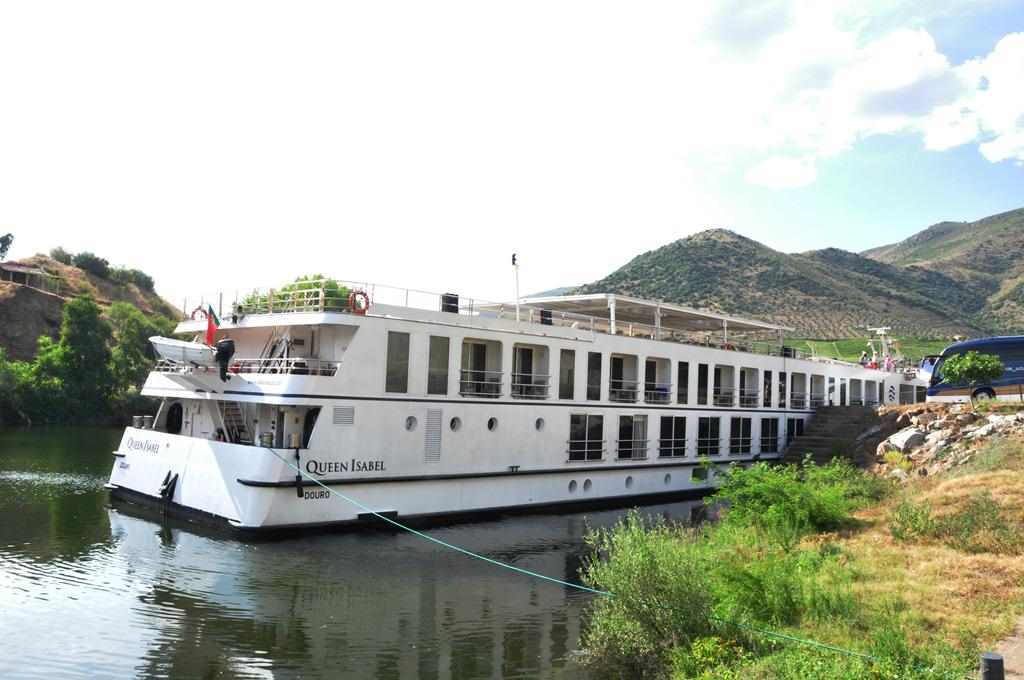
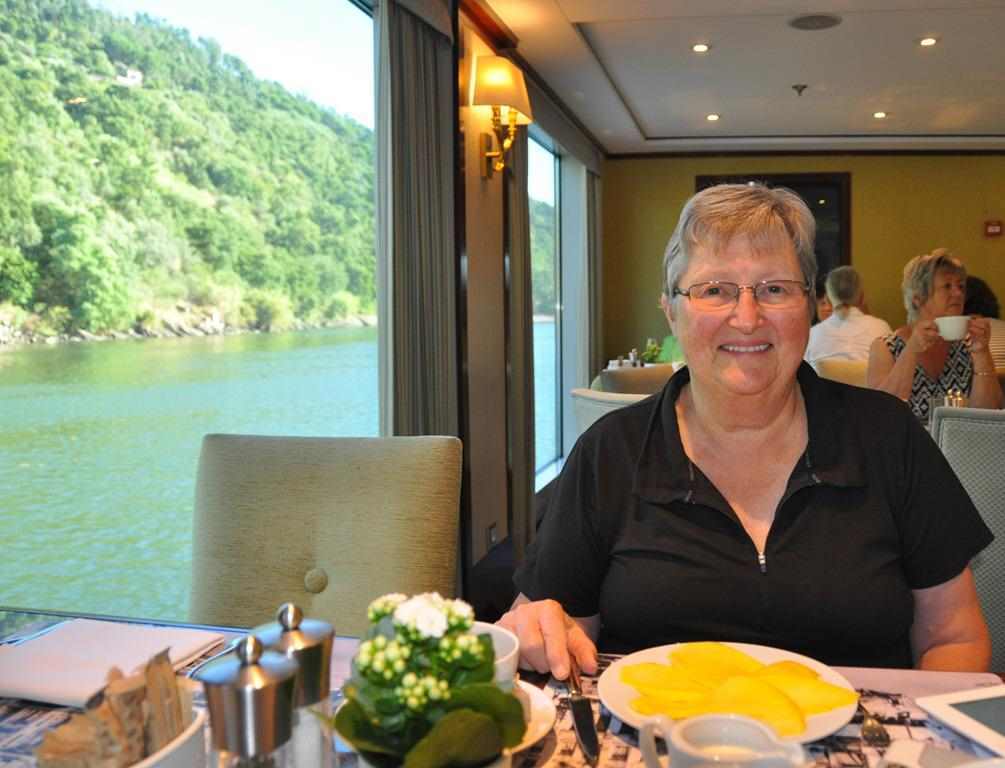
Palácio de Mateus - Mateus Palace
Built in the first half of the eighteenth century, this palace is set in beautiful gardens.
It is considered to be one of the finest examples of baroque civil architecture in Portugal.
The palace is owned by the Mateus Foundation, part of the family who produce rosé.
Most of the rooms had intricately carved wooden ceilings but we were not allowed to take photos inside.
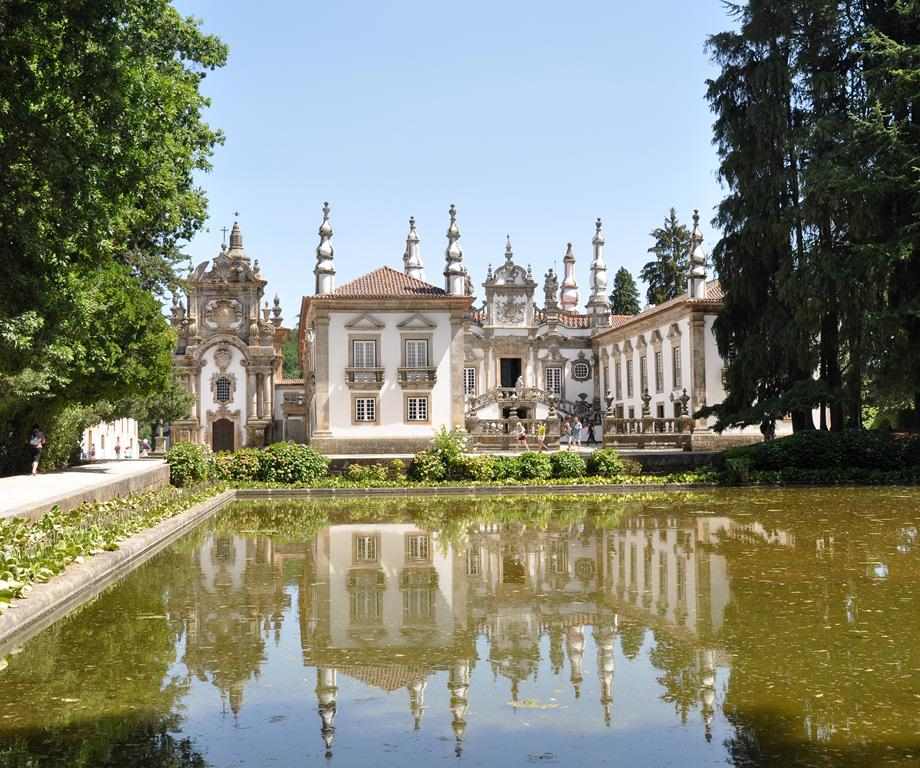
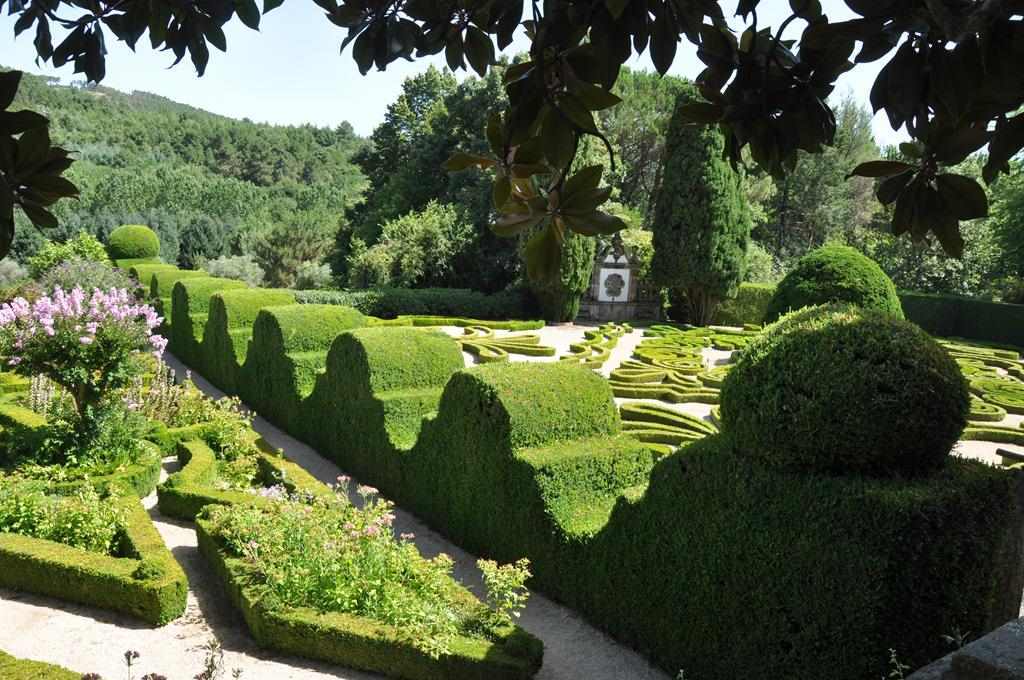
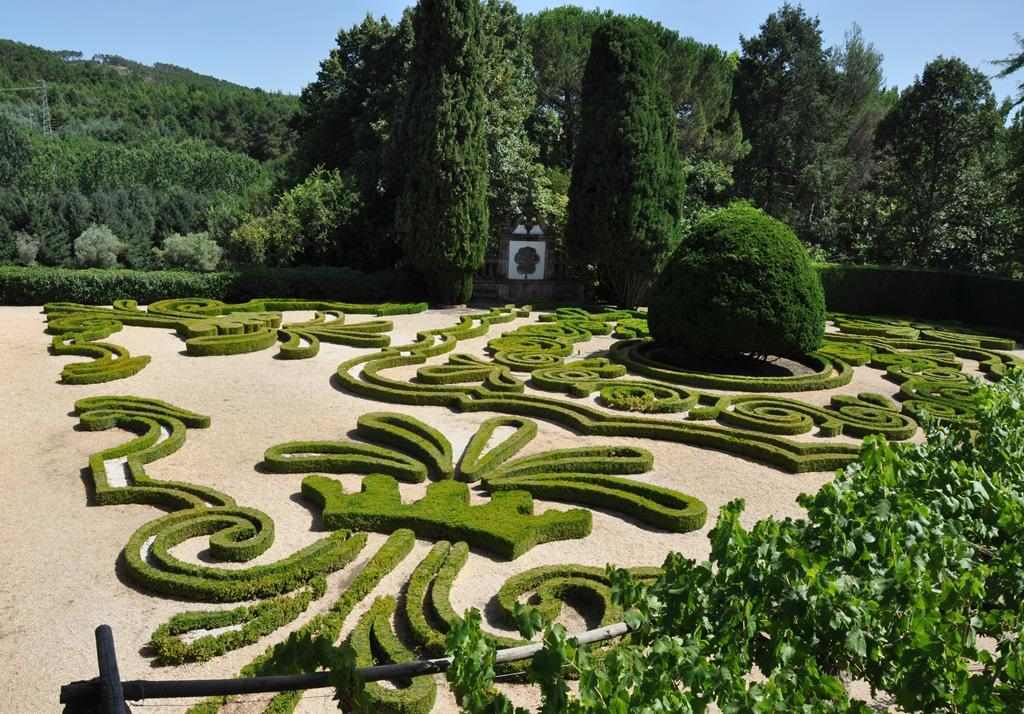
Upper Douro River Valley
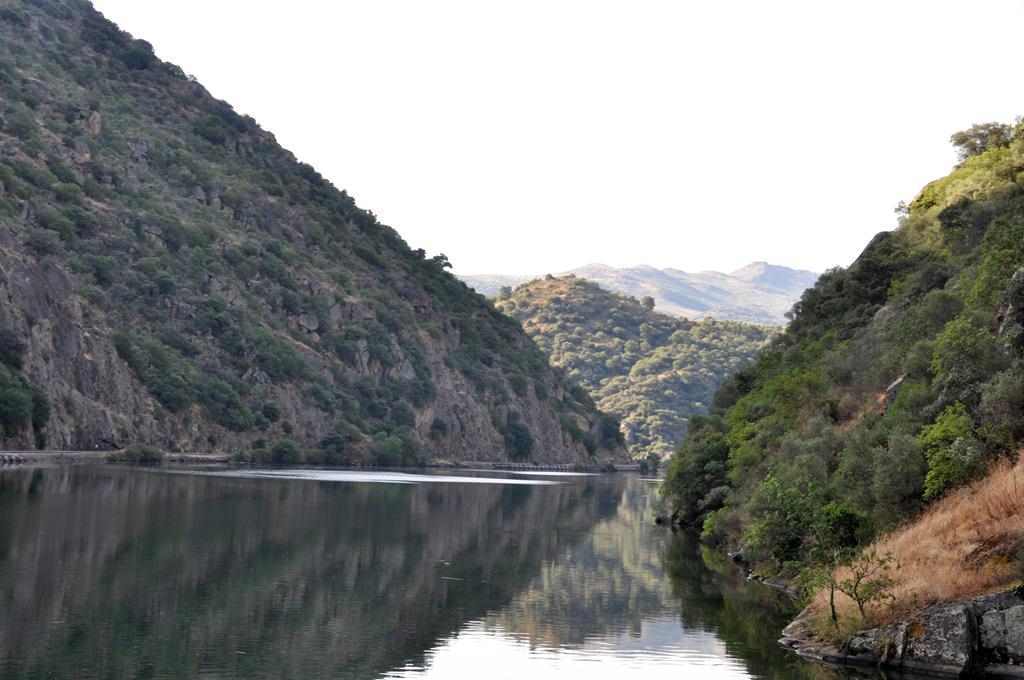
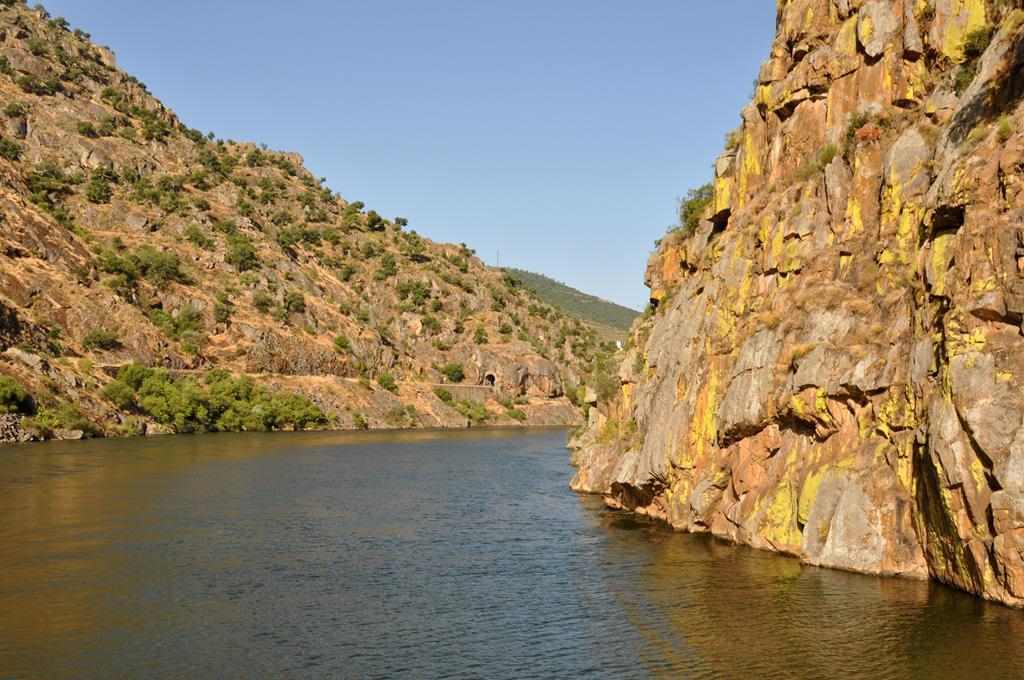
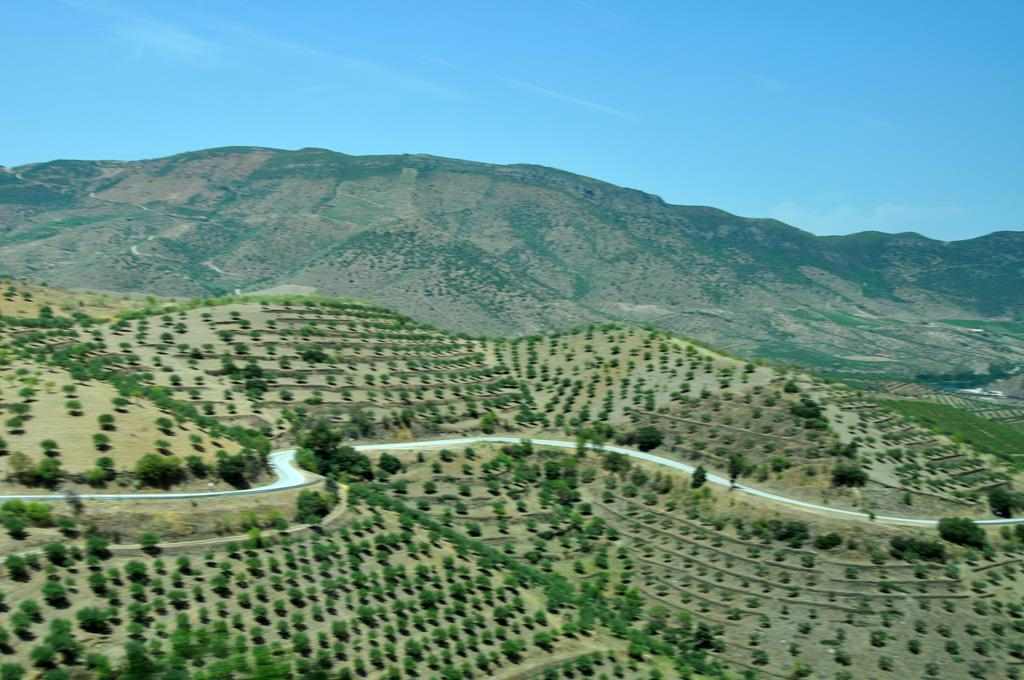
Castelo Rodrigo
From its lofty hilltop position, the small village of Castelo Rodrigo looks down over the plateau stretching eastwards to Spain
and northwards to the deep valley of the River Douro.
According to tradition, it was founded by Alfonso IX of León, in order to be given to Count Rodrigo Gonzalez de Girón, who repopulated it and gave it its name.
With the Treaty of Alcanices, signed in 1297 by D. Dinis, poet and king of Portugal, it came into the possession of the Portuguese crown.
Castelo Rodrigo still preserves scars left by the constant disputes over the territory which has belonged variously to both Portugal and Spain.
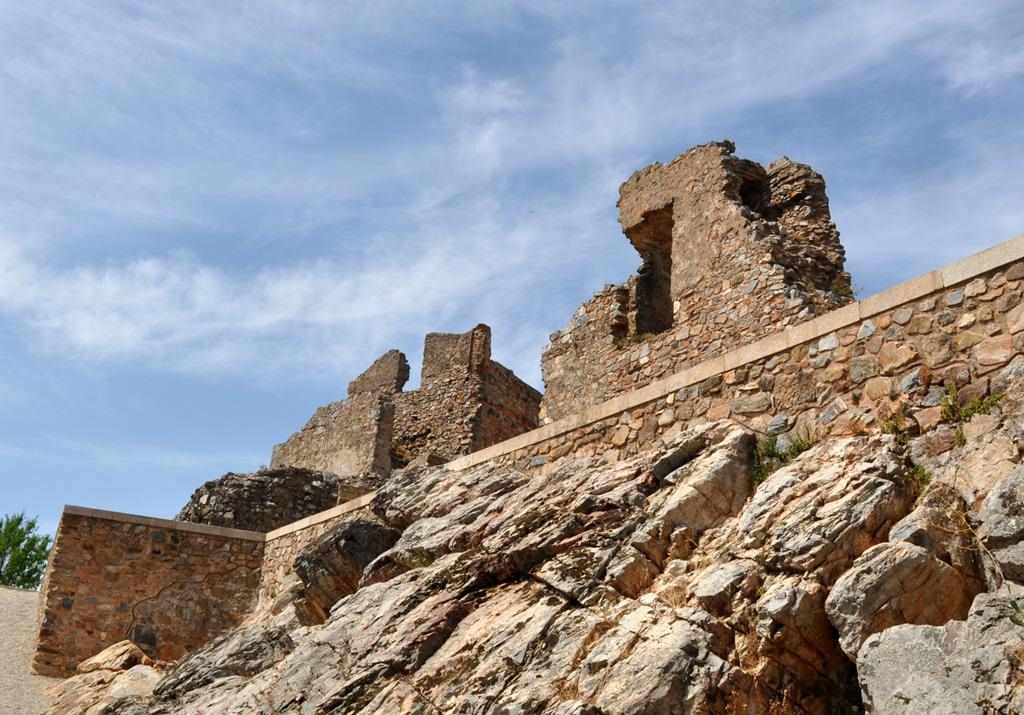
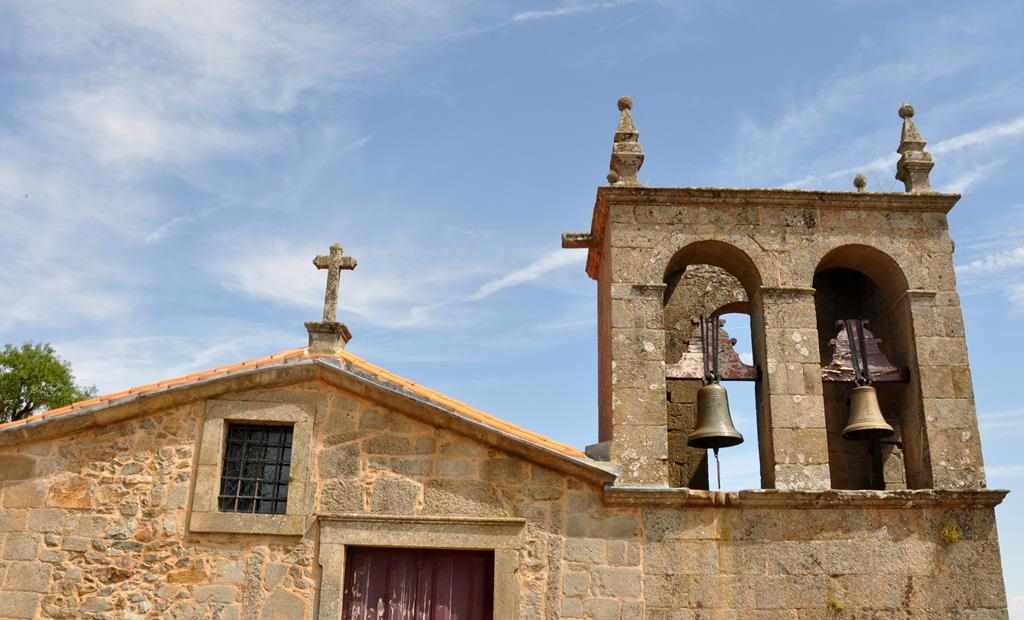
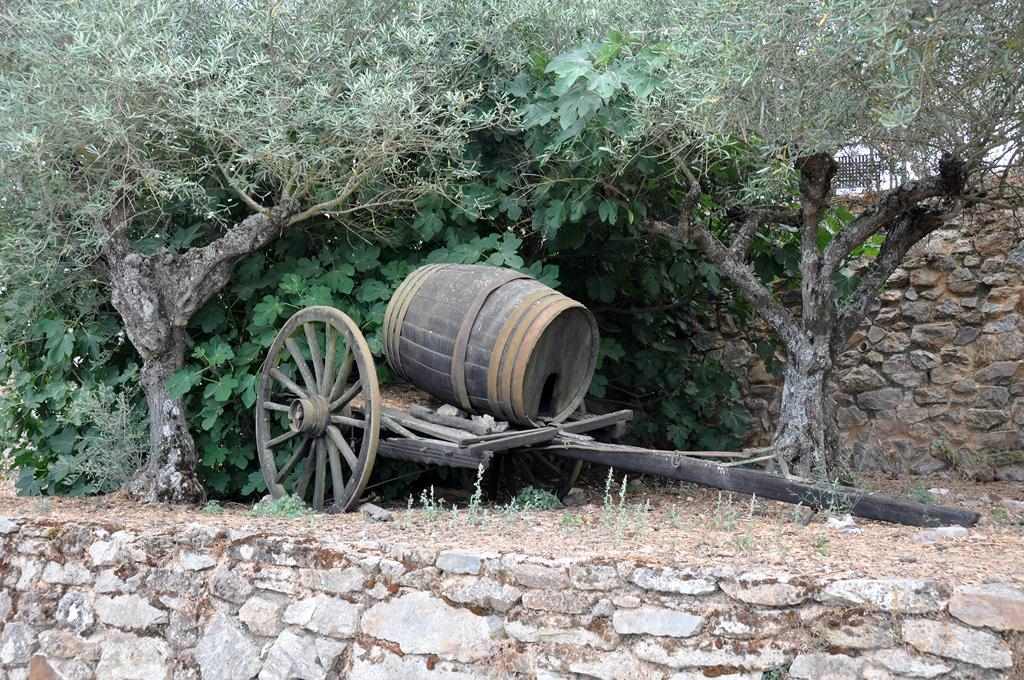

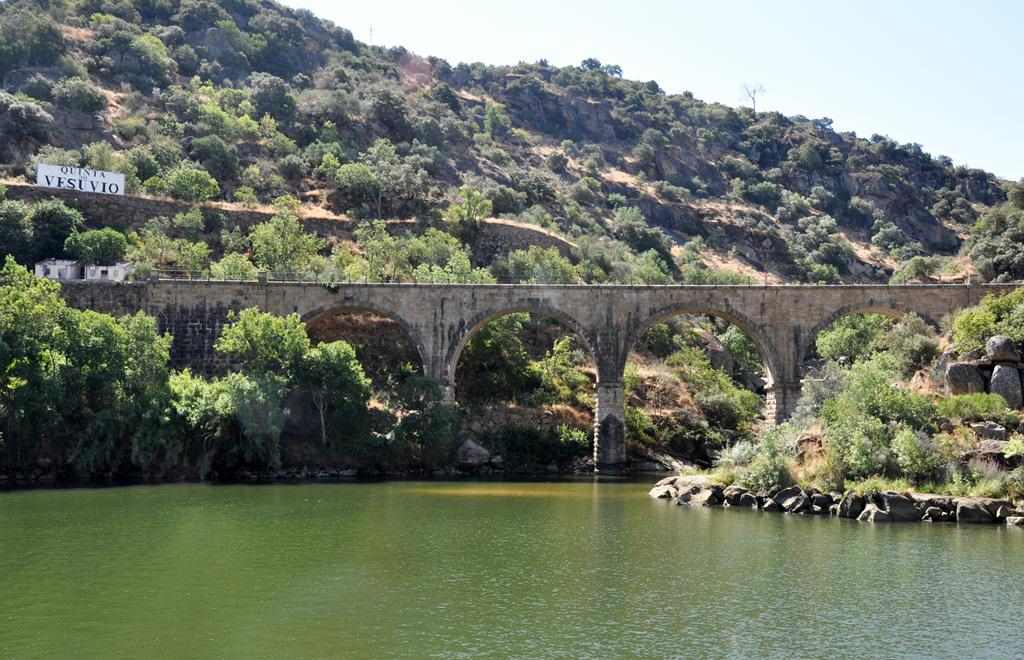
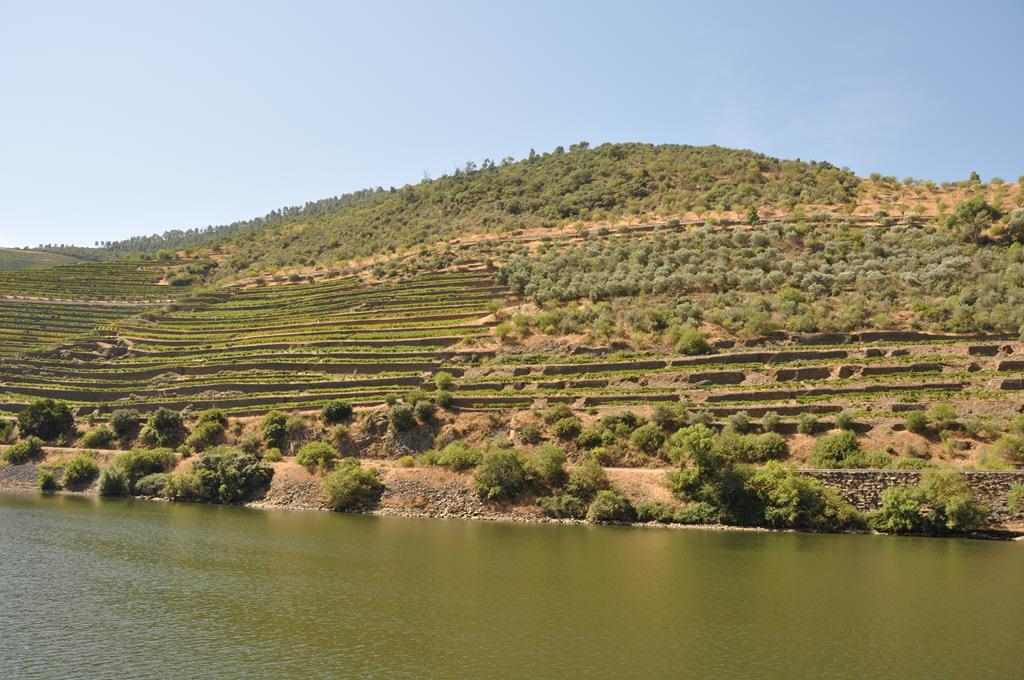
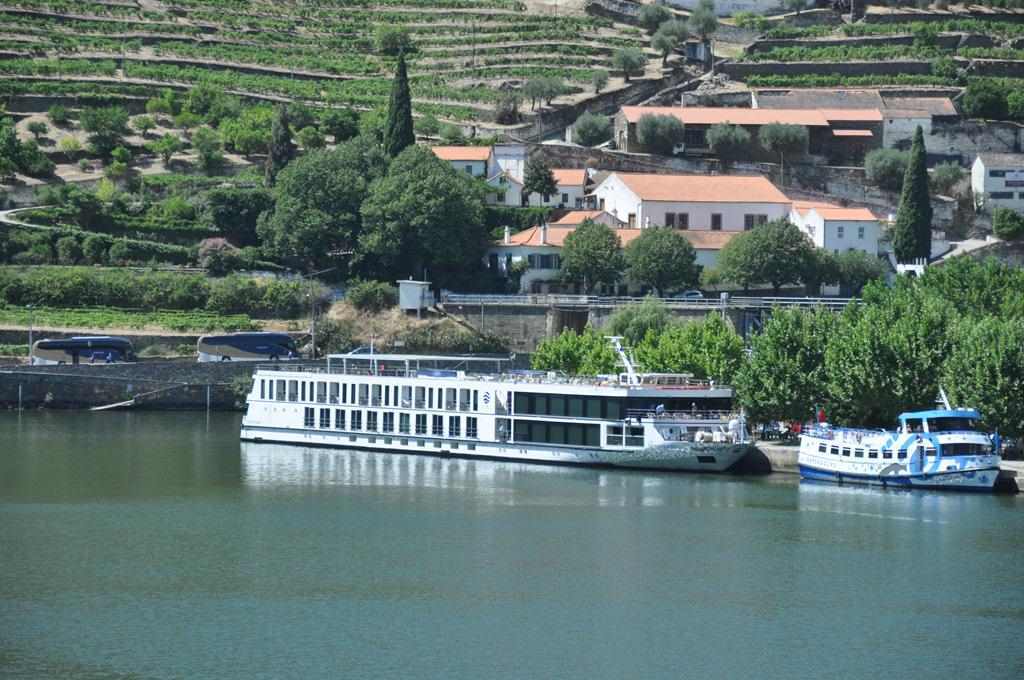
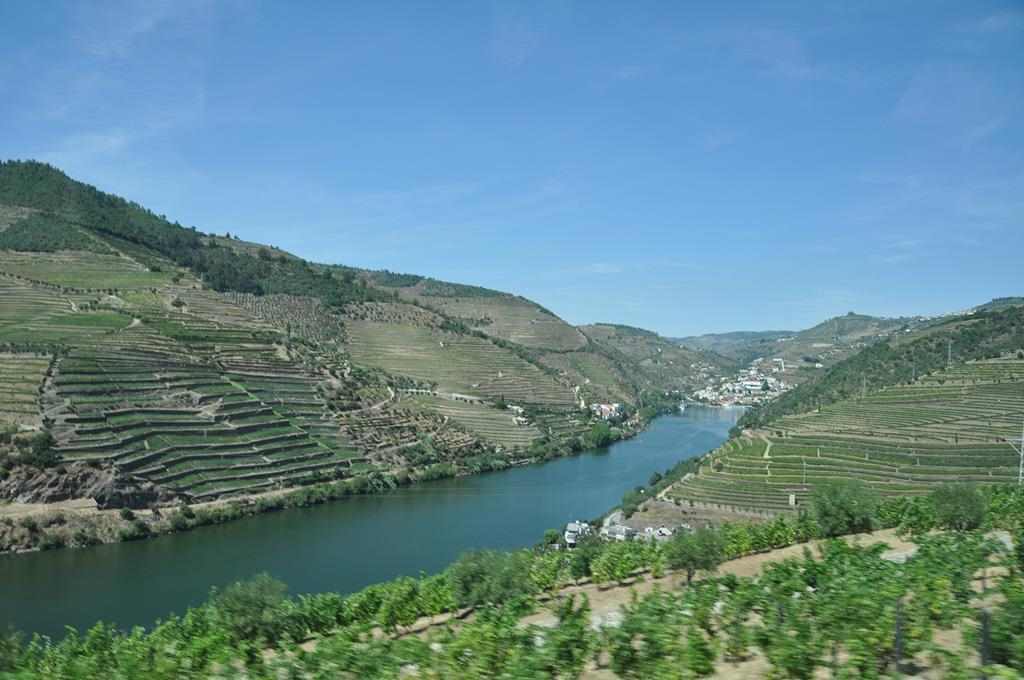
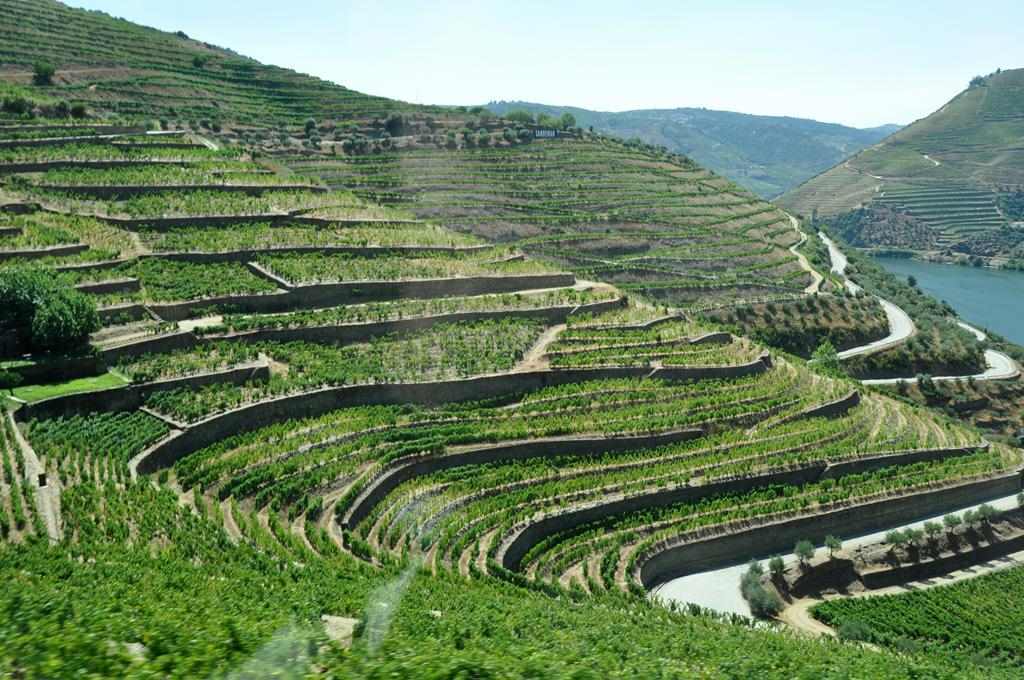
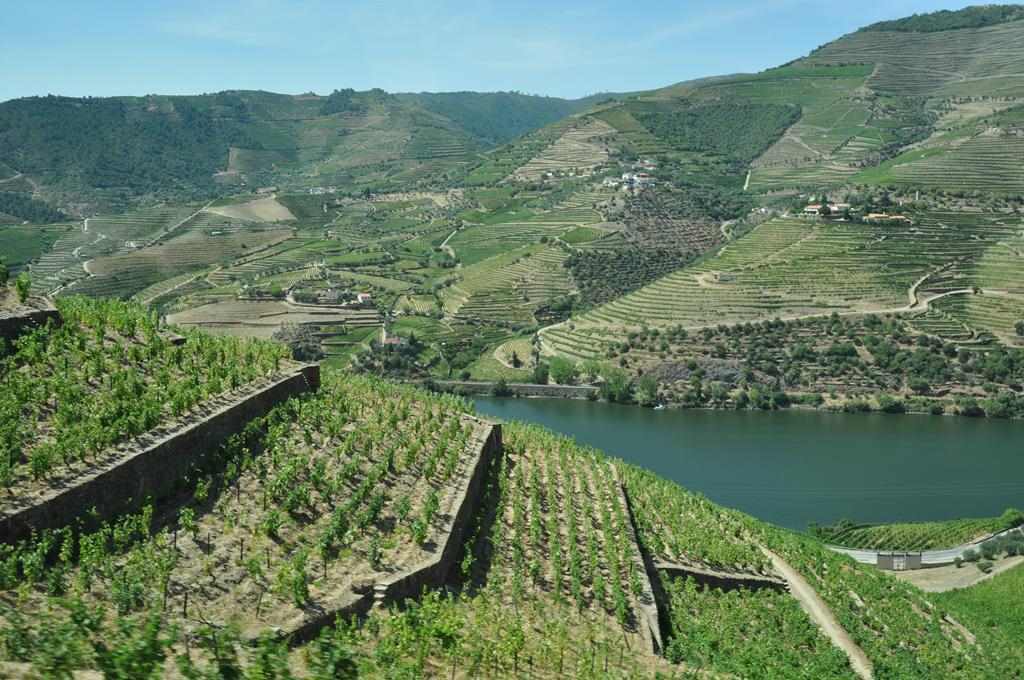
Sandeman Winery - Pinhão
The House of Sandeman was founded in London in 1790 by George Sandeman, a young Scotsman,
and has grown to be one of the most prestigious Porto Wine brands in the world.
It is a big operation with millions of bottles of wine produced each year.
They gave us a taste of a white and a ruby port
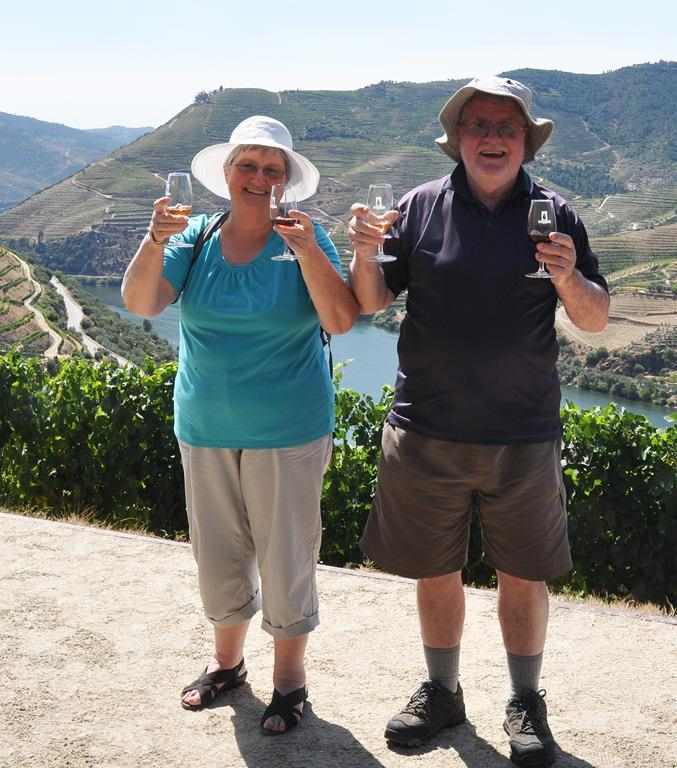

Pinhão
The town of Pinhão is about 120 km from Porto and 380 km from Lisbon in the heart of the beautiful Douro Valley.
The Douro Valley is the oldest demarcated wine region in the world and has a microclimate perfect for growing grapes for the famous Port wine.
Terraced vineyards practically climb straight up the vertical slopes stretching up from the river.
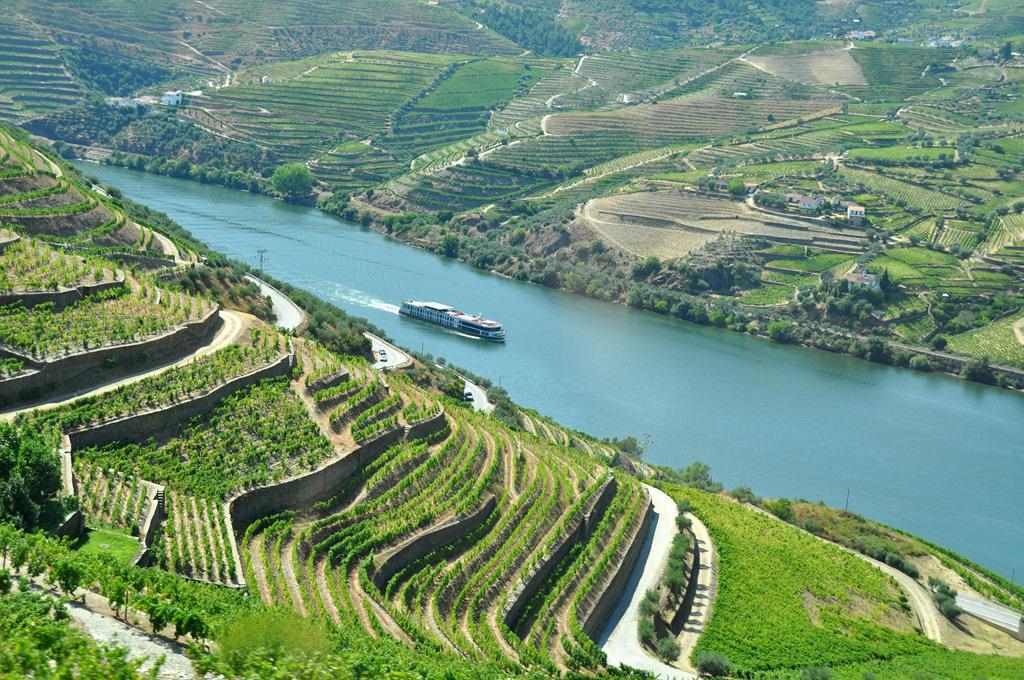
Considered to be one of the most beautiful train stations in Portugal, Pinhão Train Station has a collection of azulejos (tiles) from 1937.
The four walls of the station are decorated with 24 blue glazed mosaics made of more than 100 azulejos
and depict typical scenes of the Duoro Valley all related to port wine production.
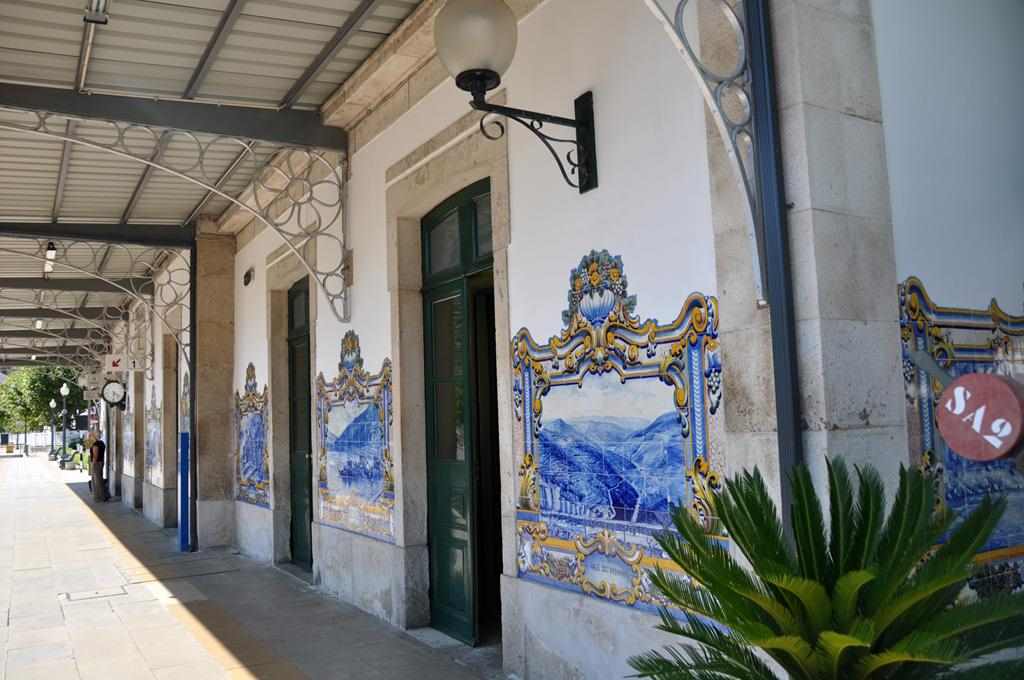
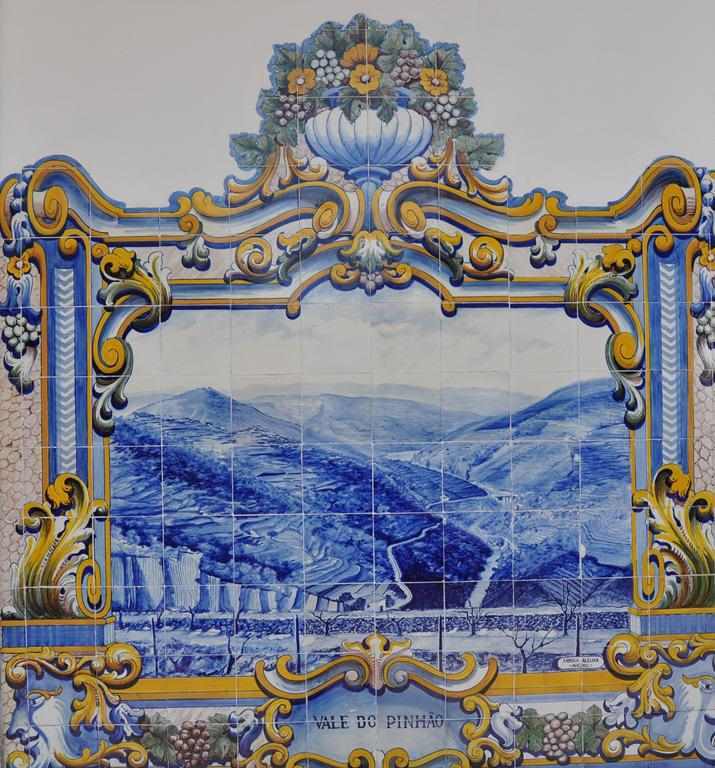
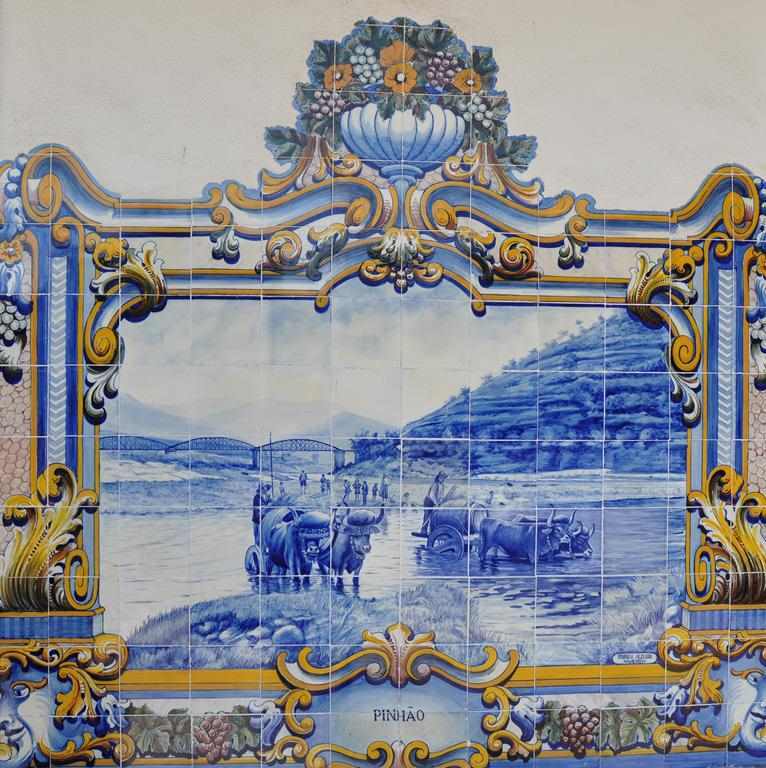
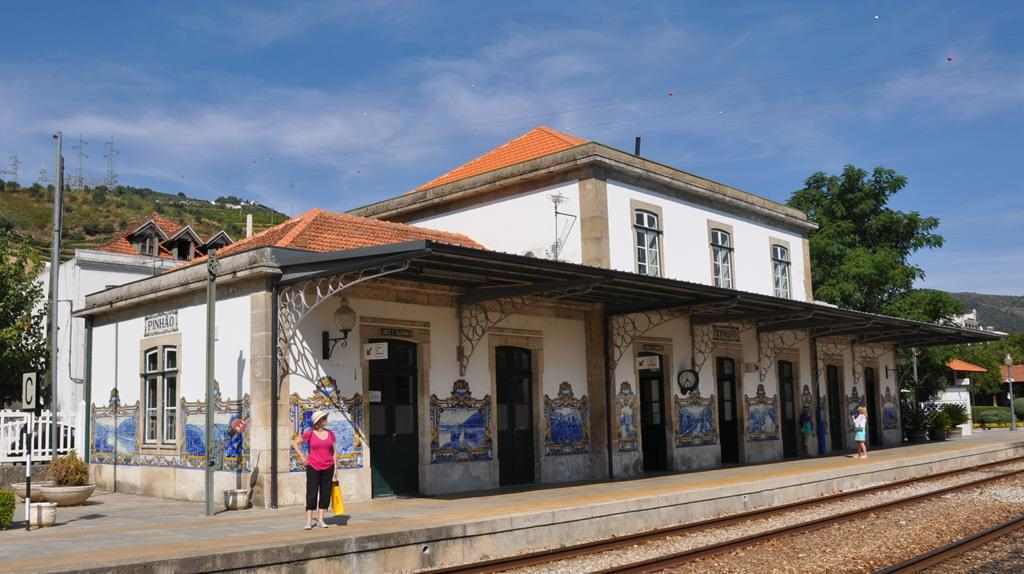
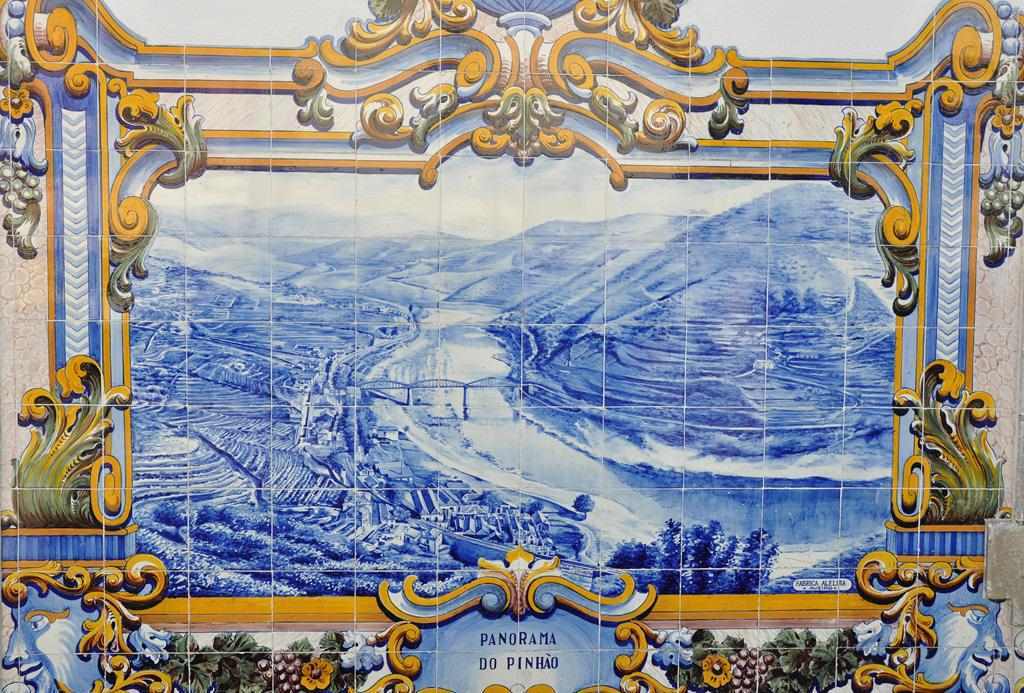
A rabelo boat, a typical wooden Portuguese vessel once used for the transport of wine casks,
from the quintas (wine estates) to Porto for bottling, sales and export.
Since road transport is now used to carry the wine to Porto, these rabelo are used for tourist cruises.
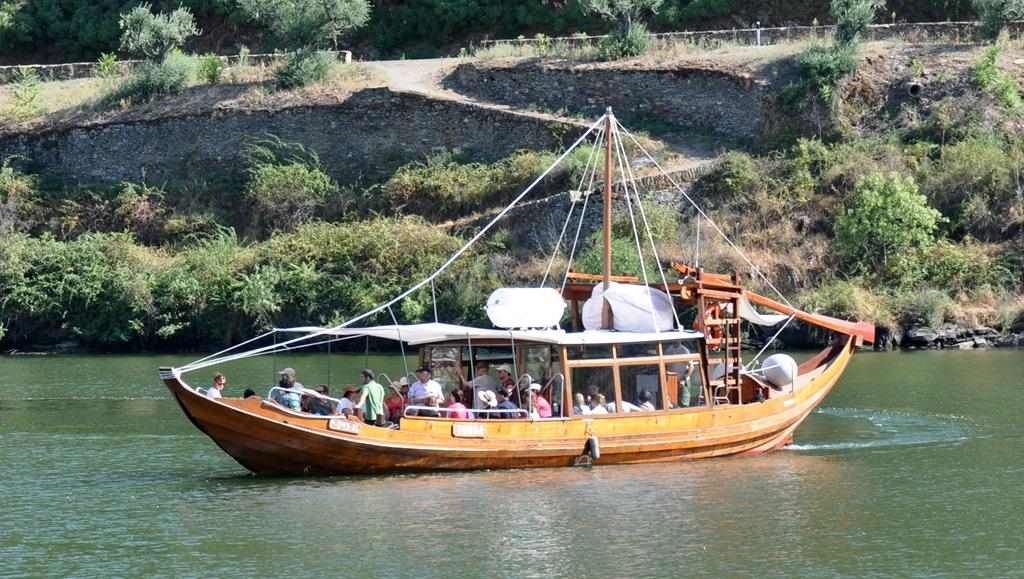
The captain of the Queen Isabel.
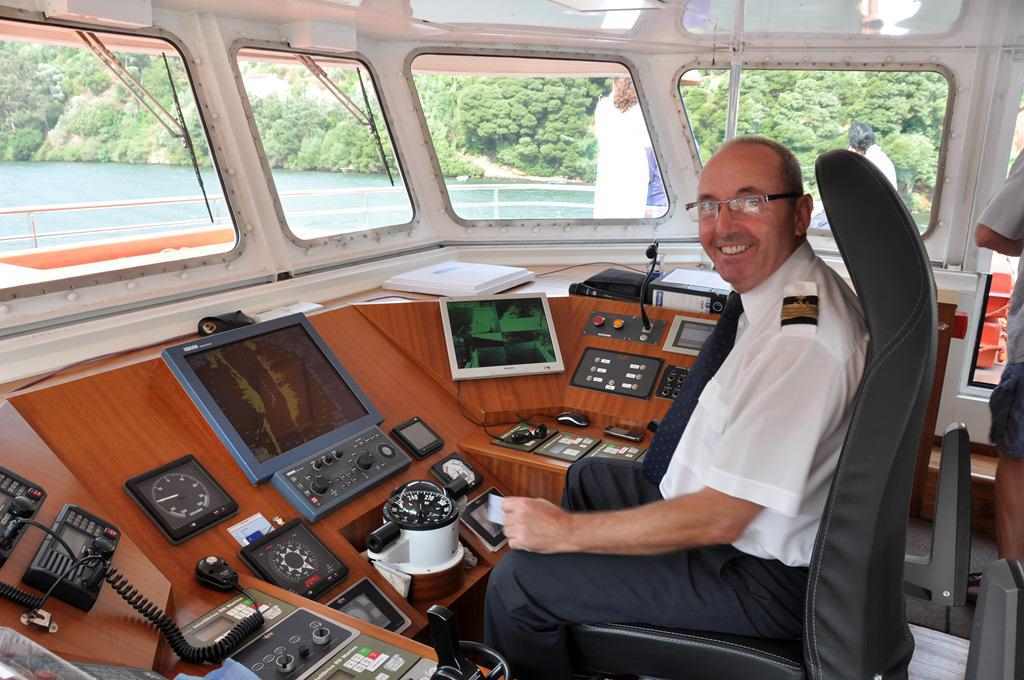
My 72nd birthday on board the Queen Isabel
They gave me a small cake. It was our last night on board.
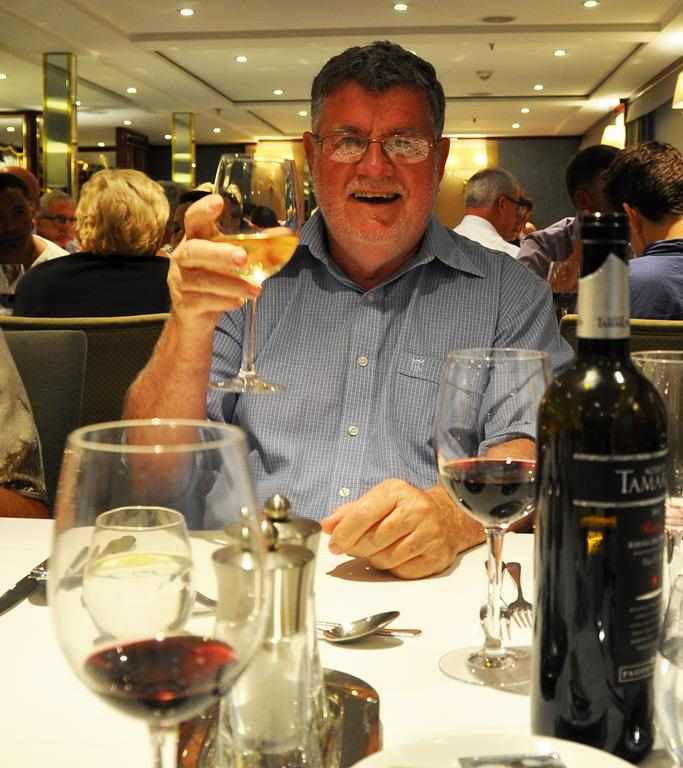
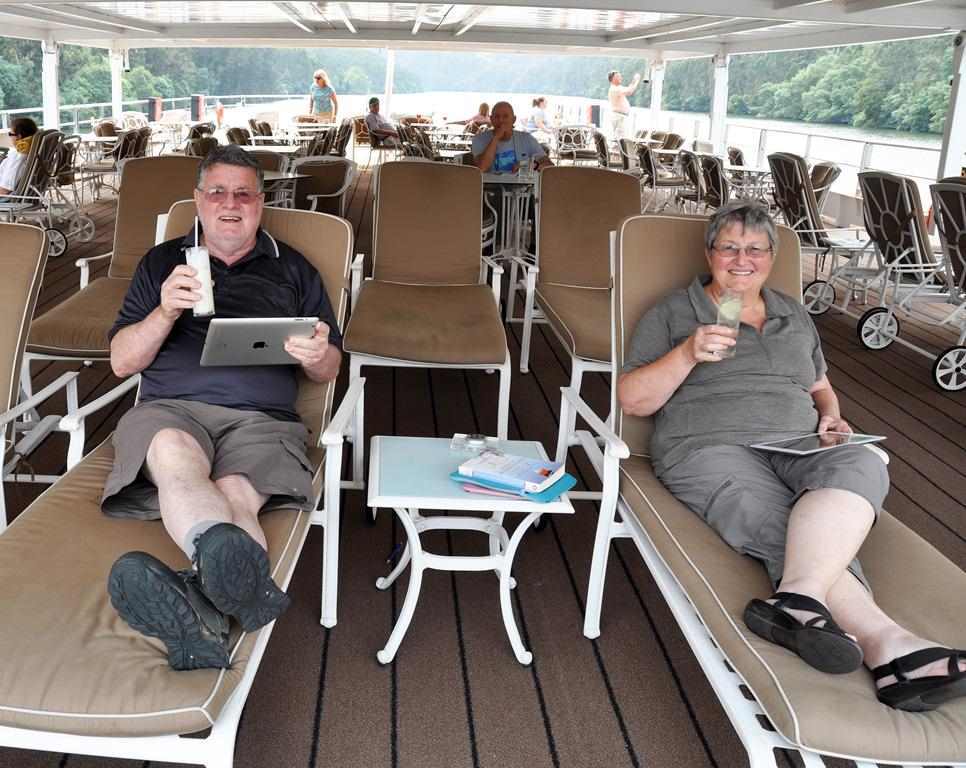
Guimarães
About an hour from Porto, Guimarães has a significant historical importance due to the role it played in the foundation of Portugal.
The city is often referred to as the "birthplace of the Portuguese nationality" or "the cradle city" (Cidade Berço in Portuguese)
because it is widely believed that Portugal's first King, Afonso Henriques, was born there.
For some decades, Guimarães was the capital of the County of Portugal, however, shortly after the Battle of São Mamede (1128)
due to the needs of the Reconquista, Coimbra became the kingdom's capital.
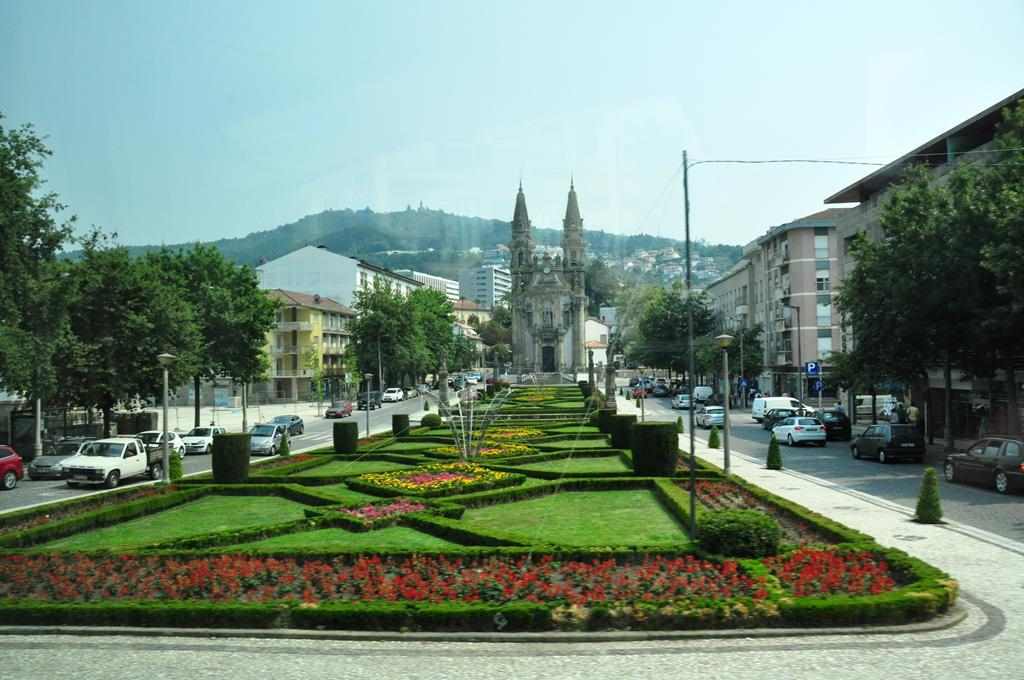
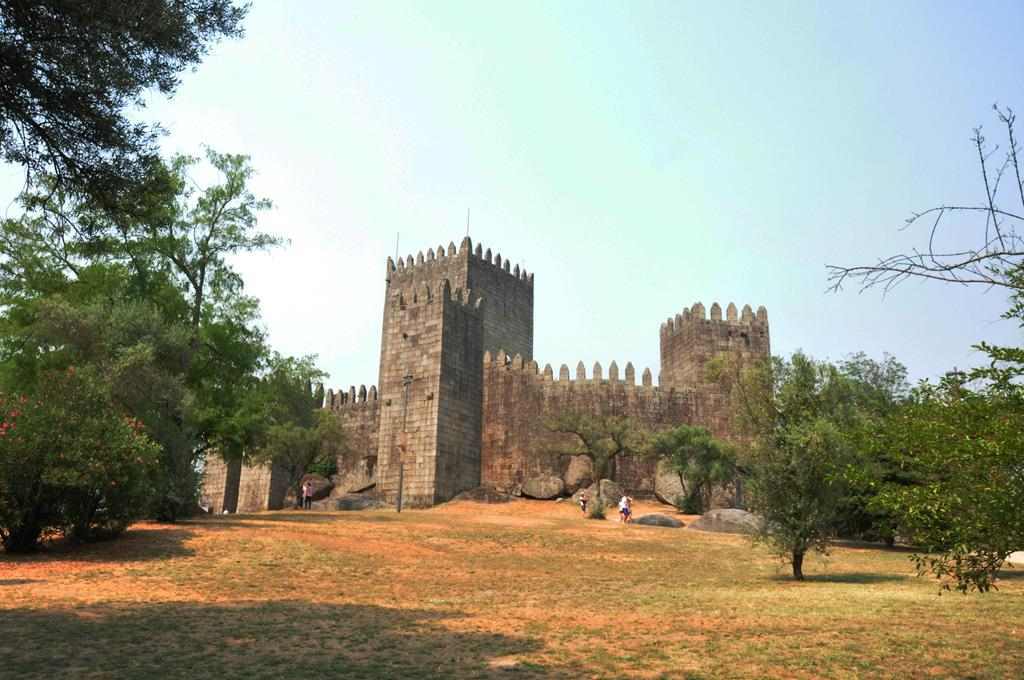
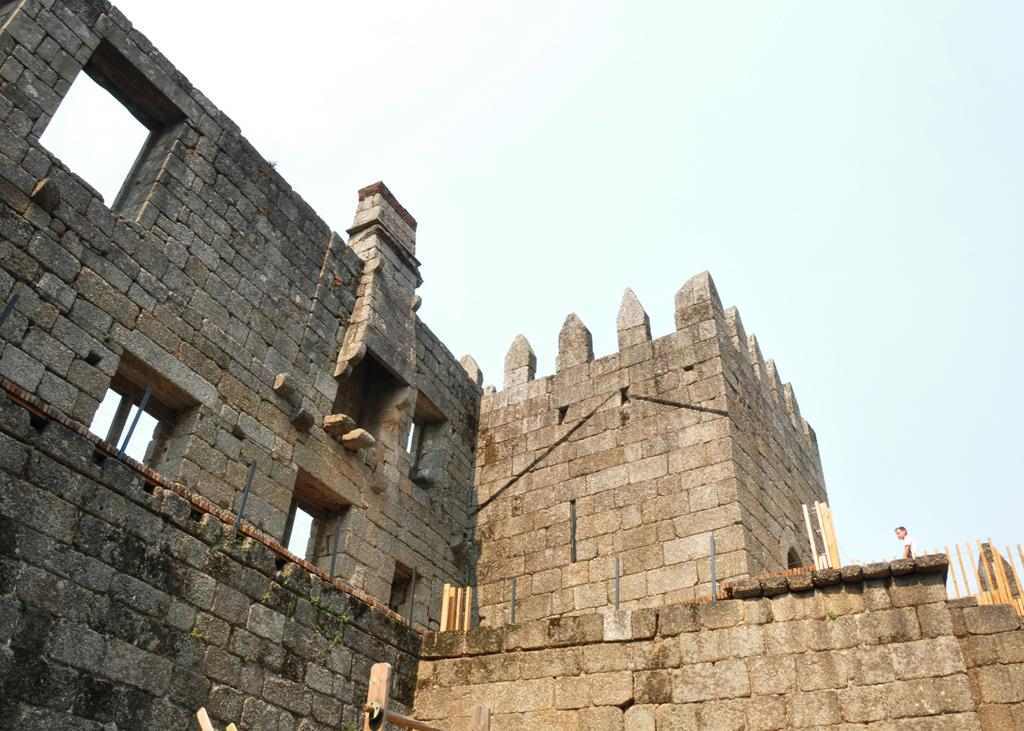
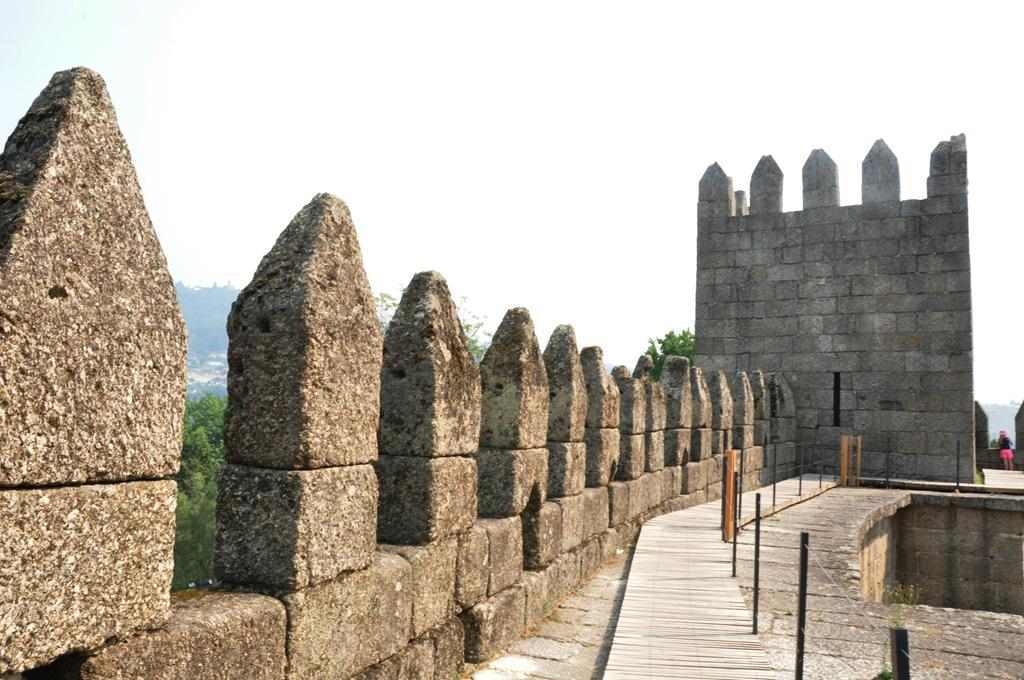
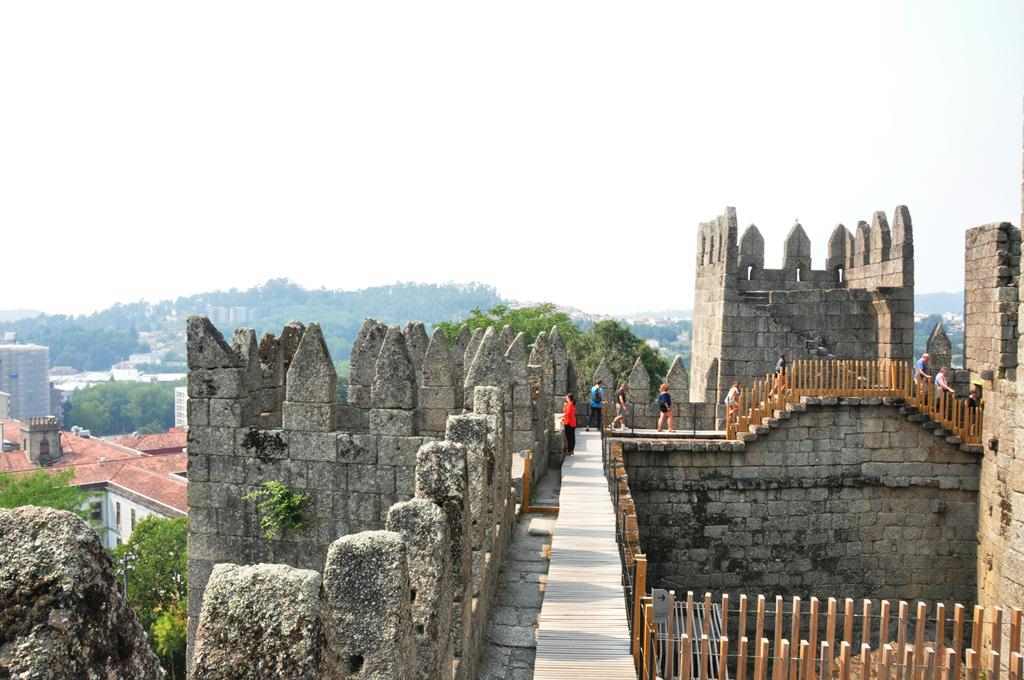
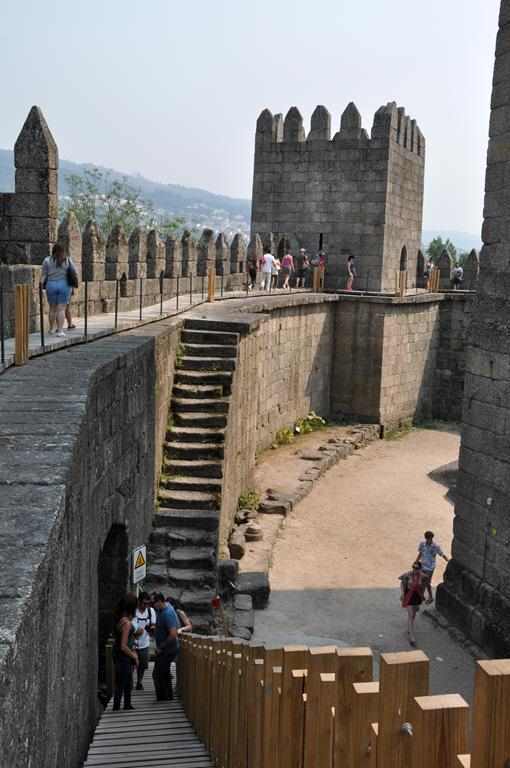
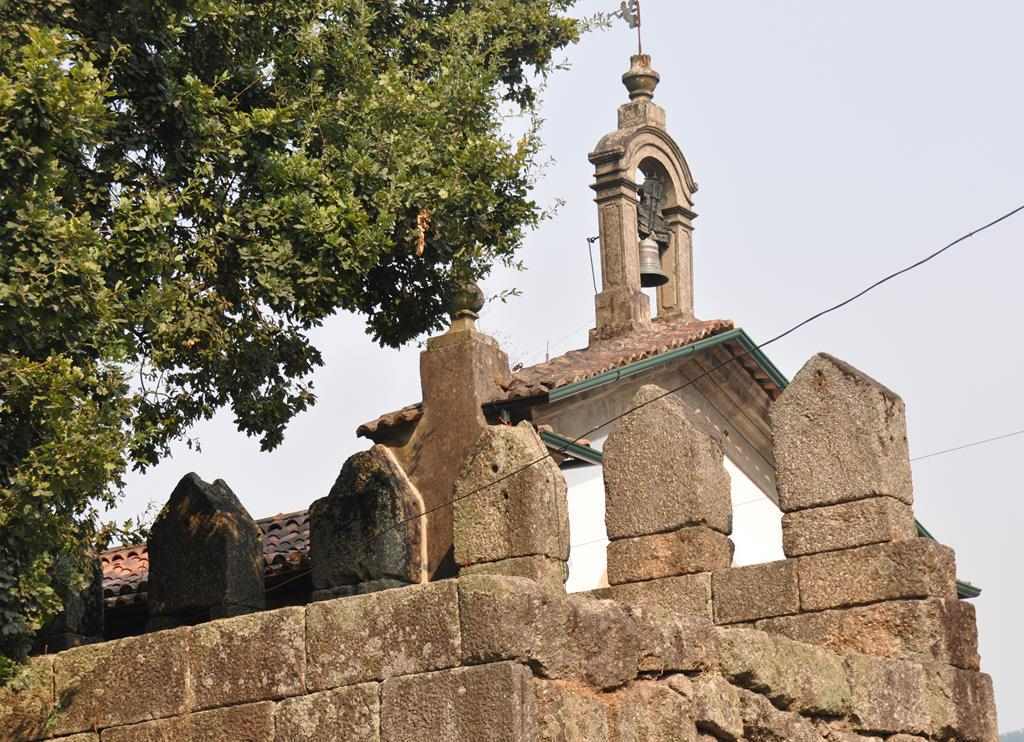
The Arrábida Bridge is an arch bridge over the Douro River that connects Porto to Vila Nova de Gaia, in Portugal.
It is the most downstream bridge across the Douro River, just a few kilometers from the Atlantic Ocean.
At the time of its completion in 1963, the bridge's main span of 270m was the largest of any concrete-arch bridge in the world.


The end of a great 7-day cruise and of our 11 days in Portugal.
From Porto we flew to Stansted near London.
We continued our 7-week 2016 European tour with a 9-day tour of England and Wales and a 9-day tour of Scoctland.
In July - August - September 2016 we spent 11 days in Portugal on our 49-day Melbourne - Dubai - Paris -
World War 1 Western Front Battlefields - Portugal - England - Wales - Scotland - Dubai - Melbourne trip.
After 11 days in France we flew from Orly airport in Paris to Lisbon in Portugal, a 2¼ hour flight.
Lisbon
Wide, wide busses at Lisbon airport.
Belém Tower
Belém Tower, is a fortified tower located in the Lisbon suburb of Santa Maria de Belém.
It is a UNESCO World Heritage Site because of the significant role it played in the Portuguese maritime discoveries of the era of the Age of Discoveries. The tower was commissioned by King John II to be part of a defence system at the mouth of the Tagus river and a ceremonial gateway to Lisbon.
The tower was built in the early 16th century and is a prominent example of the Portuguese Manueline style.
The structure was built from lioz limestone and is composed of a bastion and a 30metre,four-storey tower.
The name comes from the name Bethlehem.
It has housed canons, prisoners and ryalty over the centuries.
Its ornamental façade is striking.
The 25 de Abril Bridge (Ponte 25 de Abril, 25th of April Bridge) connects the city of Lisbon
to the municipality of Almada on the left (south) bank of the Tejo River.
It was inaugurated on August 6, 1966, (its 50 year anniversary was being celebrated while we were in Lisbon) and a train deck was added in 1999.
Because it is a suspension bridge and has similar colouring, it is often compared to the Golden Gate Bridge in San Francisco, US.
It was built by the American Bridge Company which constructed the San Francisco–Oakland Bay Bridge, but not the Golden Gate Bridge.
With a total length of 2,277 m, it is the 27th largest suspension bridge in the world. The upper deck carries six car lanes, while the lower deck carries two train tracks.
Until 1974, the bridge was named Salazar Bridge. The name "25 de Abril" commemorates the Carnation Revolution.
The first aerial crossing of the South Atlantic was made by the Portuguese naval aviators Gago Coutinho and Sacadura Cabral in 1922,
to mark the centennial of Brazil's independence.
Coutinho and Cabral flew in stages from Lisbon, Portugal, to Rio de Janeiro, Brazil, using three different Fairey III biplanes,
and covered a distance of 8,383 km between March 30 and June 17.
The journey started at the Bom Sucesso Naval Air Station in the Tagus, near the Belém Tower in Lisbon, at 16:30 on March 30, 1922
the Portuguese Naval Aviation aircraft Lusitânia. A Fairey III-D MkII seaplane was specifically outfitted for the journey.
In their 1st aircraft they flew from Belém to Las Palmas de Gran Canaria in the Canary Islands, to São Vicente Island, Cape Verde, to Praia on Santiago Island,
and then to the Saint Peter and Saint Paul Archipelago, already in Brazilian waters.
However, when ditching on the rough seas near the archipelago, the Lusitânia lost one of its floats and sank.
The aviators were then carried to the Brazilian Fernando de Noronha islands.
Enthusiastic Portuguese and Brazilian public opinion about the flight led the Portuguese government to send a 2nd aircraft,
another Fairey III seaplane to complete the journey.
The new plane, baptized Pátria, was sent to Fernando Noronha. Coutinho and Cabral flew to the Saint Peter and Saint Paul Archipelago to resume the journey
at the point where had been interrupted.
However, an engine problem forced them to once again make an emergency ditching in the middle of the ocean, where they drifted for nine hours
until being saved by the nearby British cargo ship Paris City, which carried them back to Fernando Noronha.
A 3rd aircraft, another Fairey III – baptized Santa Cruz by the wife of Epitácio Pessoa, the President of Brazil – was sent out to Fernando Noronha
and Coutinho and Cabral resumed their journey, flying to Recife, then to Salvador da Bahia, then to Vitória and from there to Rio de Janeiro,
where they arrived on June 17, 1922, ditching in the Guanabara Bay.
The two men were received as heroes by huge crowds.
Their journey had lasted 79 days; the actual flight time was just 62 hours and 26 minutes
Although the North Atlantic had already been traversed in a non-stop flight by John Alcock and Arthur Brown in 1919,
Coutinho and Cabral's flight remains notable as a milestone in transatlantic aviation, and for its use of new technologies such as the artificial horizon.
Hieronymites Monastery
The Hieronymites
Monastery, or Jerónimos
Monastery, is
a monastery of the Order of Saint Jerome in Lisbon.
The
monastery is one of the
most prominent examples of the Portuguese Late Gothic Manueline style
of architecture.
It
was classified a UNESCO World Heritage
Site, along with the nearby Tower of Belém, in 1983.
King Manuel I built it in 1502 on the site of a hermitage founded by Prince Henry the Navigator,
where Vasco da Gama and his crew spent their last night in Portugal in prayer before leaving for India.
It was built to commemorate Vasco Da Gama's voyage.
Vasco da Gama's tomb was placed inside by the entrance, as was the tomb of poet Luis de Camões,
author of the epic The Lusiads in which he glorifies the triumphs of Da Gama and his compatriots.
Other great figures in Portuguese history are also entombed here,
like King Manuel and King Sebastião, and poets Fernando Pessoa and Alexandre Herculano.
Pasteris de Nata
Pastel de nata is a Portuguese egg tart pastry, common in Portugal, Brazil, Angola, Mozambique, Cape Verde,
São Tomé and Príncipe, Guinea-Bissau, Timor-Leste, Goa, Malacca and Macau.
They were introduced later in mainland China, and countries with significant Portuguese immigrant populations,
such as Canada, Australia, Luxembourg, the United States, and France, among others.
We ate some at a pleasant outdoor cafe near the Hieronymites Monastery.
We went on an optional tuk-tuk tour of Lisbon.
Águas Livres Aqueduct
The Águas Livres Aqueduct ("Aqueduct of the Free Waters") is a historic aqueduct in the city of Lisbon.
The main course of the aqueduct covers 18 km, but the whole network of canals extends through nearly 58 km.
The city of Lisbon has always suffered from the lack of drinking water, and King John V decided to build an aqueduct to bring water from distant sources.
Construction started in 1731 under the direction of an Italian architect Antonio Canevari, replaced in 1732 by a group of Portuguese architects and engineers.
Portuuese architect, Custódio Vieira, conceived the centerpiece of the aqueduct, the arches over the Alcantara valley, completed in 1744.
A total of 35 arches cross the valley, covering 941 m. The tallest arches reach a height of 65 m, and many are pointed, reminiscent of arches in Gothic style.
It is considered a masterpiece of engineering in the Baroque period.
National Palace of Queluz
This 18th-century palace, located at Queluz, about 20km from Lisbon, is one of the last great Rococo buildings to be designed in Europe.
The palace was conceived as a summer retreat for Dom Pedro of Braganza,
later to become husband and then king consort to his own niece, Queen Maria I.
It served as a discreet place of incarceration for Queen Maria as her descent into madness continued in the years following Dom Pedro's death in 1786.
The king's bedroom
Pedro IV (Peter IV) of Portugal, was born in this room in 1798 and he died here in 1834.
He had 36 known children and was the first emperor Brazil (Pedro I) after its independence in 1822.
Sintra
Sintra is a tourist town in the foothills of Portugal's Sintra Mountains, about 30km from Lisbon.
Sintra is known for its many 19th-century Romantic architectural buildings, which has resulted in its classification as a UNESCO World Heritage Site.
Sintra is dotted with royal retreats, estates, castles and other buildings, including the Sintra National Palace.
Sintra Palace
Sintra Palace is the best-preserved medieval royal residence in Portugal,
being inhabited more or less continuously from at least the early 15th century to the late 19th century.
It was once a Moorish (Islamic) palace and most of the buildings date from 1415.
There are lots of tiled rooms with a large Islamic influence (no animals).
Swan Hall
The kitchen chimneys
The Kitchen
The Magpie Room
Beautifully tiled walls in this large room.
Cascais
Situated on the Atlantic Ocean, about 30km from Lisbon, Cascais is a popular vacation spot for both Portuguese and foreign tourists
After 3 nights in Lisbon we travelled by bus to Porto where we statrted our week-long Douro River cruise.
On the way we visited Coimba.
Coimbra
About 210km north of Lisbon, Coimbra is the fourth-largest city in Portugal (after Lisbon, Porto and Braga).
An important city in Roman times, Coimbra was also the capital of Portugal from 1131 to 1255.
During the Late Middle Ages, with its decline as the political centre of the Kingdom of Portugal, Coimbra began to evolve into a major cultural centre.
This was in large part helped by the establishment the University of Coimbra in 1290, the oldest academic institution in the Portuguese-speaking world.
Apart from attracting many European and international students, the university is visited by many tourists for its monuments and history.
Coimbra's historical buildings were classified as a World Heritage site by UNESCO in 2013: "Coimbra offers an outstanding example of an
integrated university city with a specific urban typology as well as its own ceremonial and cultural traditions that have been kept alive through the ages."
Coimbra University
Established in 1290 in Lisbon, it went through a number of relocations until it was moved permanently Coimbra in 1537, being one of the oldest universities
in continuous operation in the world, the oldest university of Portugal, and one of its largest higher education and research institutions.
The University of Coimbra has over 20,000 students, and hosts one of the largest communities of international students in Portugal,
being the most cosmopolitan Portuguese university.
The University's São Miguel Chapel.
The university had a beautiful old library. We visited it but were not allowed to take photos inside.
Here is a photo from the Internet ....

Porto
Porto is 120km north of Coimbra and 330km north of Lisbon.
Porto, also known as Oporto, is the second largest city in Portugal after Lisbon and has a population of 1.9 million.
Located along the Douro river estuary in Northern Portugal, Porto is one of the oldest European centres,
and its historical core was proclaimed a World Heritage Site by UNESCO in 1996.
The western part of its urban area extends to the coastline of the Atlantic Ocean.
Settlement dates back many centuries, when it was an outpost of the Roman Empire.
Its combined Celtic-Latin name, Portus Cale has been referred to as the origin of the name "Portugal",
based on transliteration and oral evolution from Latin.
The bridge in the foreground is the Maria Pia bridge (Ponte Maria Pia), commonly known as Ponte Dona Maria,
a railway bridge built in 1877 by Gustave Eiffel (of Eiffel Tower fame).
Built of wrought iron, its two-hinged crescent arch used to carry the railway to Lisbon for 353 metres across the River Douro at a height of 60 mabove the river.
When constructed it was the longest single-arch span in the world.
It is no longer in use as a rail bridge, a modern replacement having been constructed in 1991.
The Dom Luís I (or Luiz I) Bridge ( Ponte Luís I or Luiz I), a double-decked metal arch bridge spans the Douro River
between the cities of Porto and Vila Nova de Gaia..
At the time of construction its span of 172 m was the longest of its type in the world.
The bridge often is confused with the nearby Maria Pia Bridge, a railway bridge designed by Gustave Eiffel, built nine years earlier and located a kilometre to the east.
However, although they bear a strong resemblance to one another, the earlier bridge has only one deck.
An avenue of strange-shaped sycamore trees
Livraria Lello is frequently rated among the top bookstores in the world.
It is claimed to be the most beautiful bookstore in the world.
Elements of the facade and much of the interior are decorated in Art Nouveau, with some features of the Gothic Revival.
The bookstore was frequented by JK Rowling, author of the Harry Potter series, when she taught English in Porto and is reported to be an inspiration for her writing.
The queue to enter was too long.
São Bento railway station
Inaugurated in 1916, the historical station is known for its tile (azulejo) panels that depict scenes of the History of Portugal.
It is located in the Almeida Garret Square, in the centre of the city.
There are over 20,000 tiles.
They are the work of Jorge Colaço, the most important azulejo painter of the time.
The panels depict landscapes, ethnographic scenes as well as historical events like the Battle of Valdevez (1140),
the meeting of the knight Egas Moniz and Alfonso VII of León (12th century),
the arrival of King John I and Philippa of Lancaster in Porto (1387) and the Conquest of Ceuta (1415).
Taylors and Crofts Cellars
Established over three centuries ago in 1692, Taylor’s is one of the oldest of the founding Port houses.
It is dedicated entirely to the production of Port wine.
Port from the upper areas of the Douro Valley is transported here to be aged in vats before bottling.
The slightly milder and humid climate helps the aging.
After a tour we tasted a light port and a ruby port.
We boarded the Queen Isabel for our 7-day Douro River cruise in Porto.
There are a large number os eucalyptus plantations in this area and a number of paper mills.
We were there in the middle of summer and just like Australia they have bushfires.
Because of detours around the fires it took us an extra 2 hours of travel in the bus on the trip from Lisbon to Porto.

Cruising the Douro River through locks near Peso da Régua to Pinhão
Palácio de Mateus - Mateus Palace
Built in the first half of the eighteenth century, this palace is set in beautiful gardens.
It is considered to be one of the finest examples of baroque civil architecture in Portugal.
The palace is owned by the Mateus Foundation, part of the family who produce rosé.
Most of the rooms had intricately carved wooden ceilings but we were not allowed to take photos inside.
Upper Douro River Valley
Castelo Rodrigo
From its lofty hilltop position, the small village of Castelo Rodrigo looks down over the plateau stretching eastwards to Spain
and northwards to the deep valley of the River Douro.
According to tradition, it was founded by Alfonso IX of León, in order to be given to Count Rodrigo Gonzalez de Girón, who repopulated it and gave it its name.
With the Treaty of Alcanices, signed in 1297 by D. Dinis, poet and king of Portugal, it came into the possession of the Portuguese crown.
Castelo Rodrigo still preserves scars left by the constant disputes over the territory which has belonged variously to both Portugal and Spain.


Sandeman Winery - Pinhão
The House of Sandeman was founded in London in 1790 by George Sandeman, a young Scotsman,
and has grown to be one of the most prestigious Porto Wine brands in the world.
It is a big operation with millions of bottles of wine produced each year.
They gave us a taste of a white and a ruby port
Pinhão
The town of Pinhão is about 120 km from Porto and 380 km from Lisbon in the heart of the beautiful Douro Valley.
The Douro Valley is the oldest demarcated wine region in the world and has a microclimate perfect for growing grapes for the famous Port wine.
Terraced vineyards practically climb straight up the vertical slopes stretching up from the river.
Considered to be one of the most beautiful train stations in Portugal, Pinhão Train Station has a collection of azulejos (tiles) from 1937.
The four walls of the station are decorated with 24 blue glazed mosaics made of more than 100 azulejos
and depict typical scenes of the Duoro Valley all related to port wine production.
A rabelo boat, a typical wooden Portuguese vessel once used for the transport of wine casks,
from the quintas (wine estates) to Porto for bottling, sales and export.
Since road transport is now used to carry the wine to Porto, these rabelo are used for tourist cruises.
The captain of the Queen Isabel.
My 72nd birthday on board the Queen Isabel
They gave me a small cake. It was our last night on board.
Guimarães
About an hour from Porto, Guimarães has a significant historical importance due to the role it played in the foundation of Portugal.
The city is often referred to as the "birthplace of the Portuguese nationality" or "the cradle city" (Cidade Berço in Portuguese)
because it is widely believed that Portugal's first King, Afonso Henriques, was born there.
For some decades, Guimarães was the capital of the County of Portugal, however, shortly after the Battle of São Mamede (1128)
due to the needs of the Reconquista, Coimbra became the kingdom's capital.
The Arrábida Bridge is an arch bridge over the Douro River that connects Porto to Vila Nova de Gaia, in Portugal.
It is the most downstream bridge across the Douro River, just a few kilometers from the Atlantic Ocean.
At the time of its completion in 1963, the bridge's main span of 270m was the largest of any concrete-arch bridge in the world.
The end of a great 7-day cruise and of our 11 days in Portugal.
From Porto we flew to Stansted near London.
We continued our 7-week 2016 European tour with a 9-day tour of England and Wales and a 9-day tour of Scoctland.